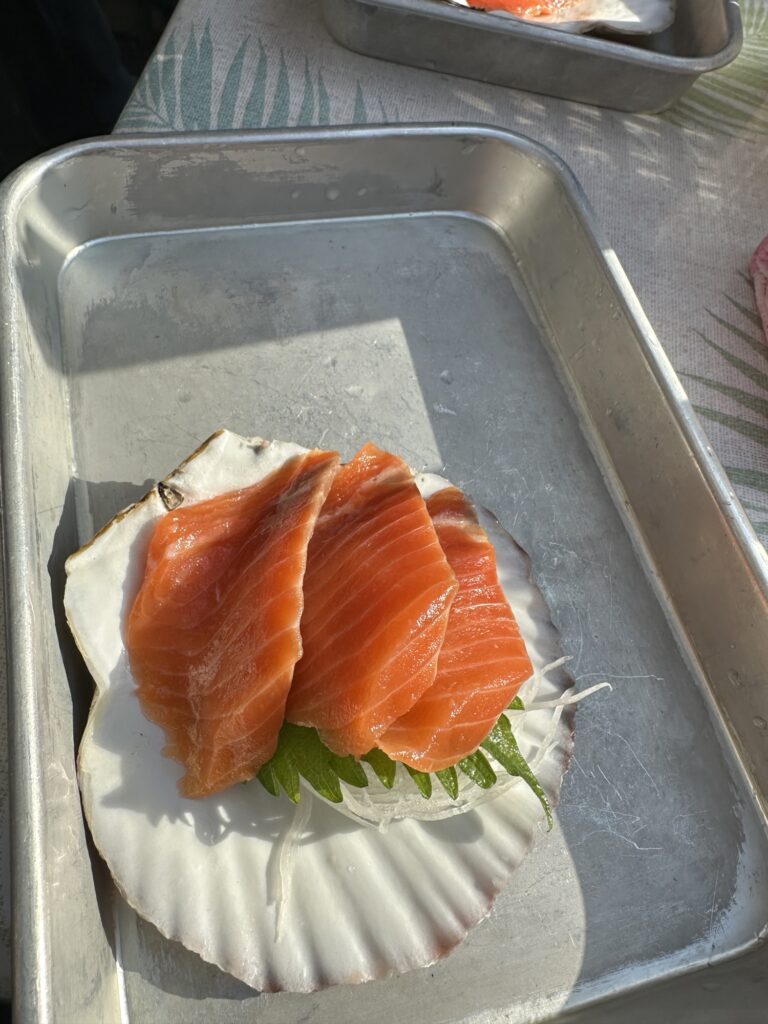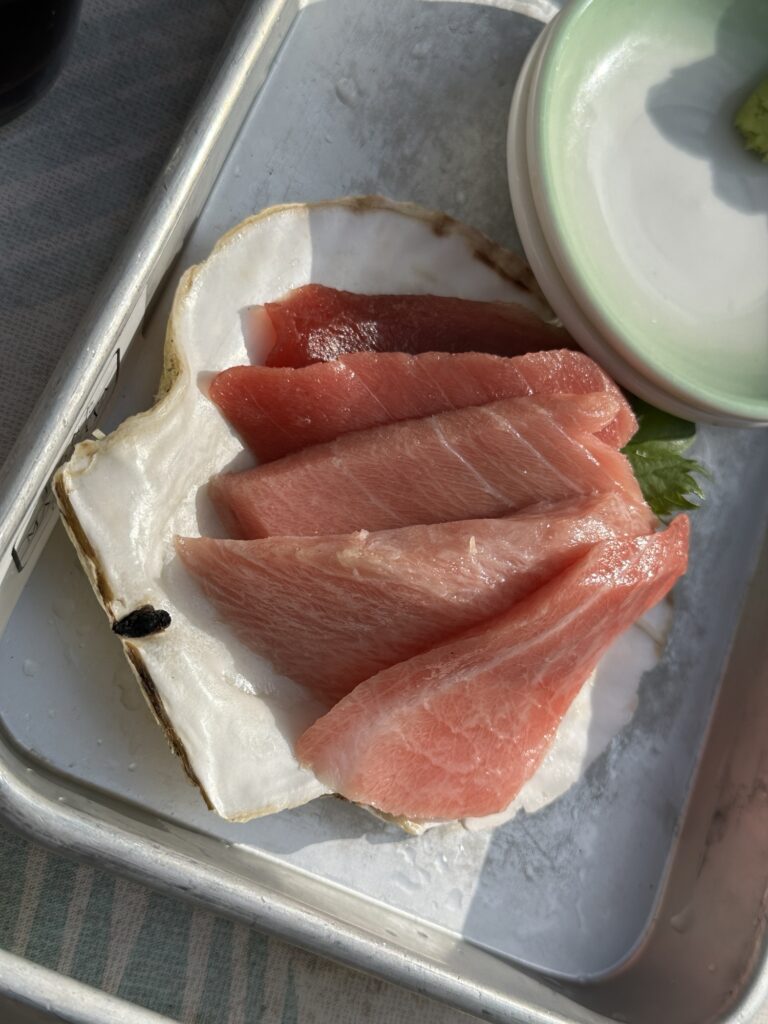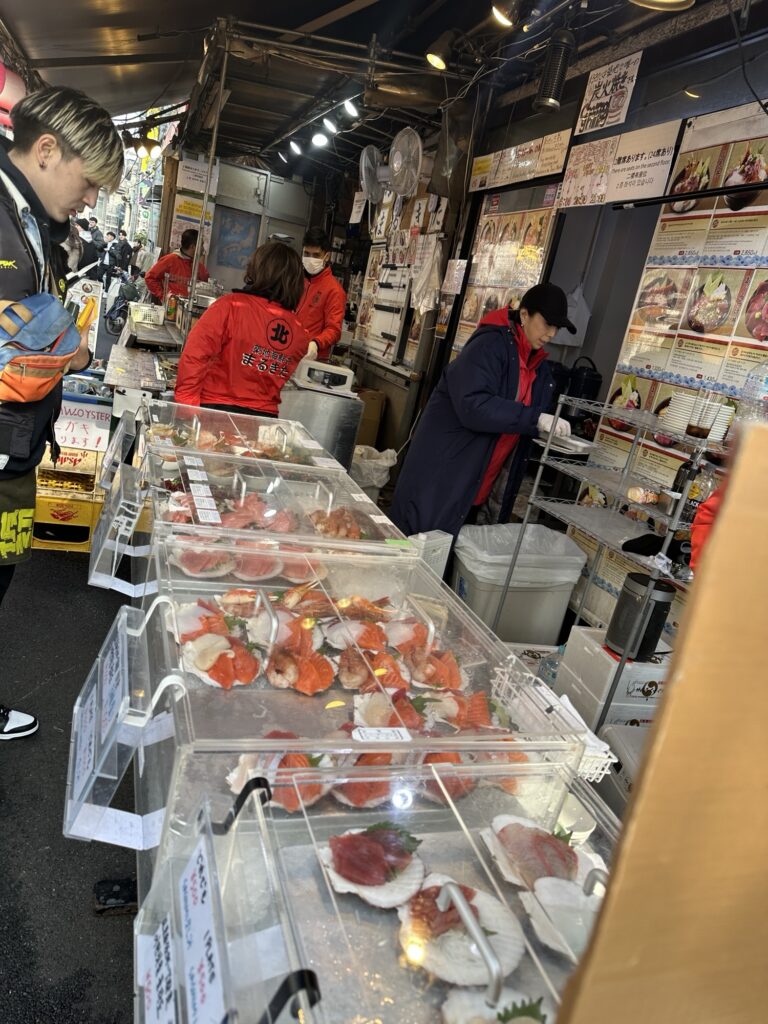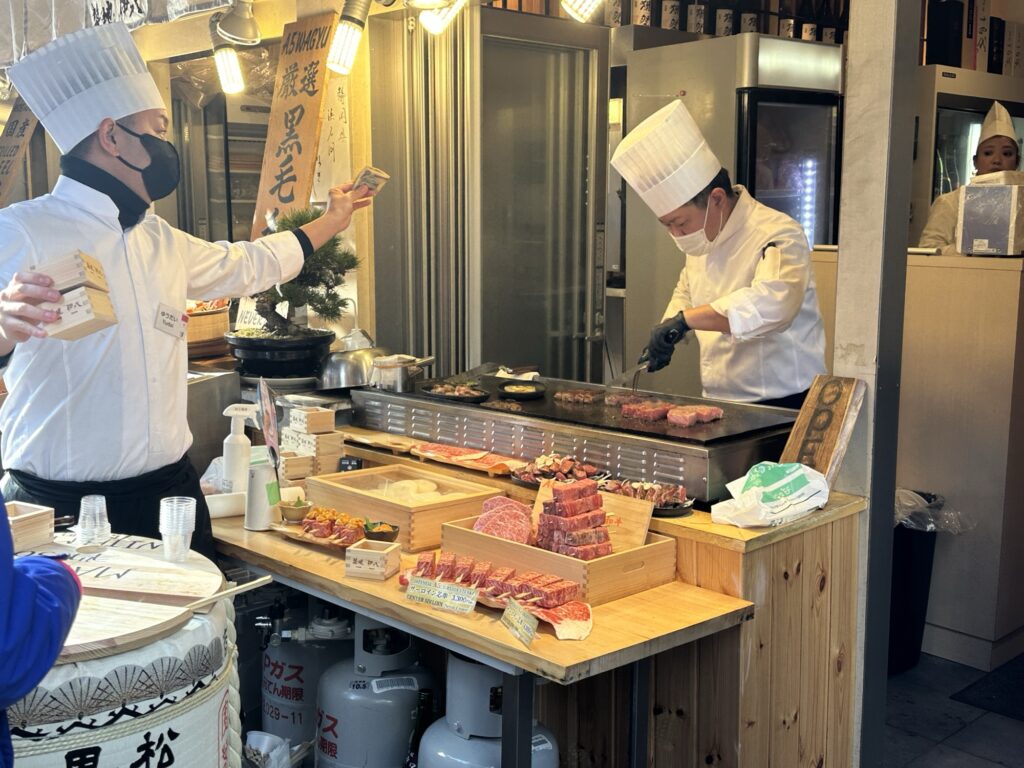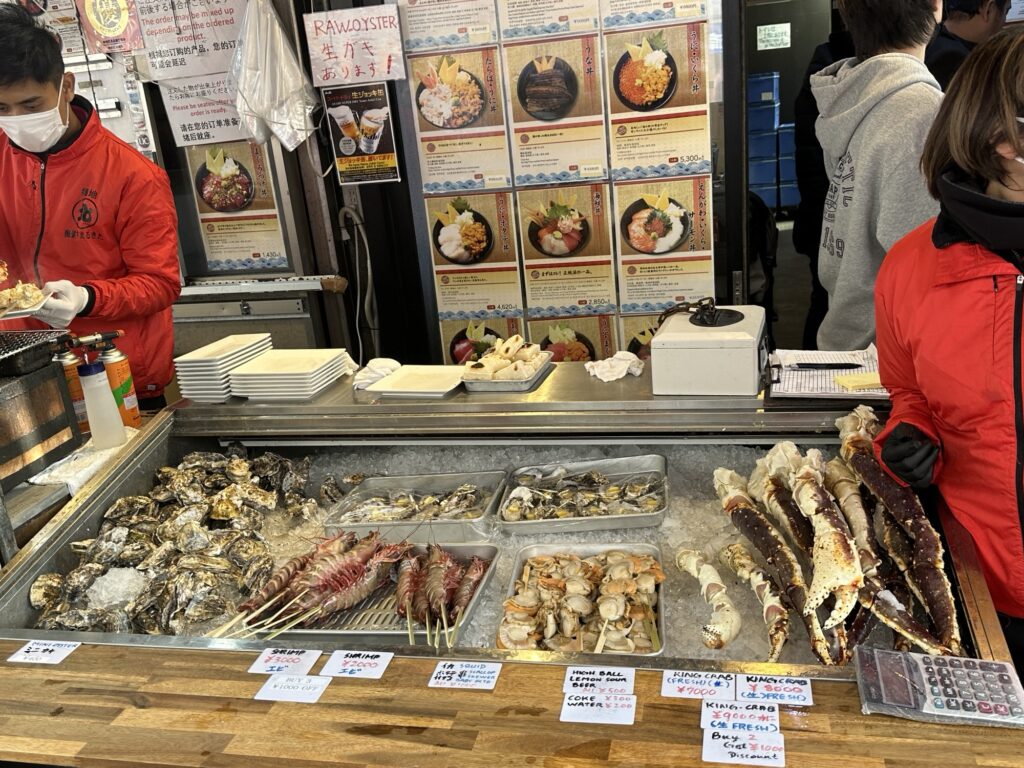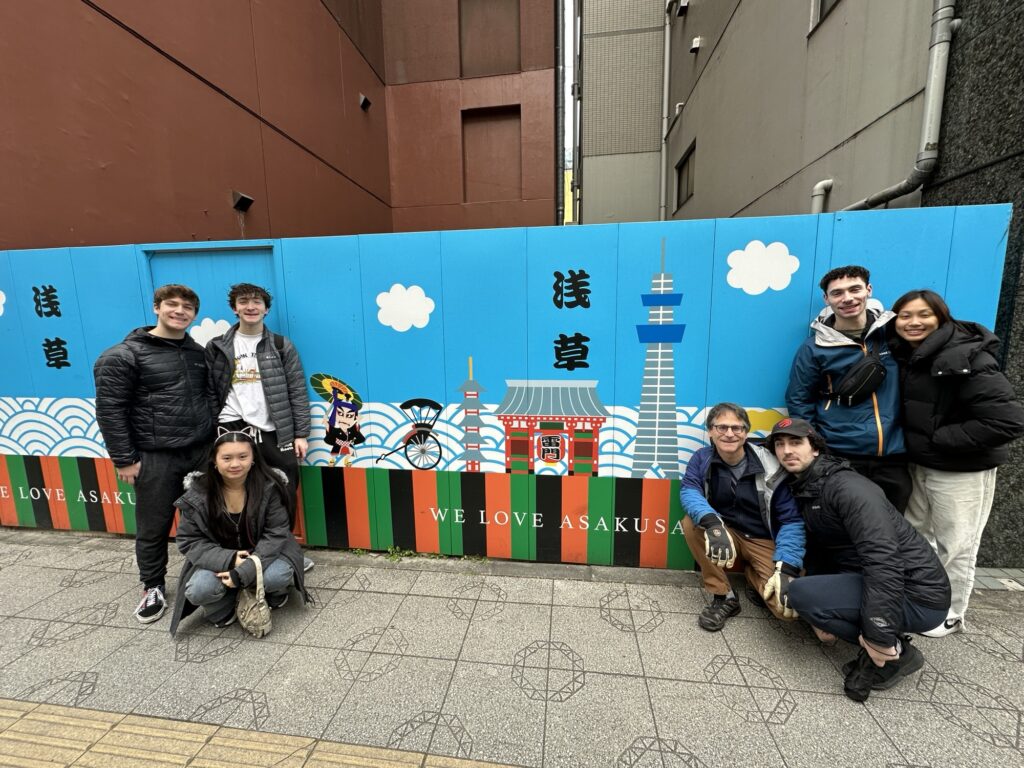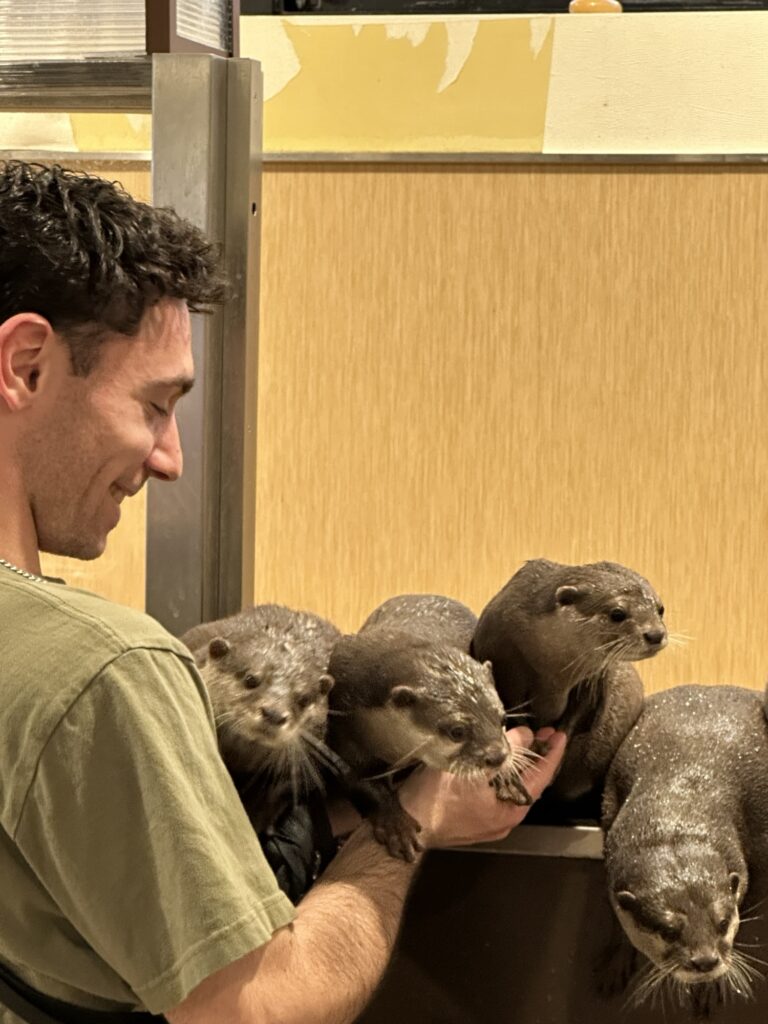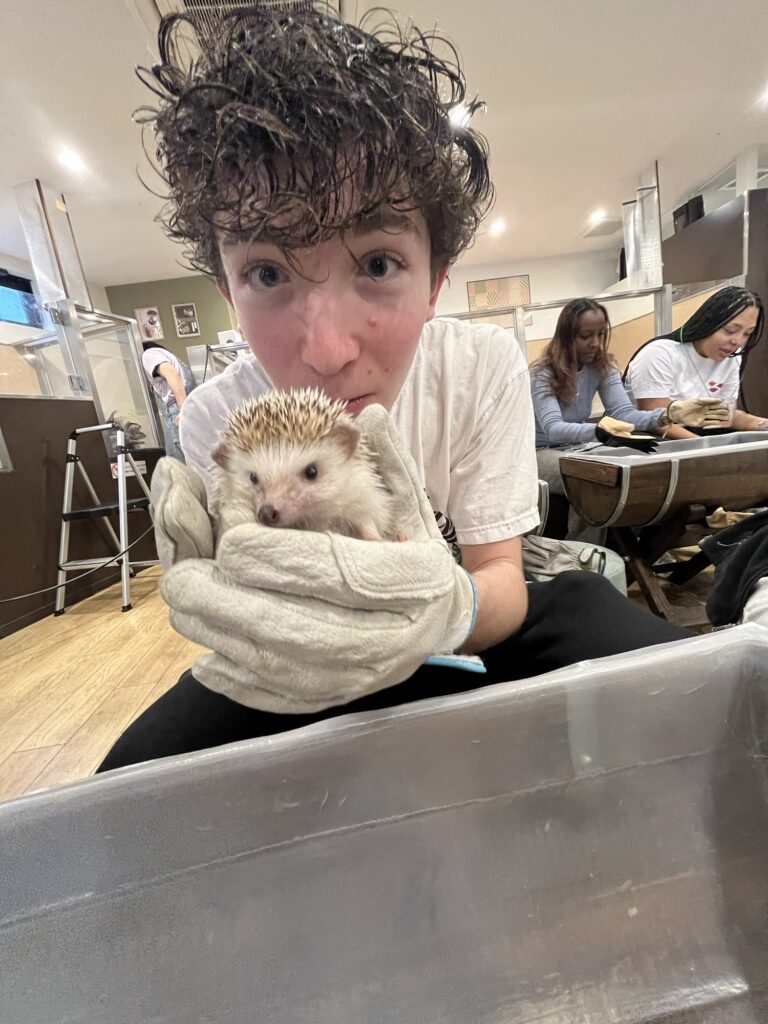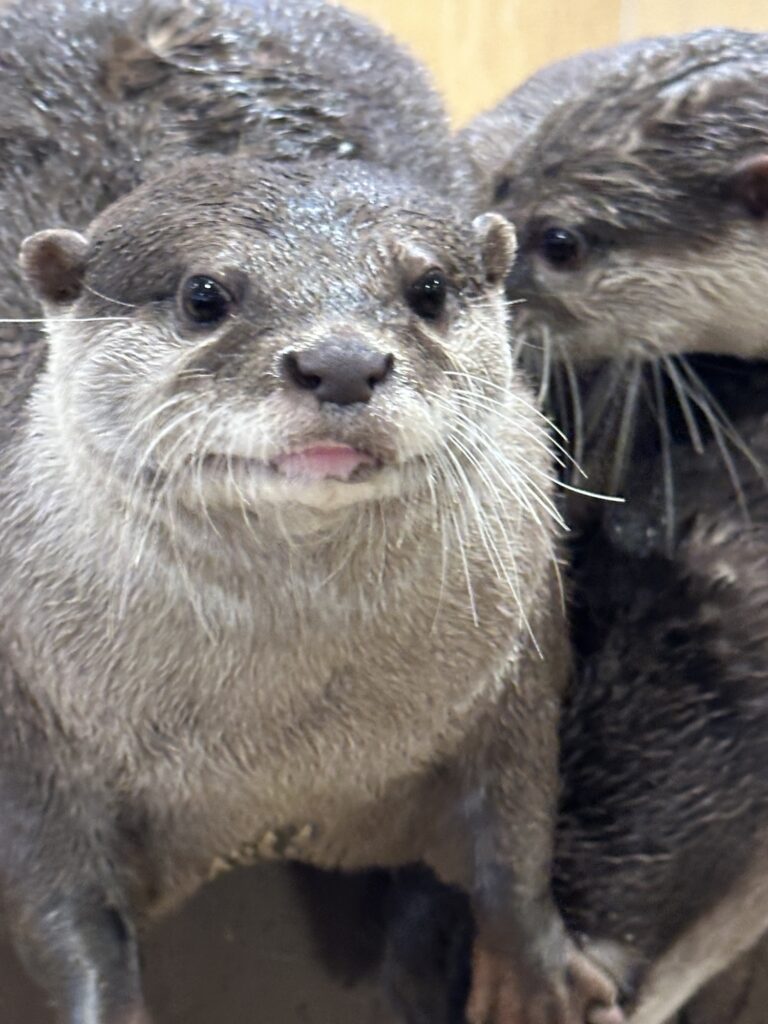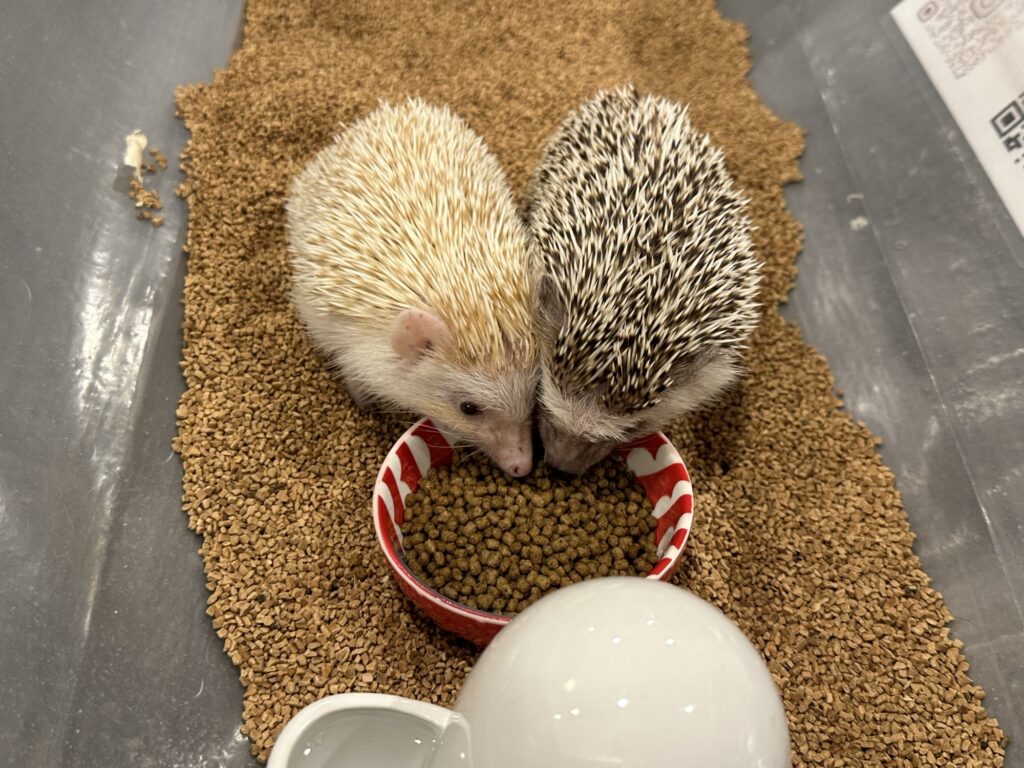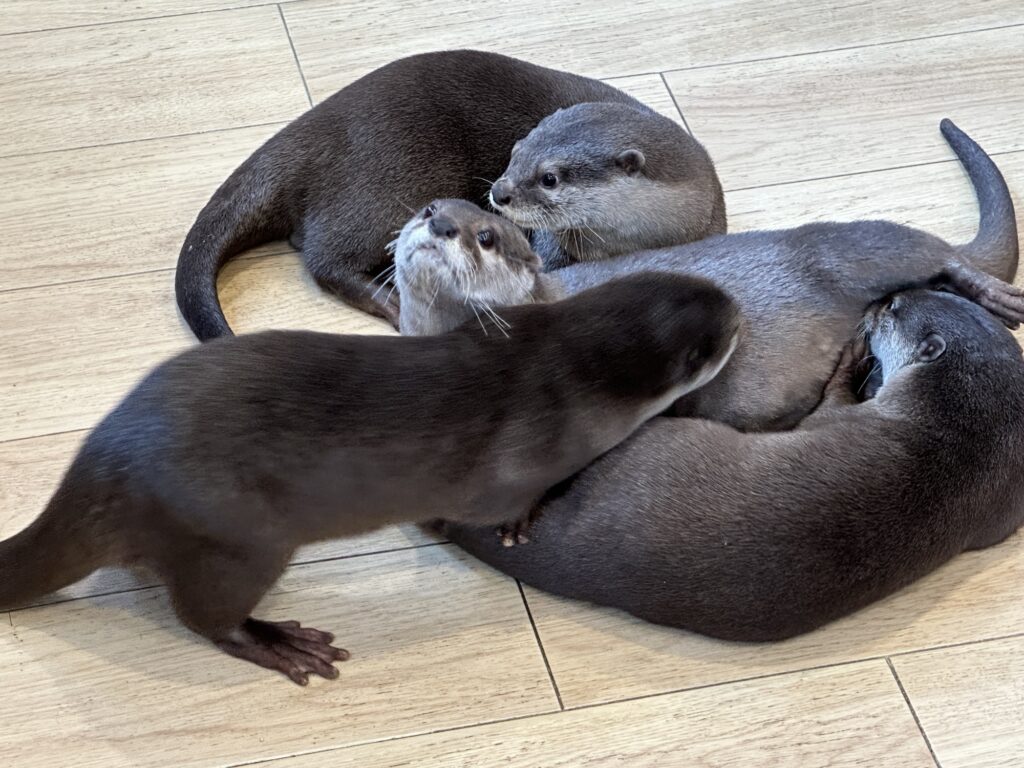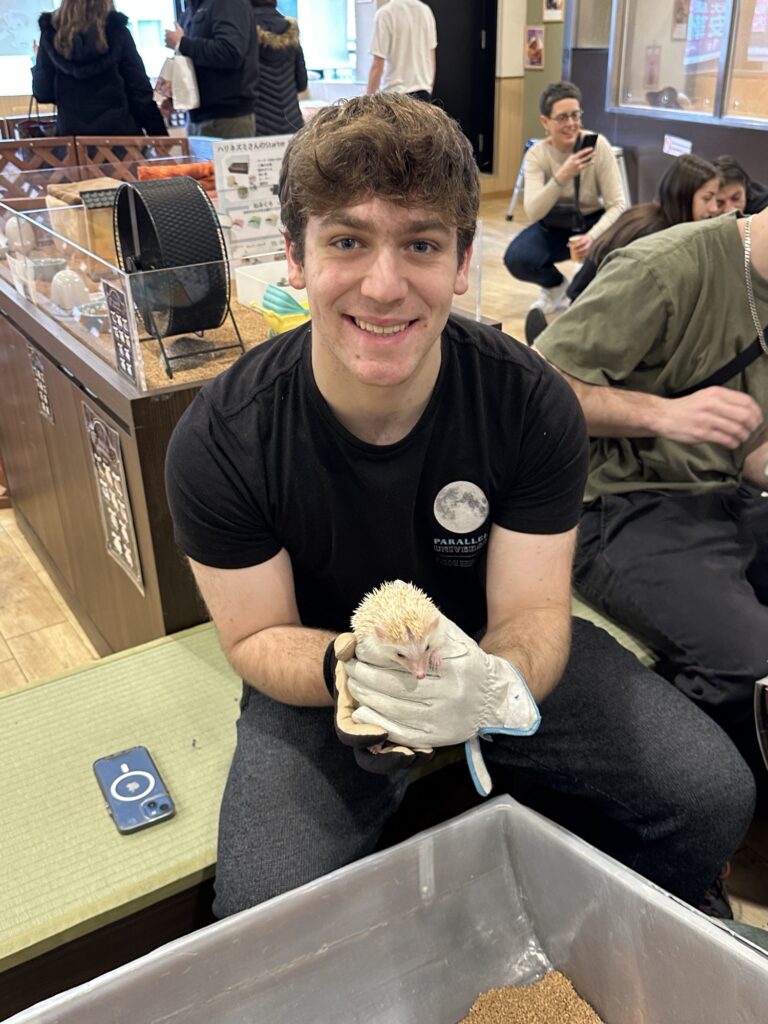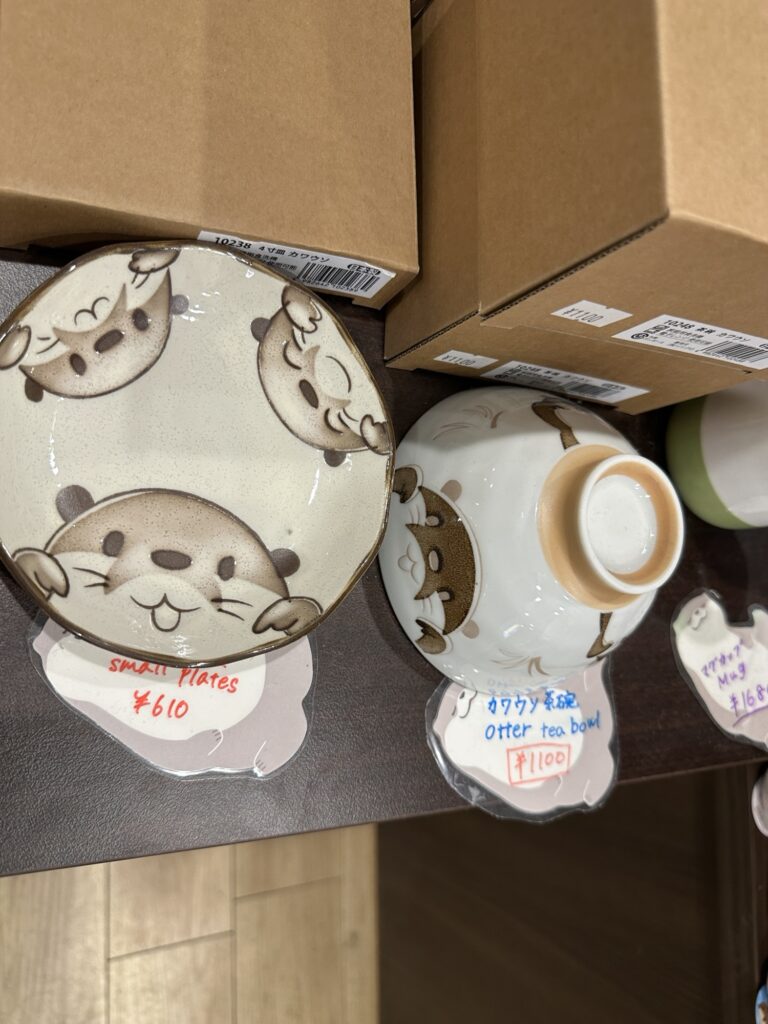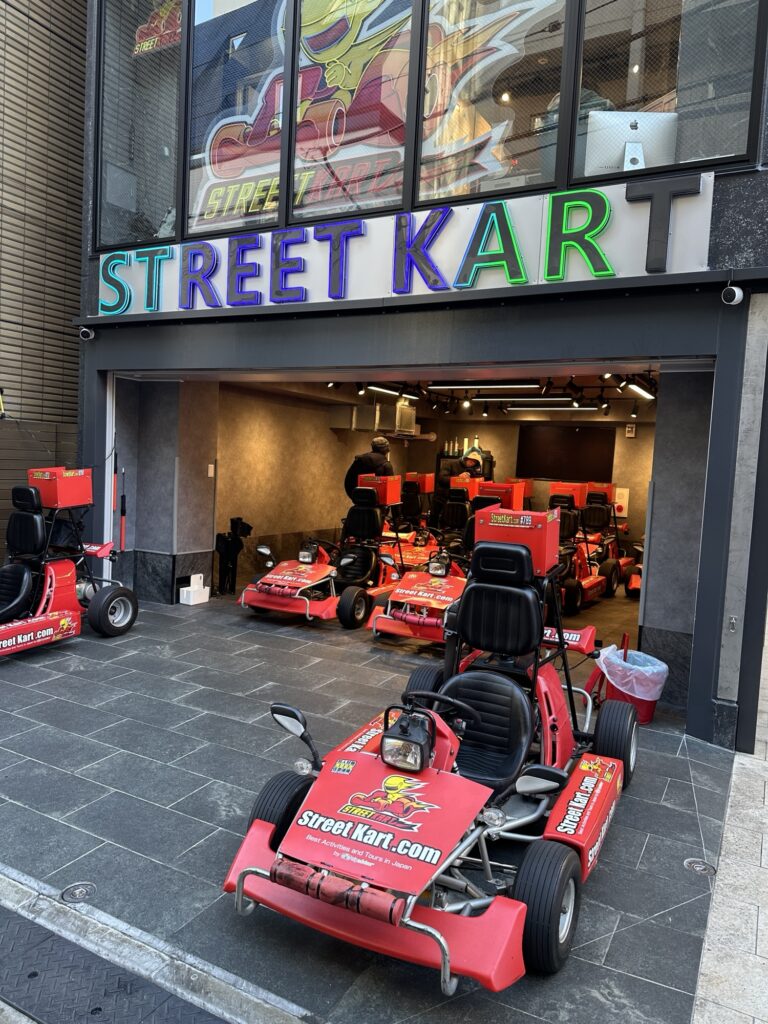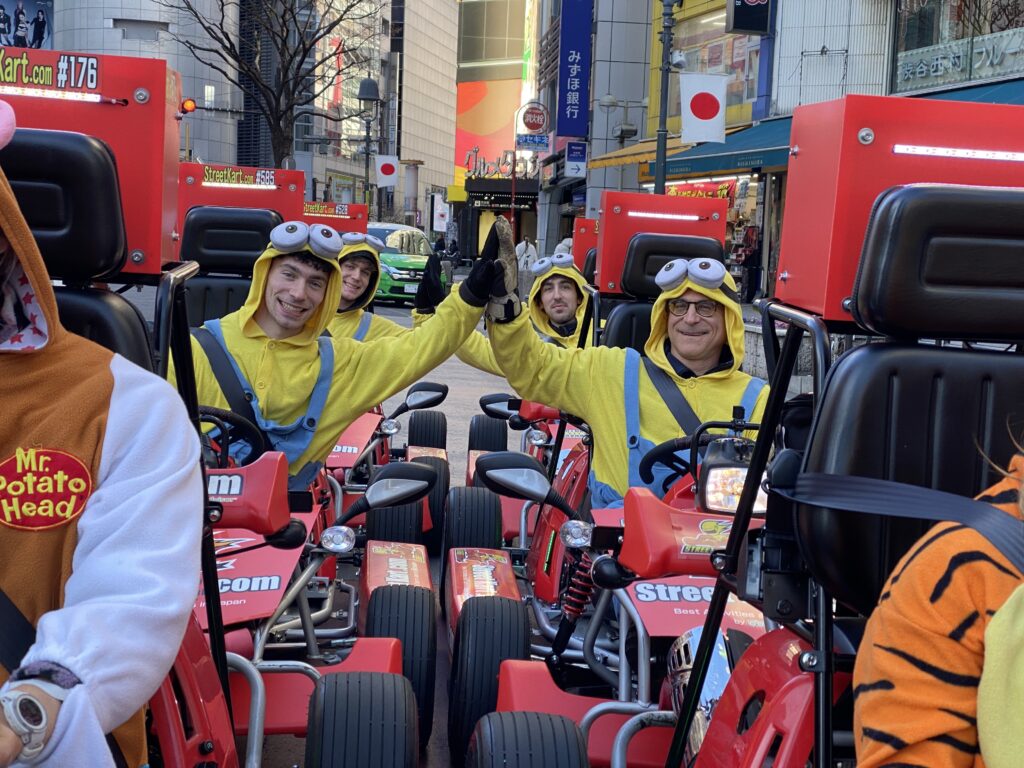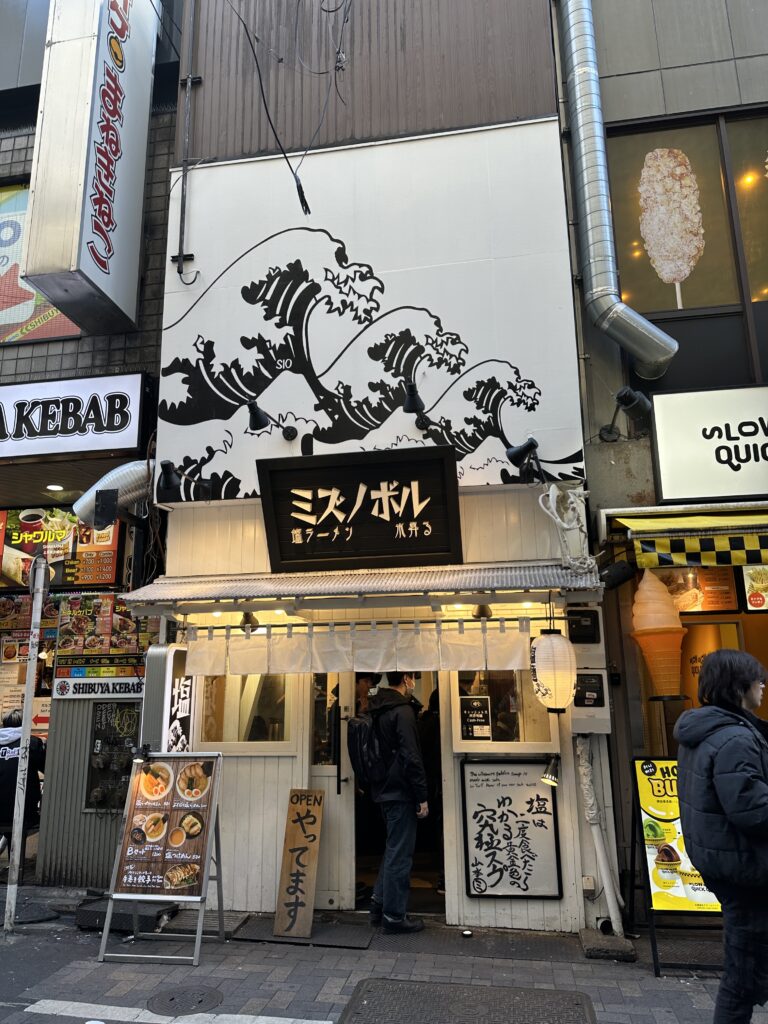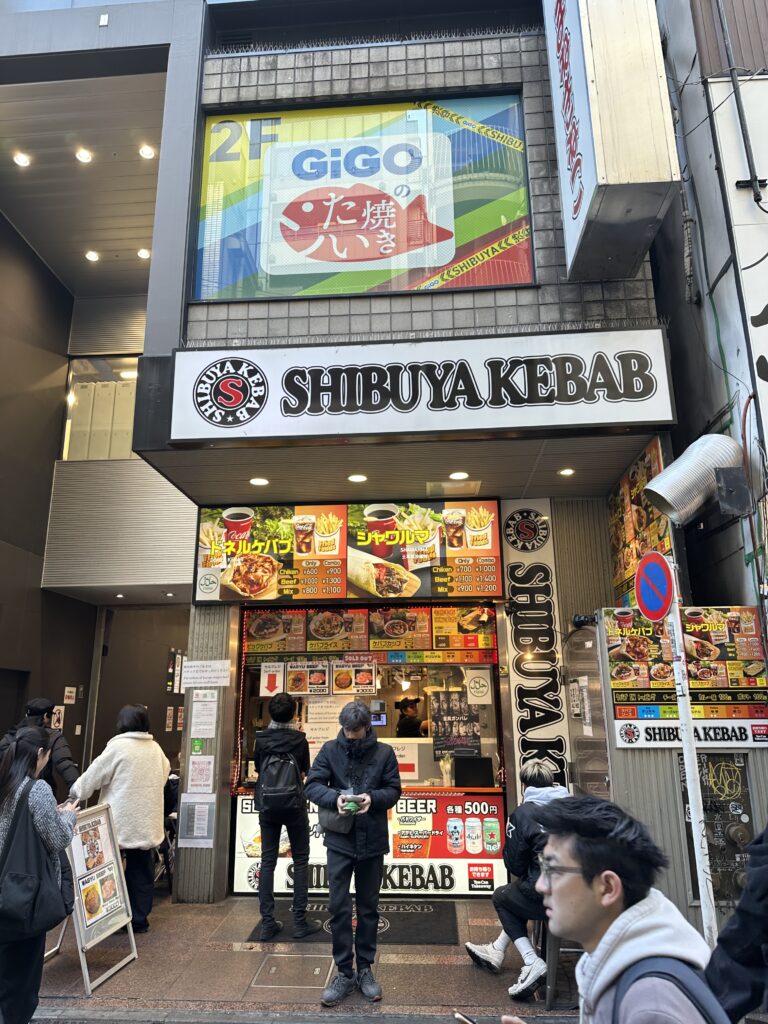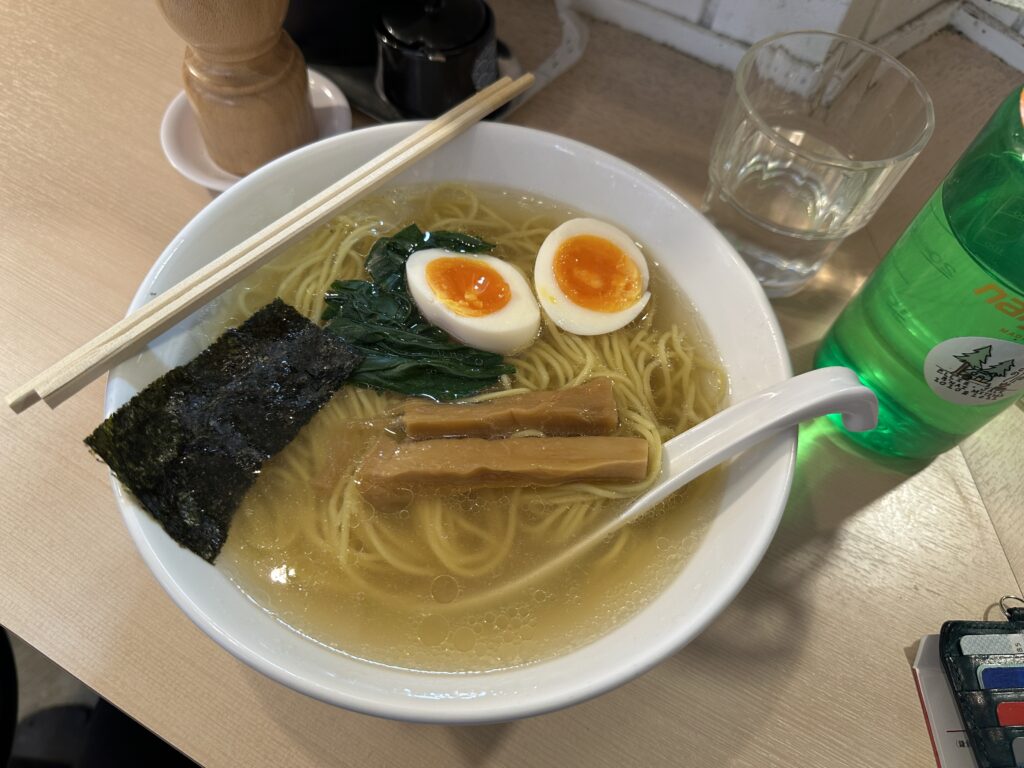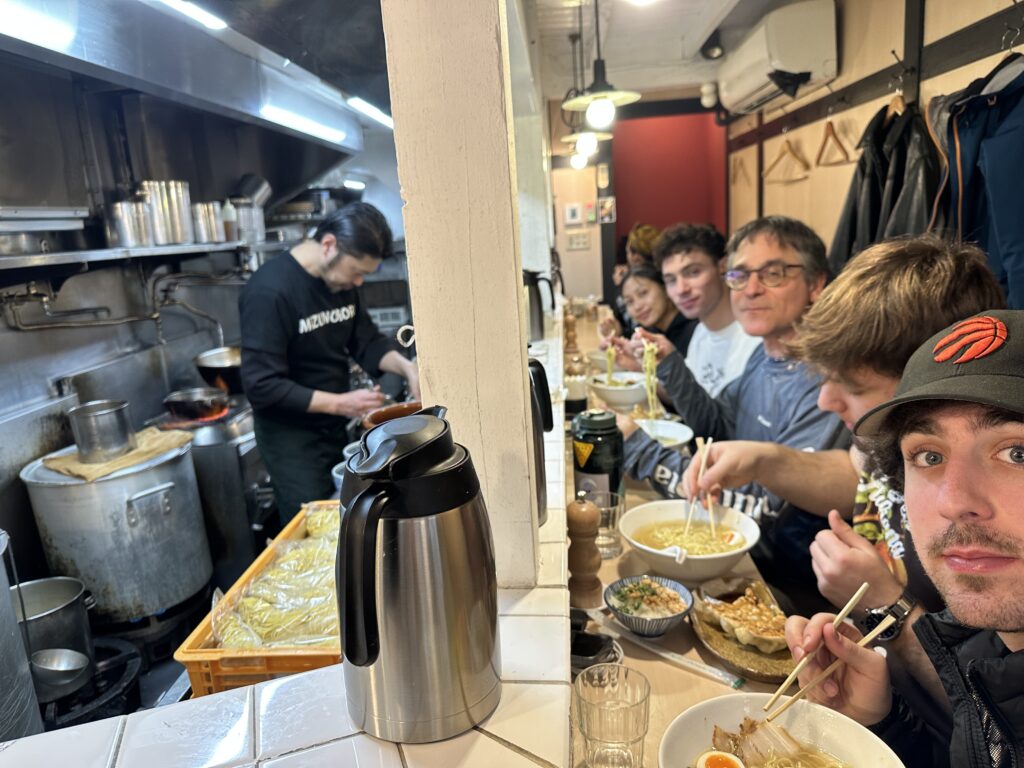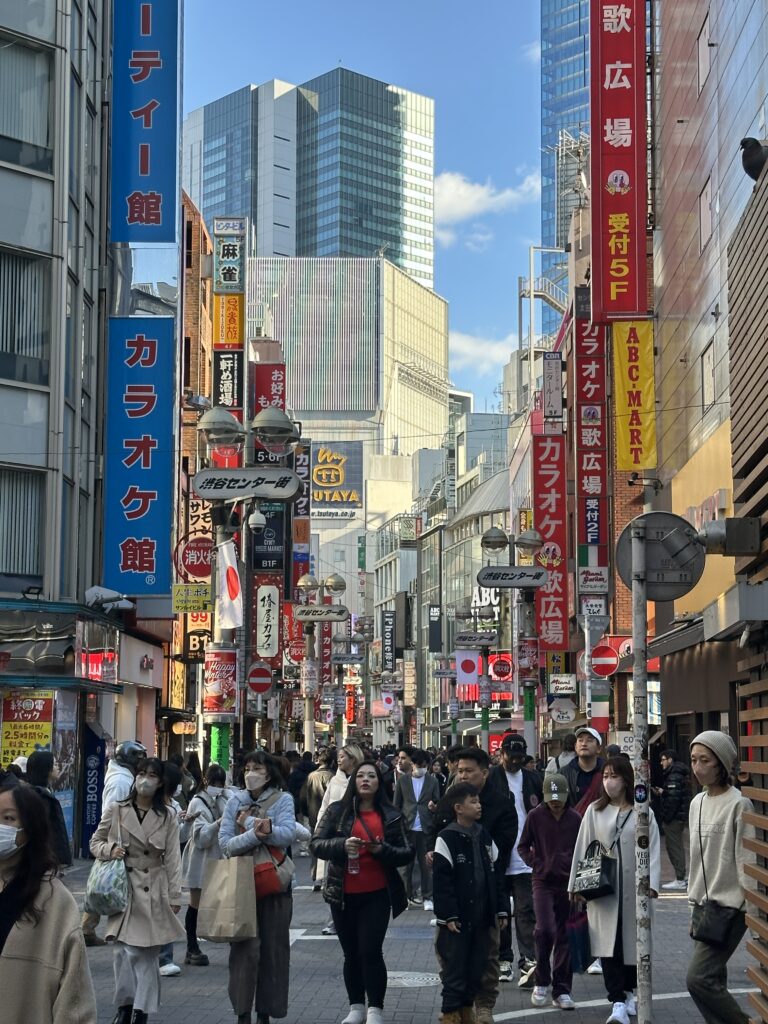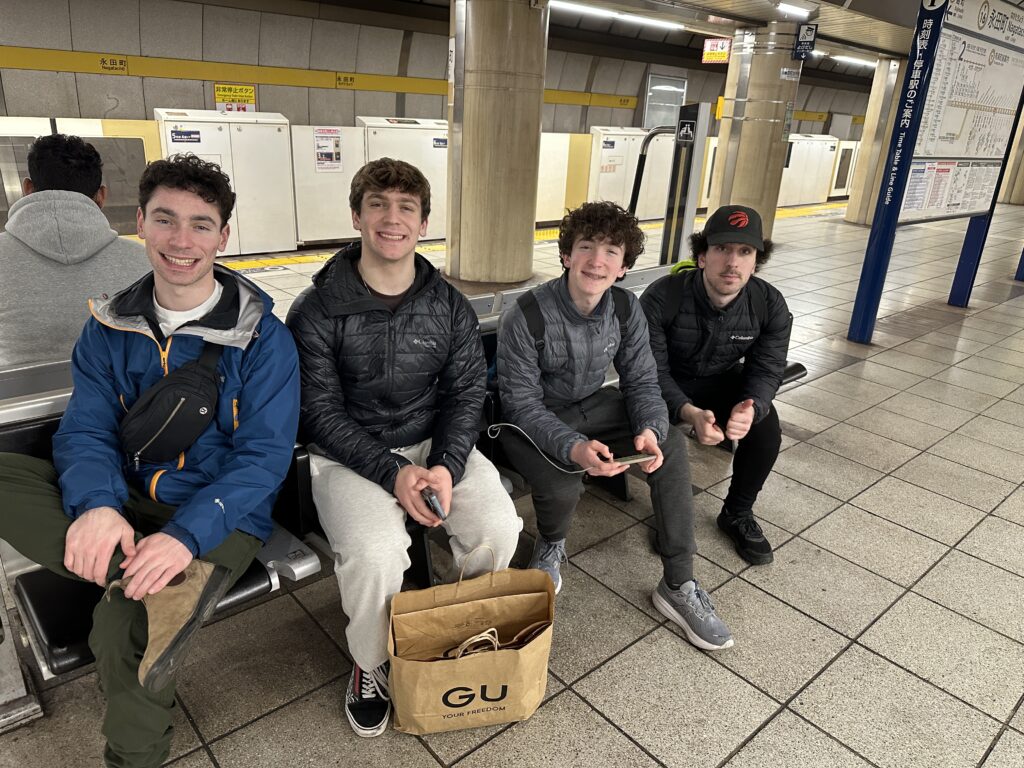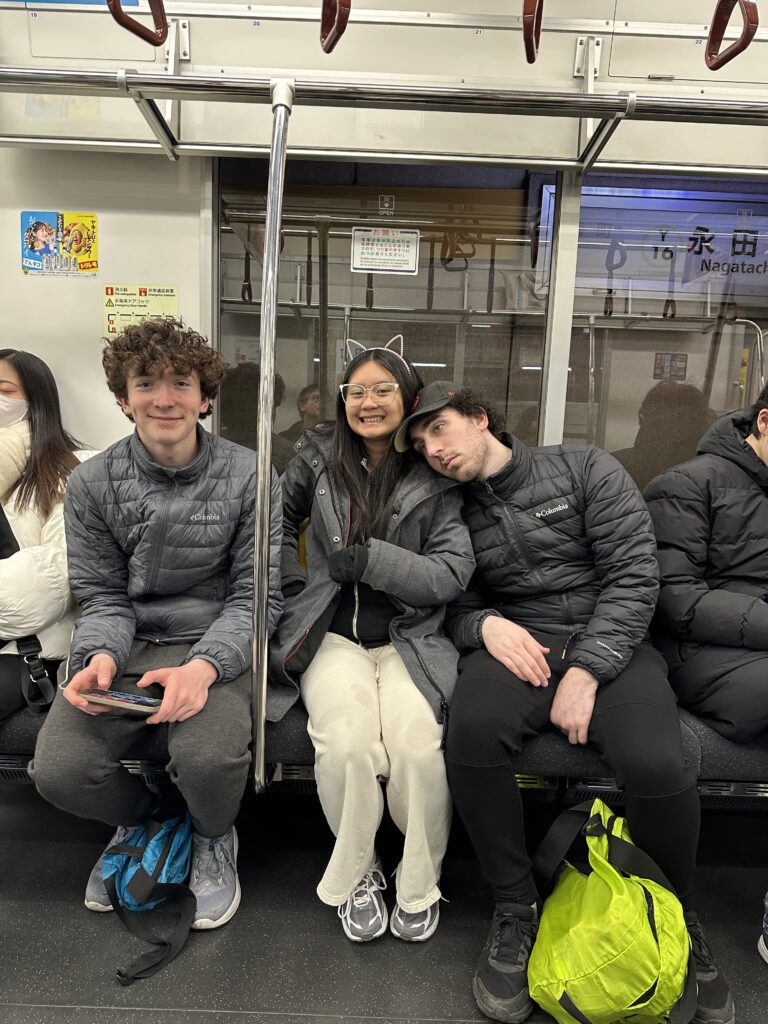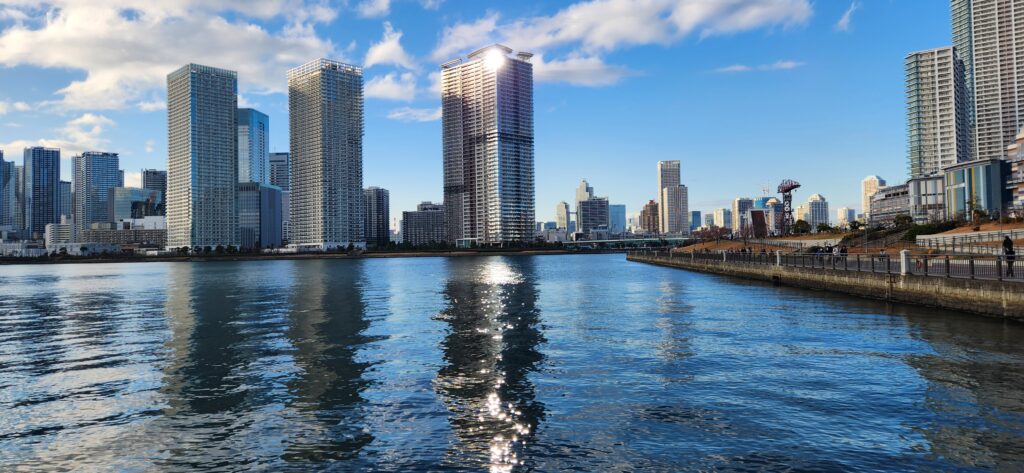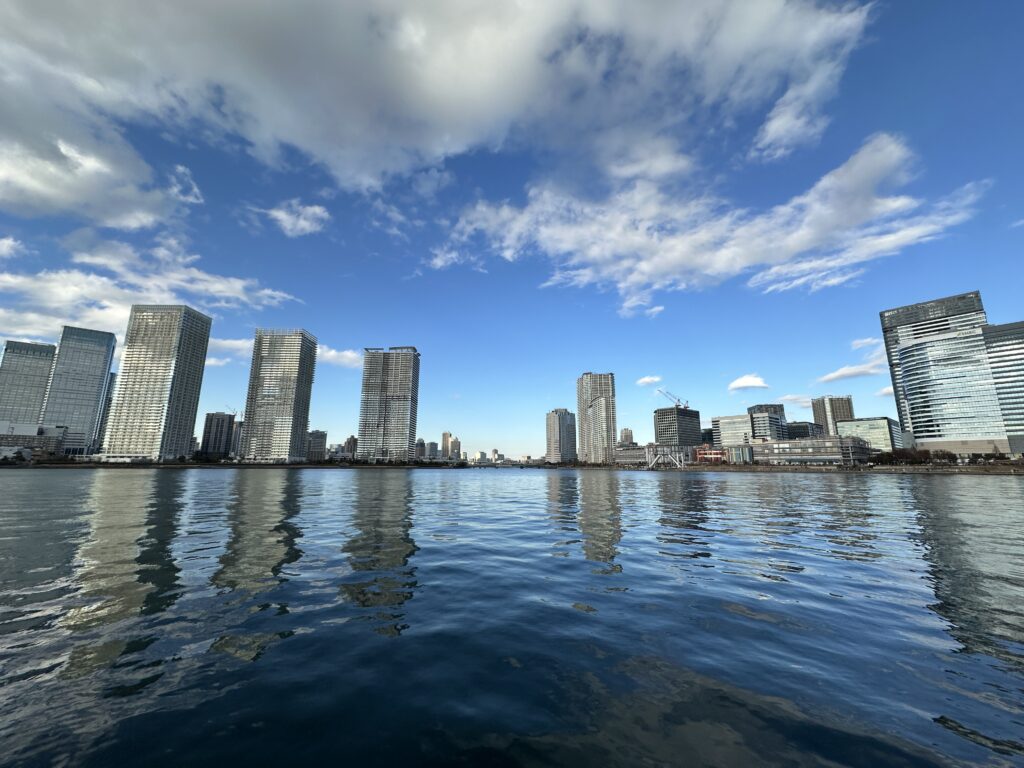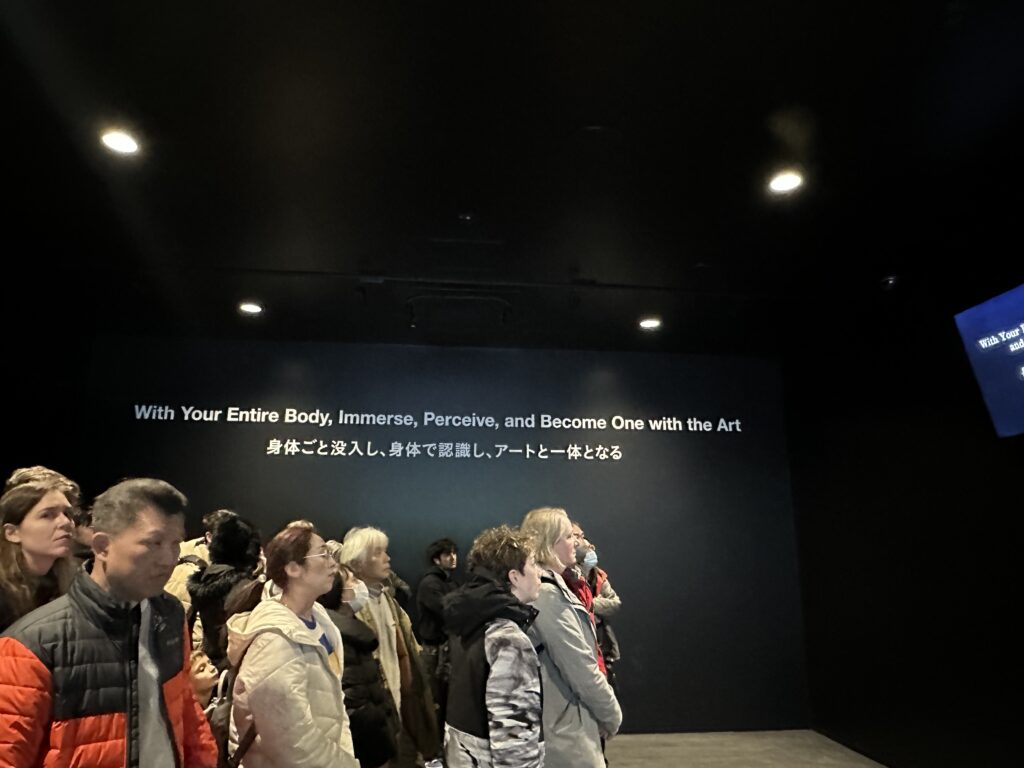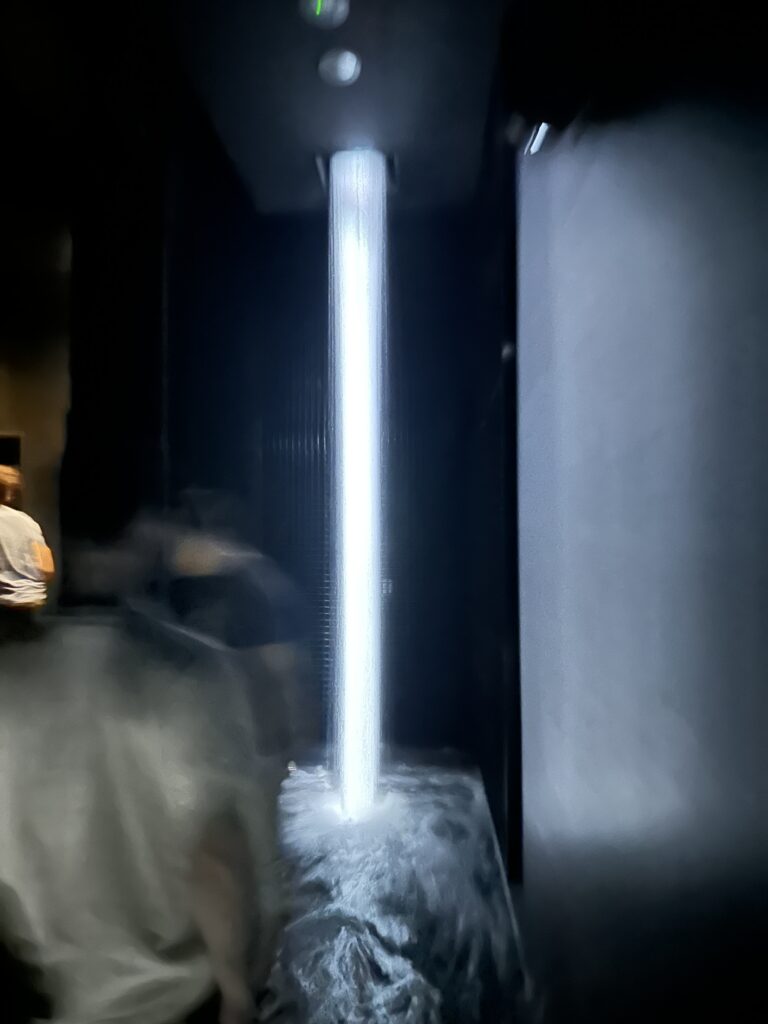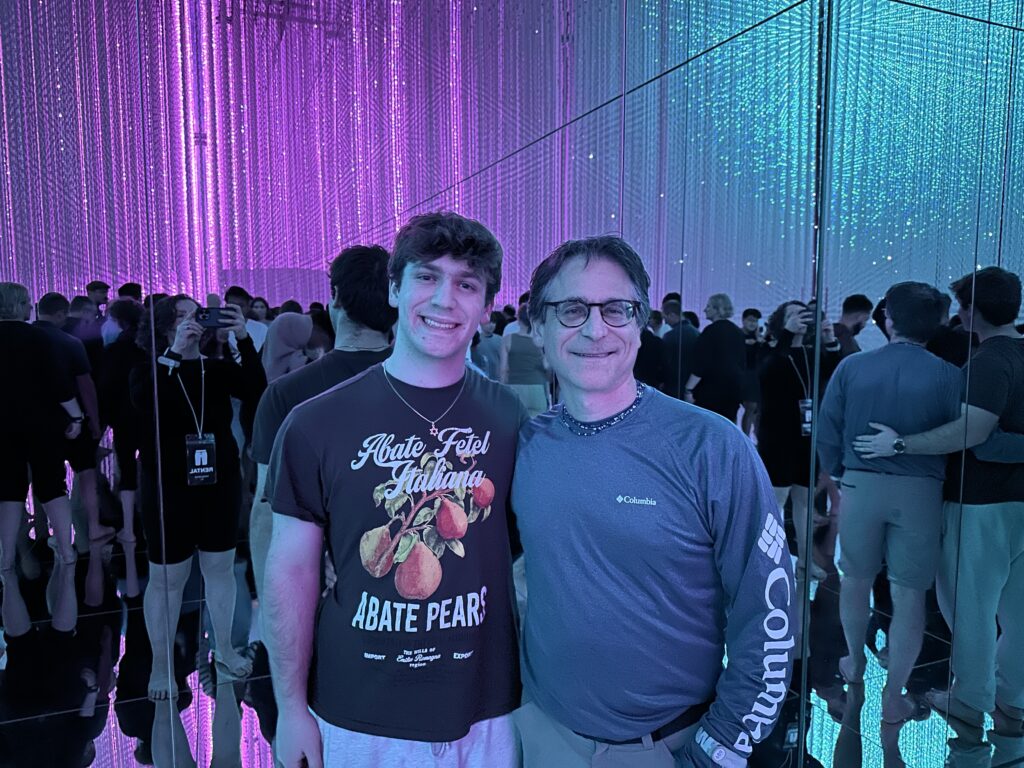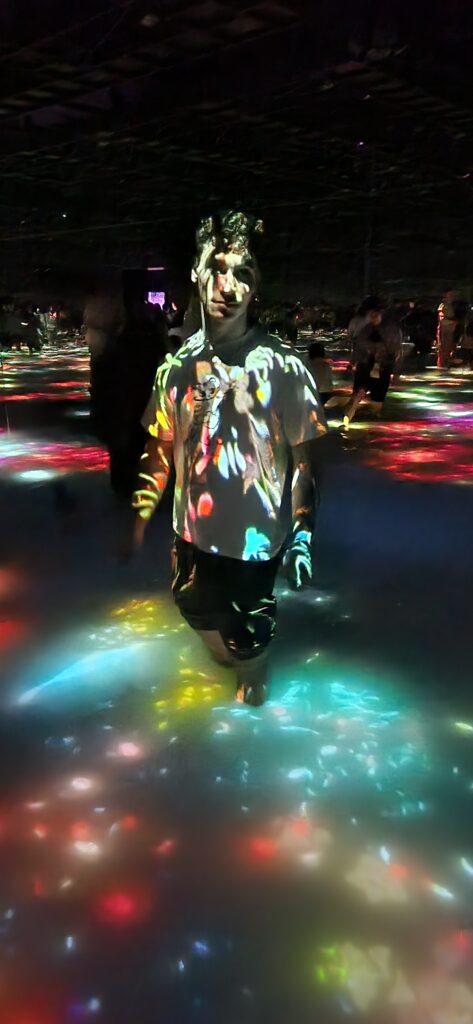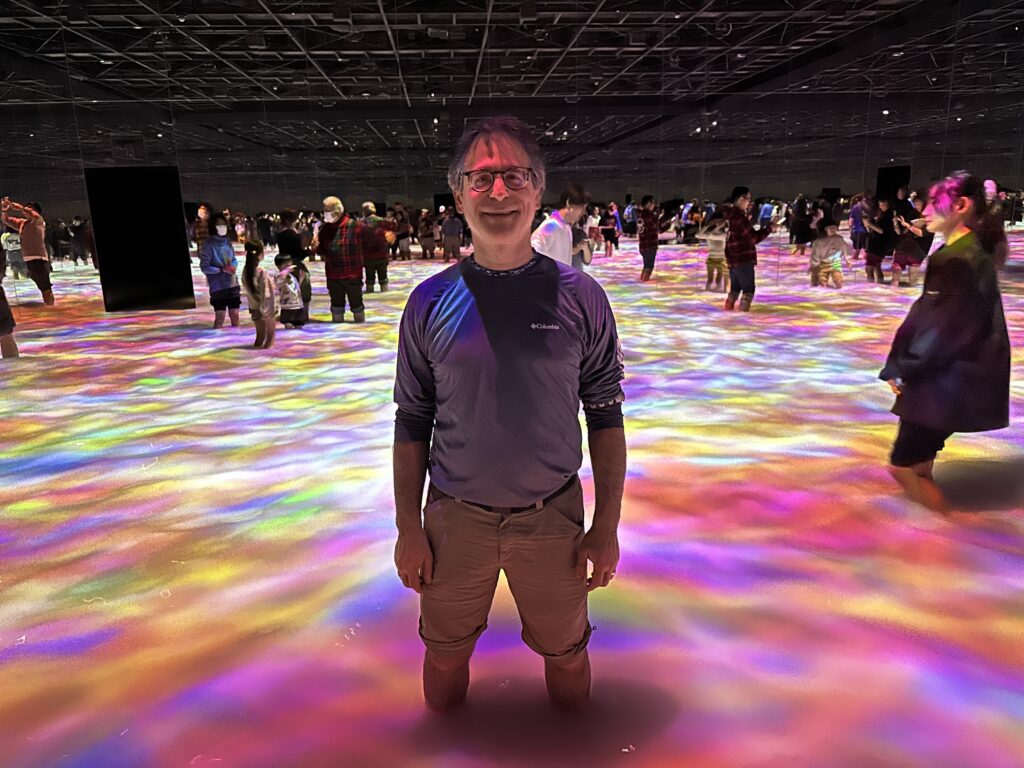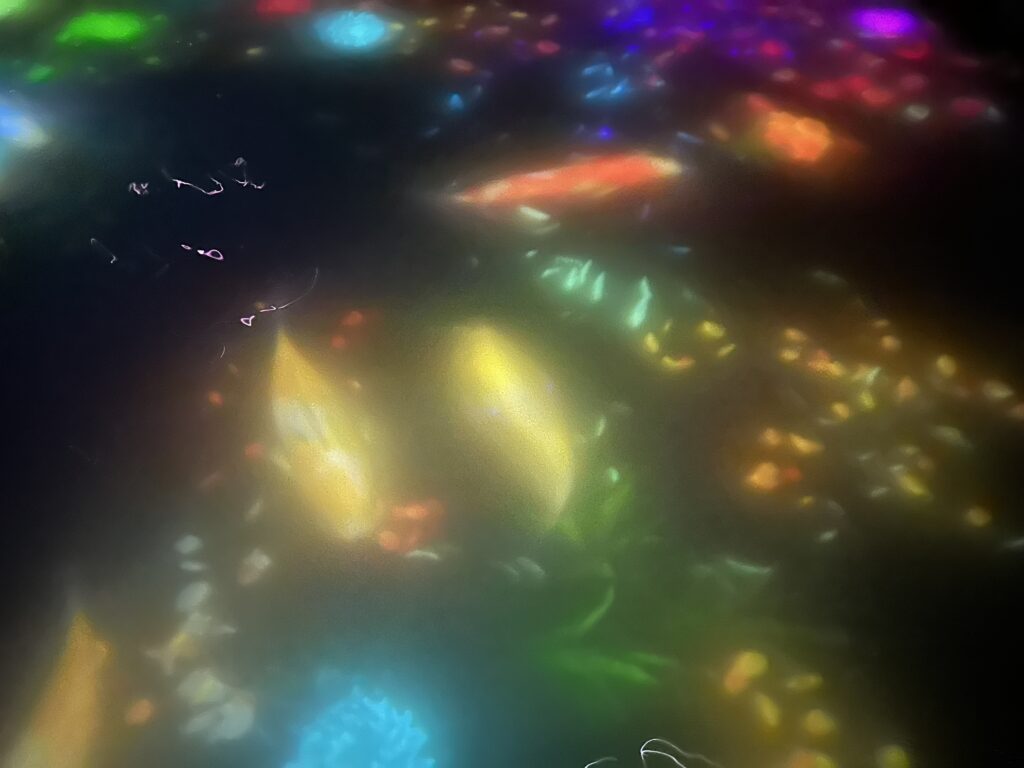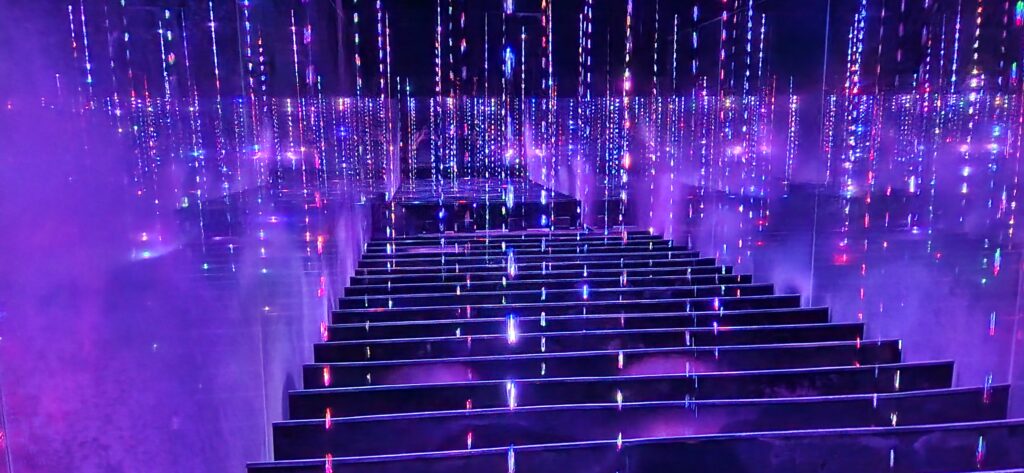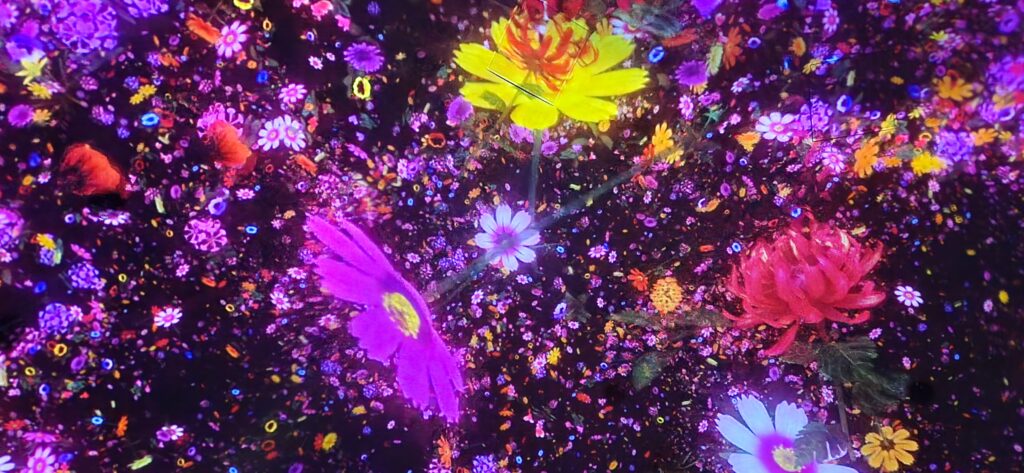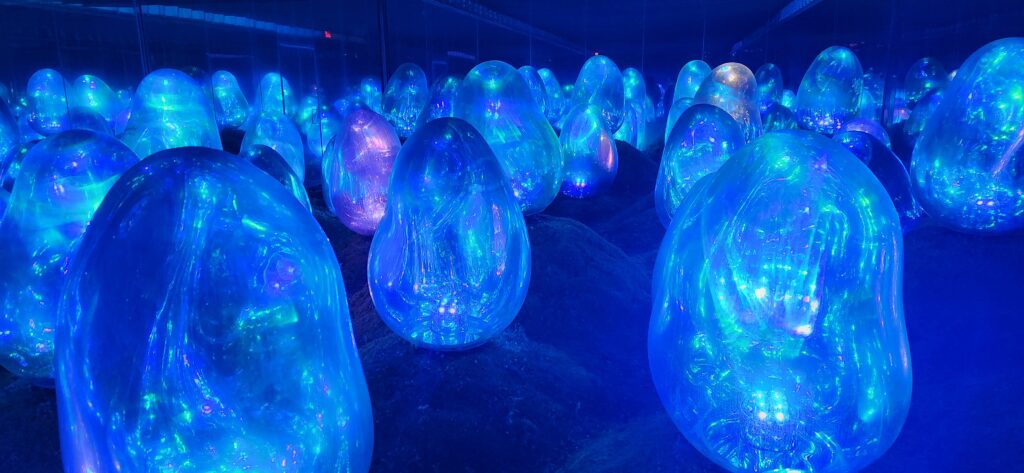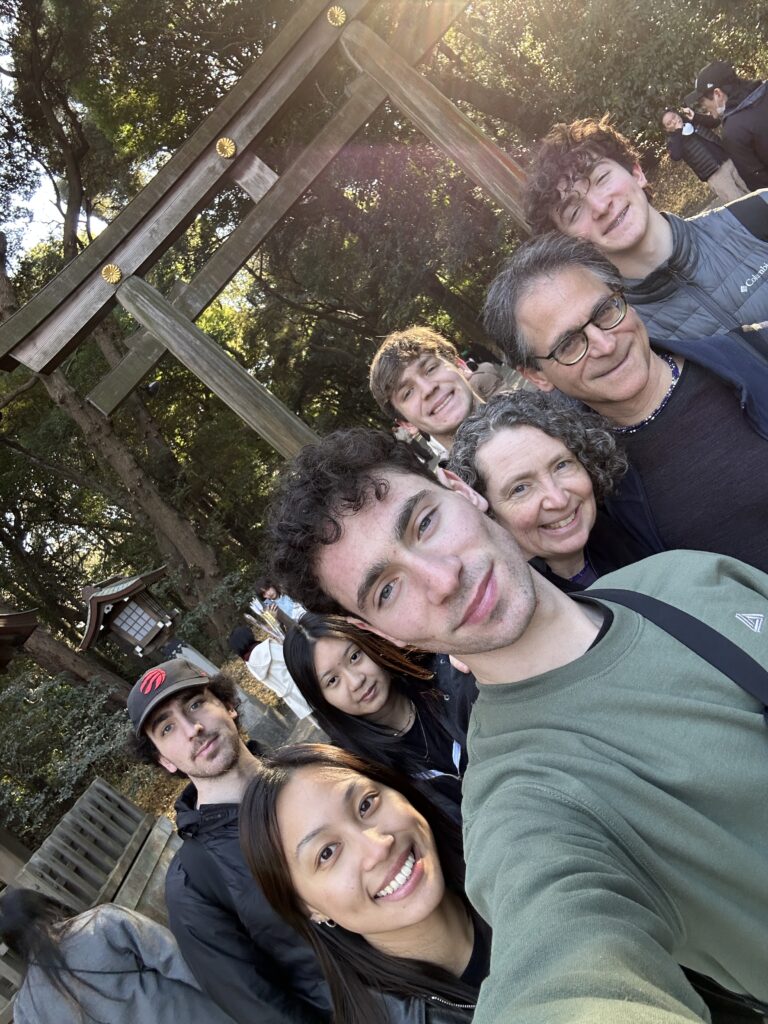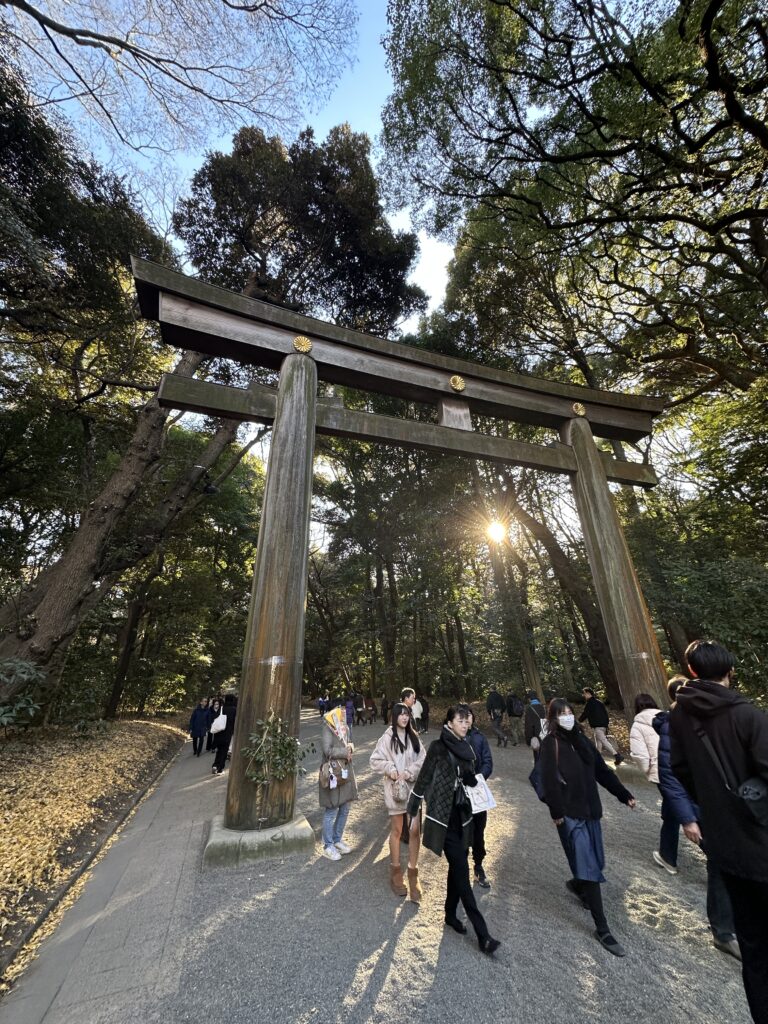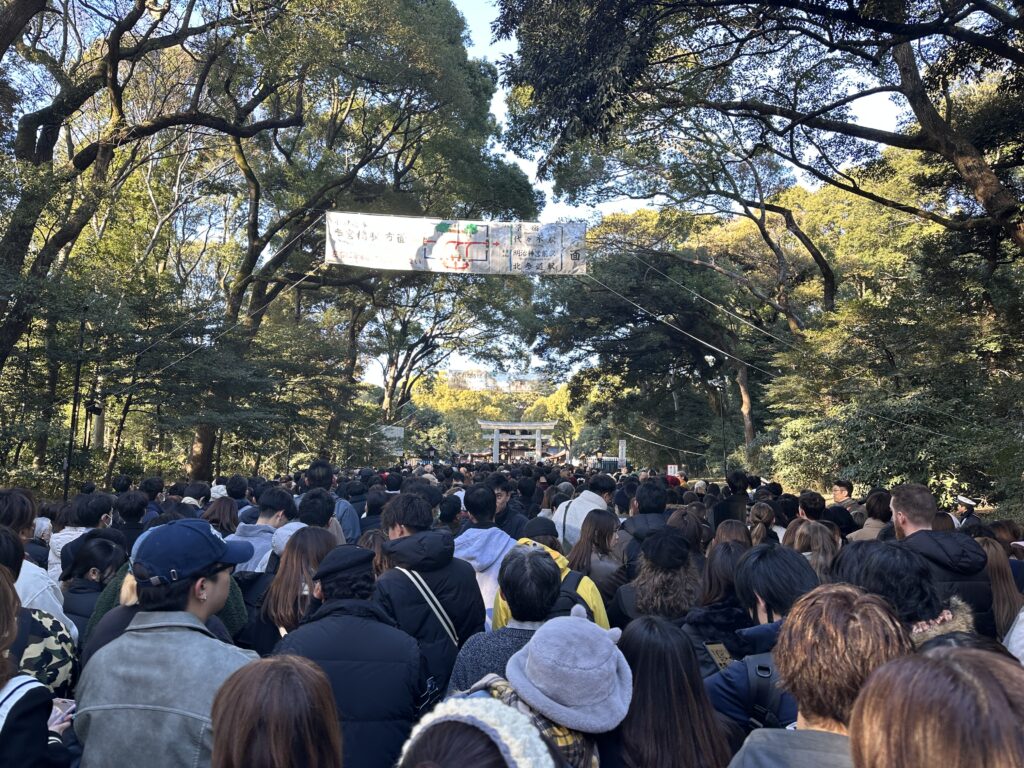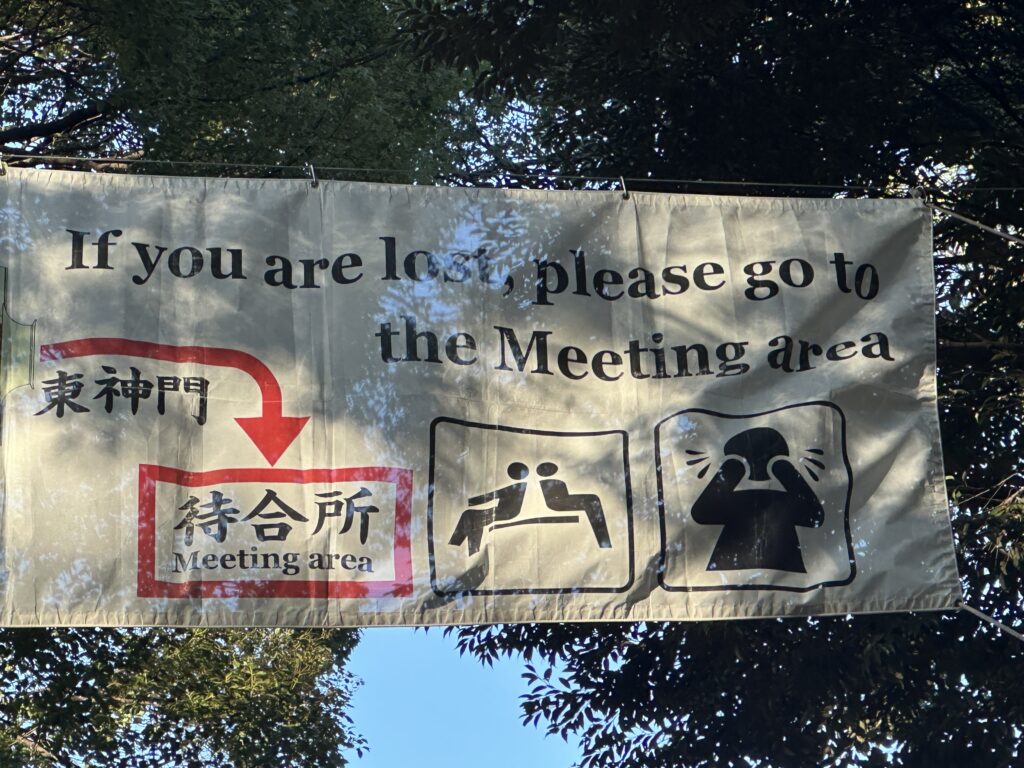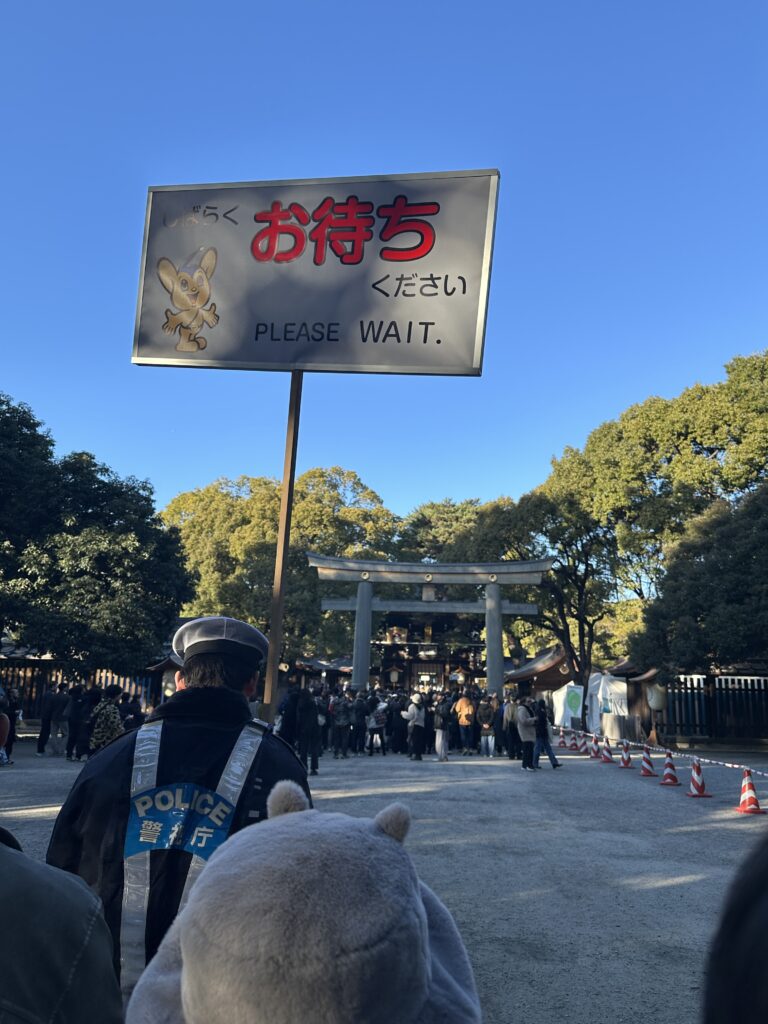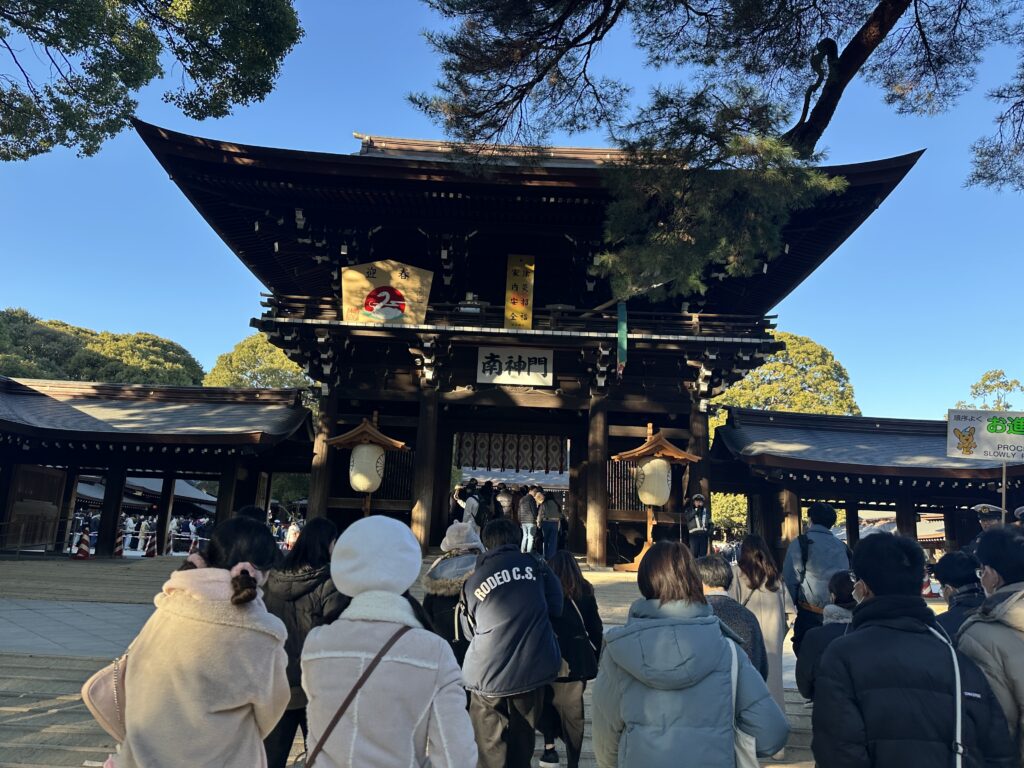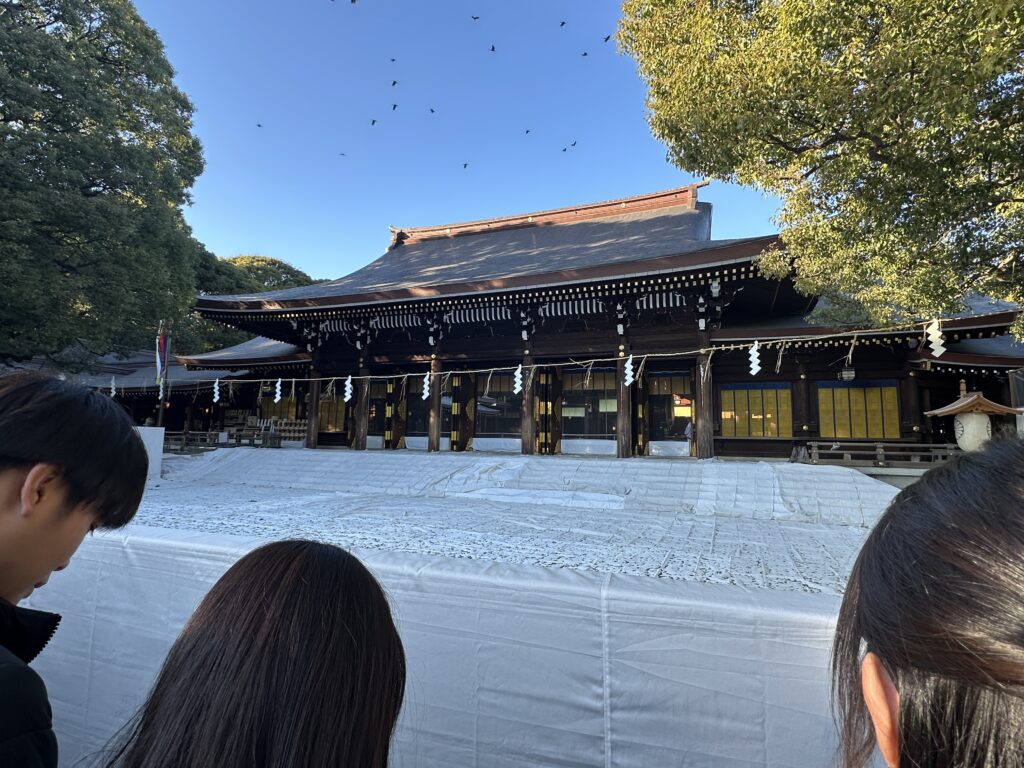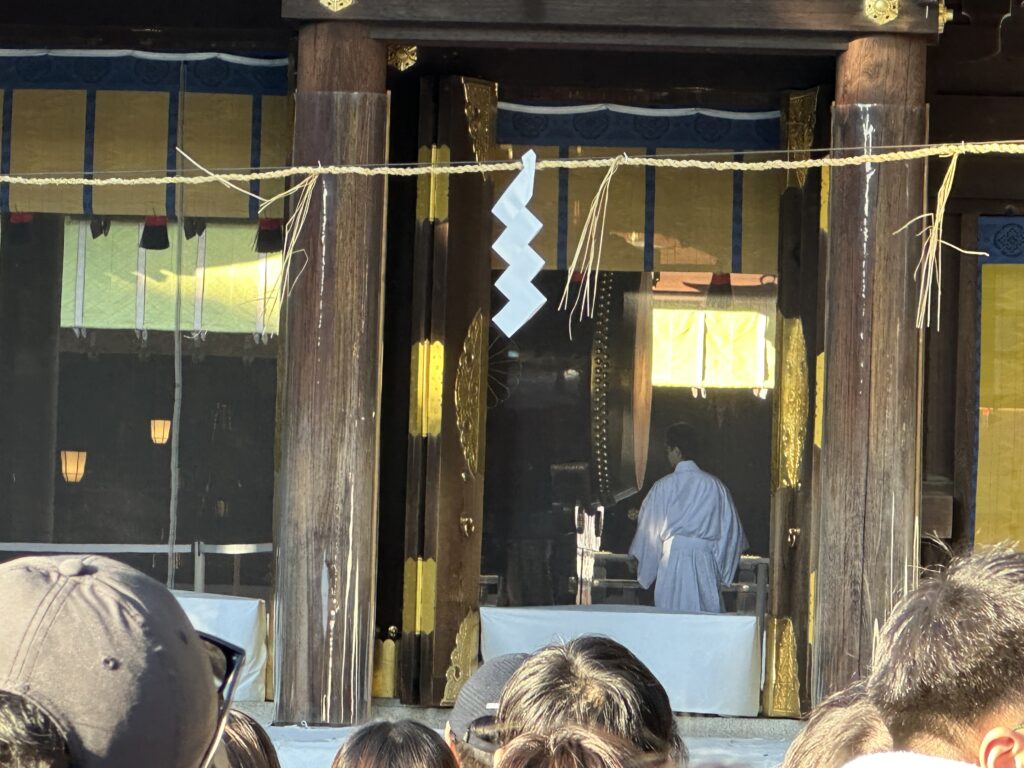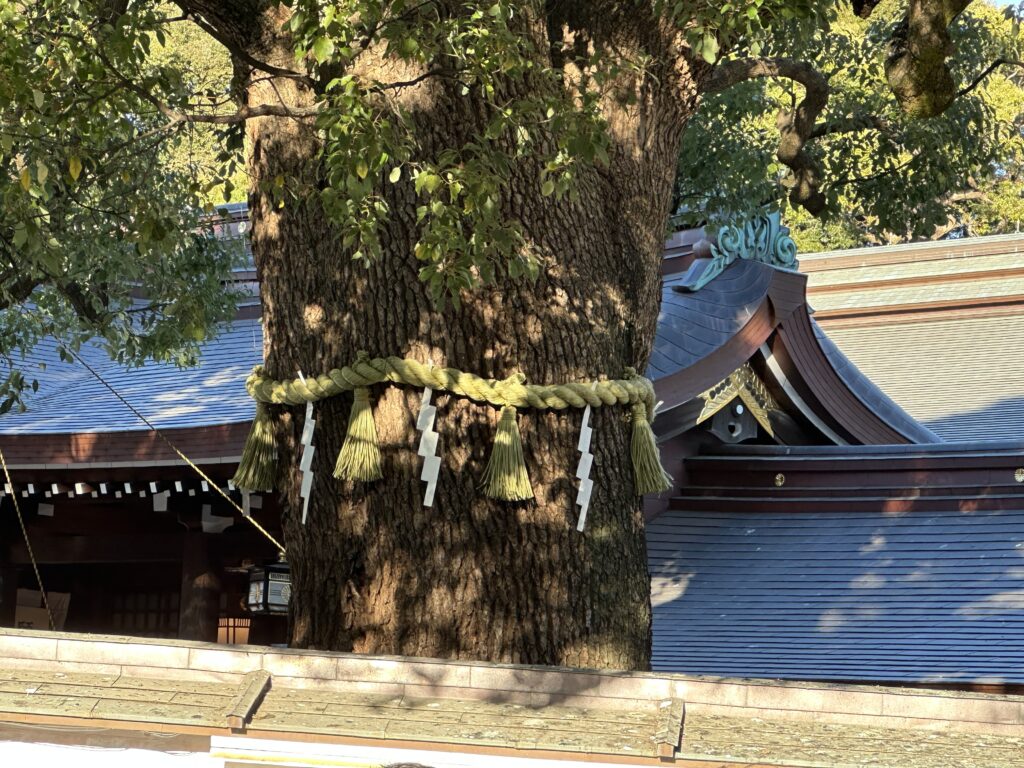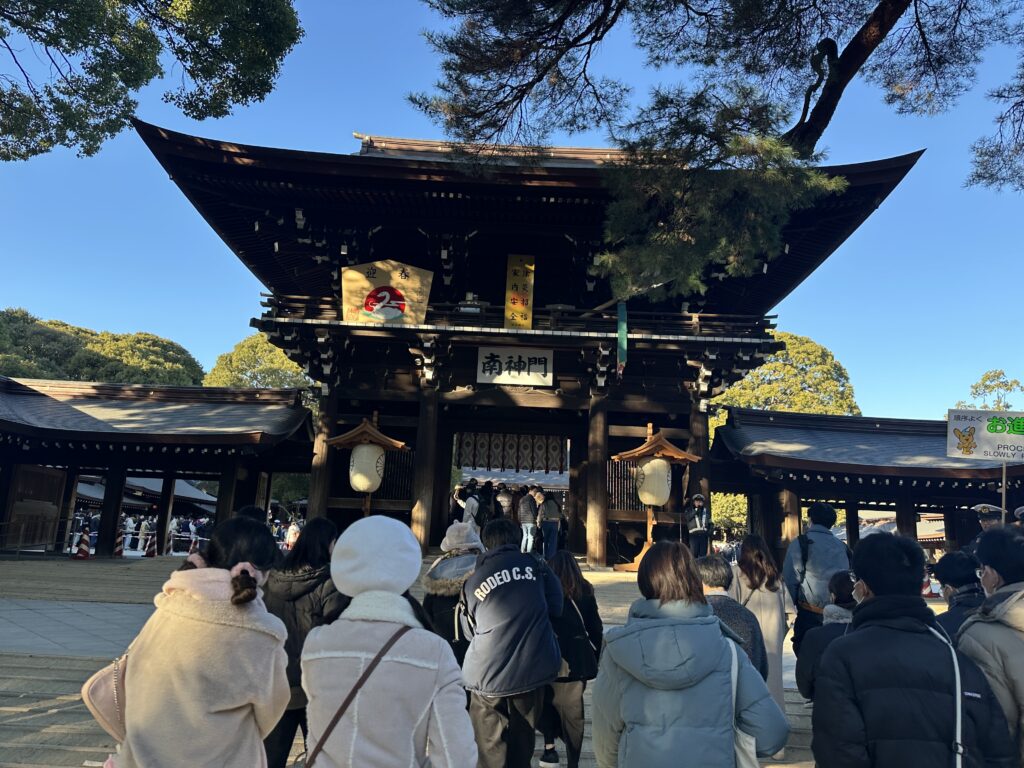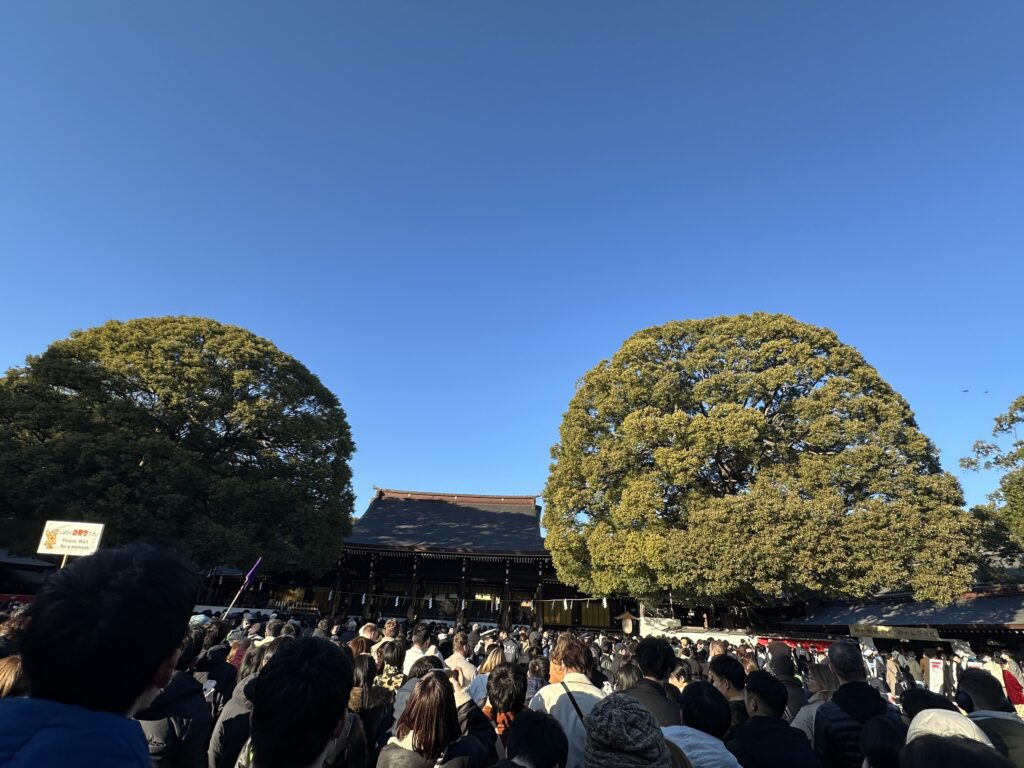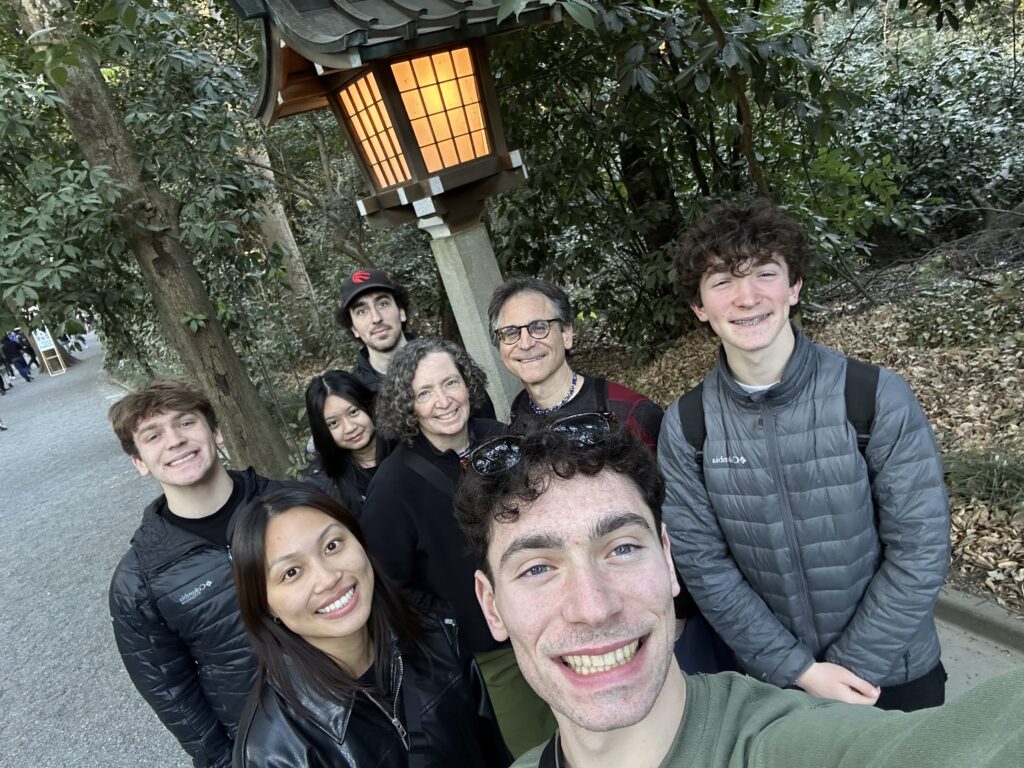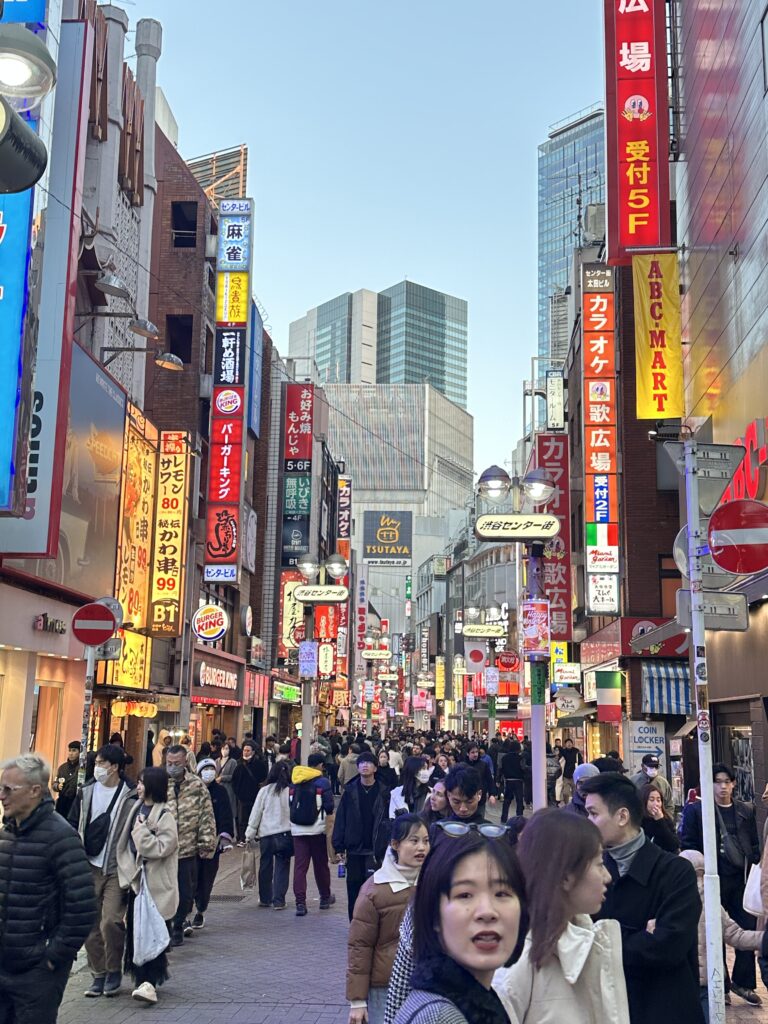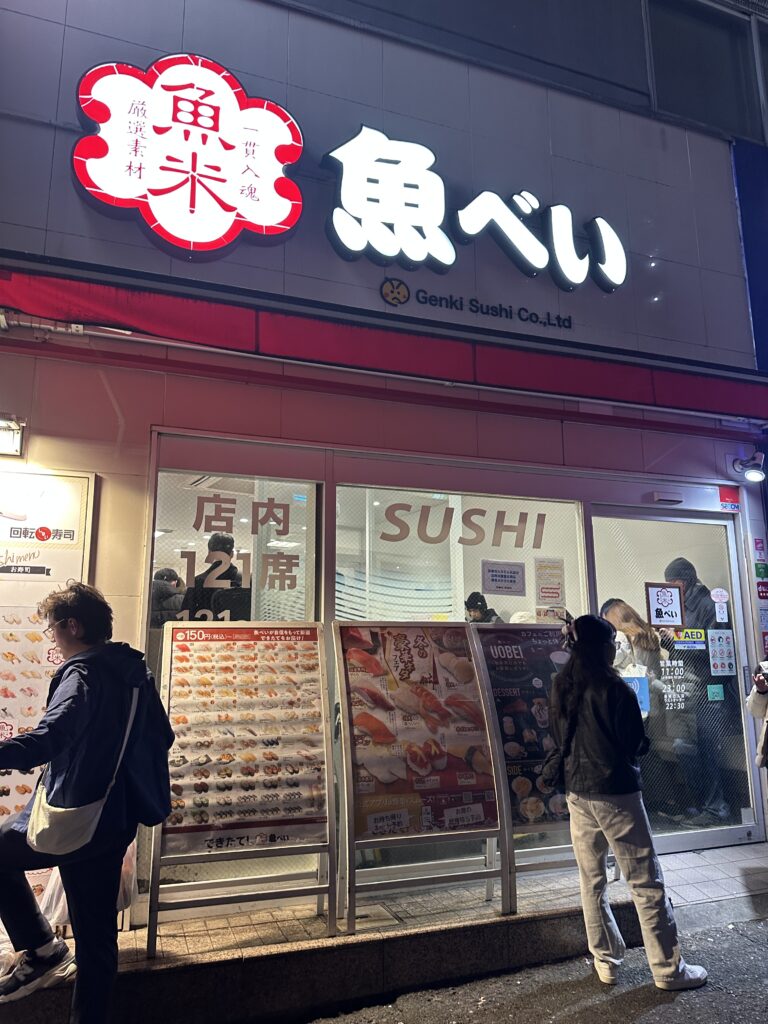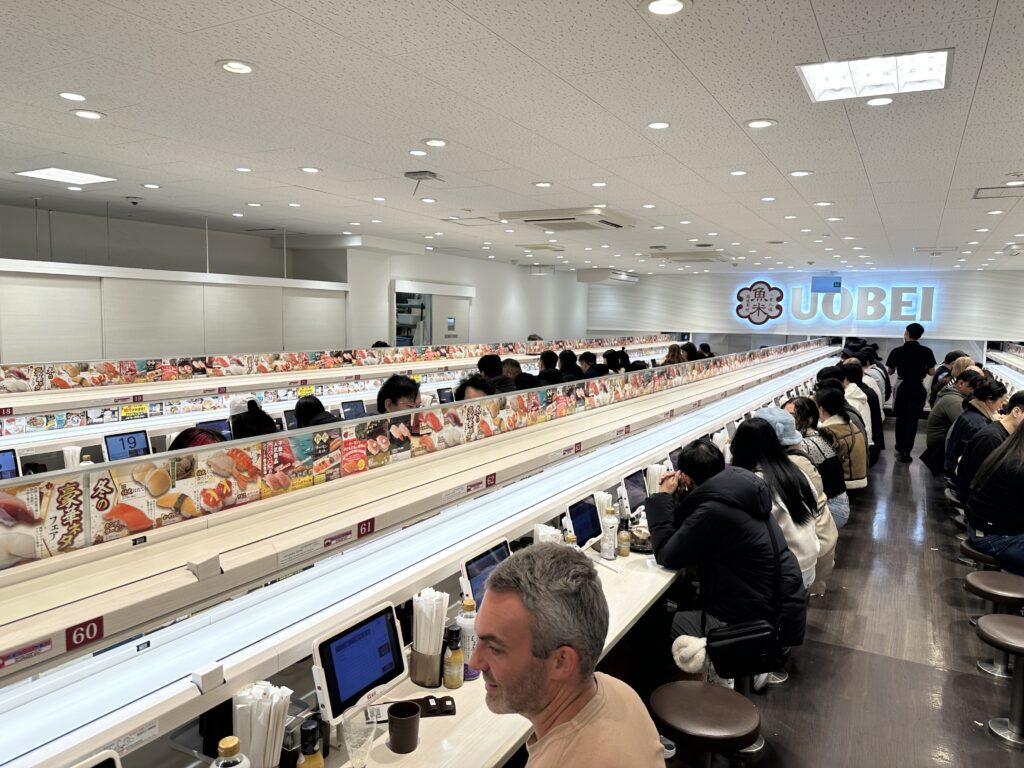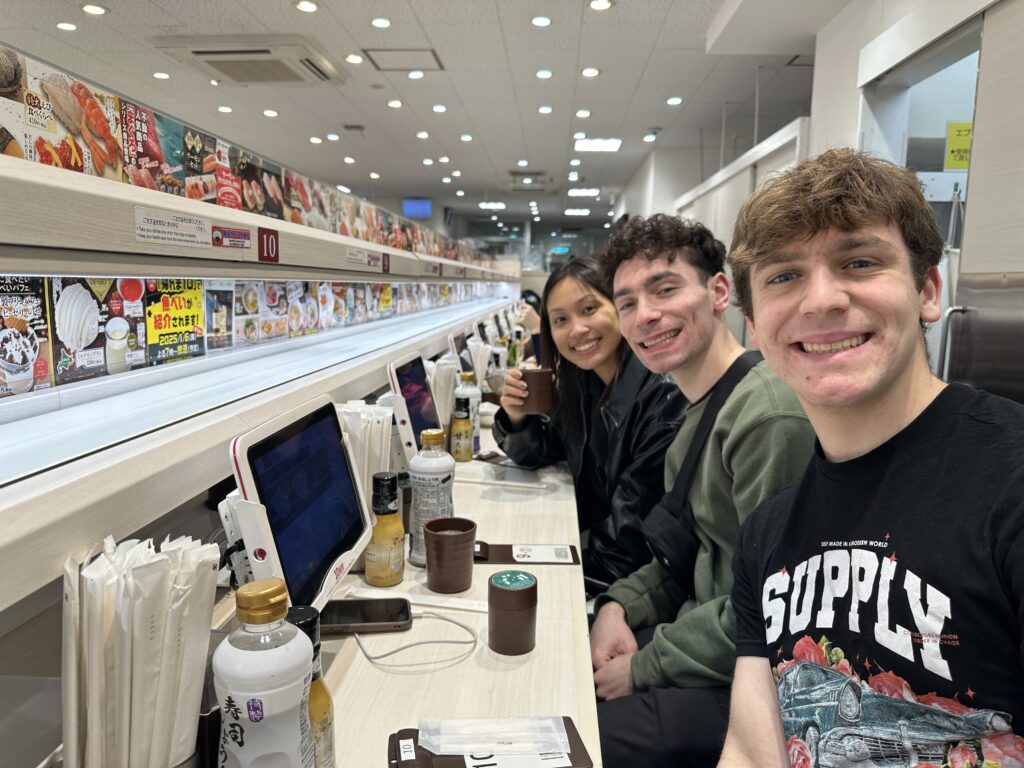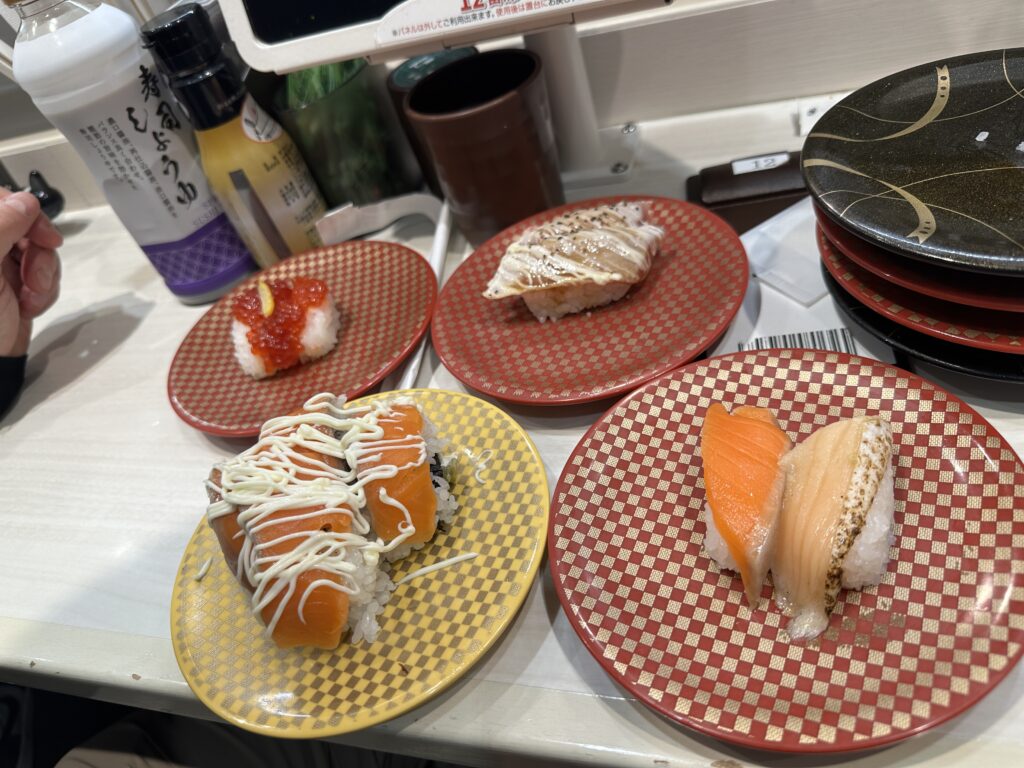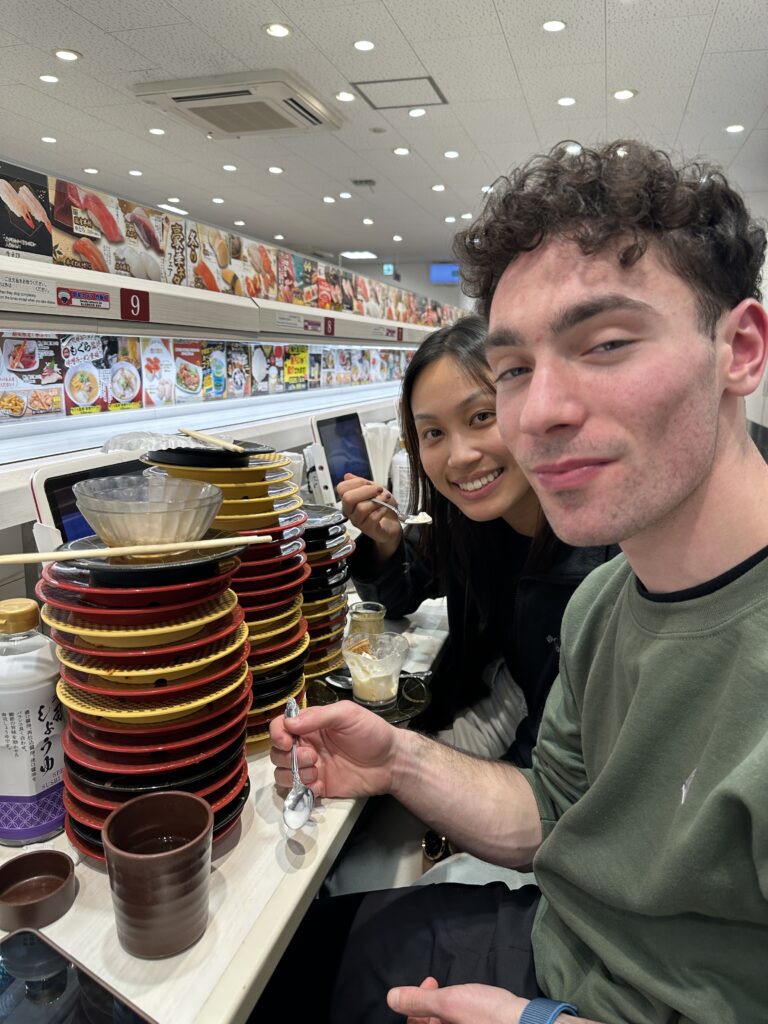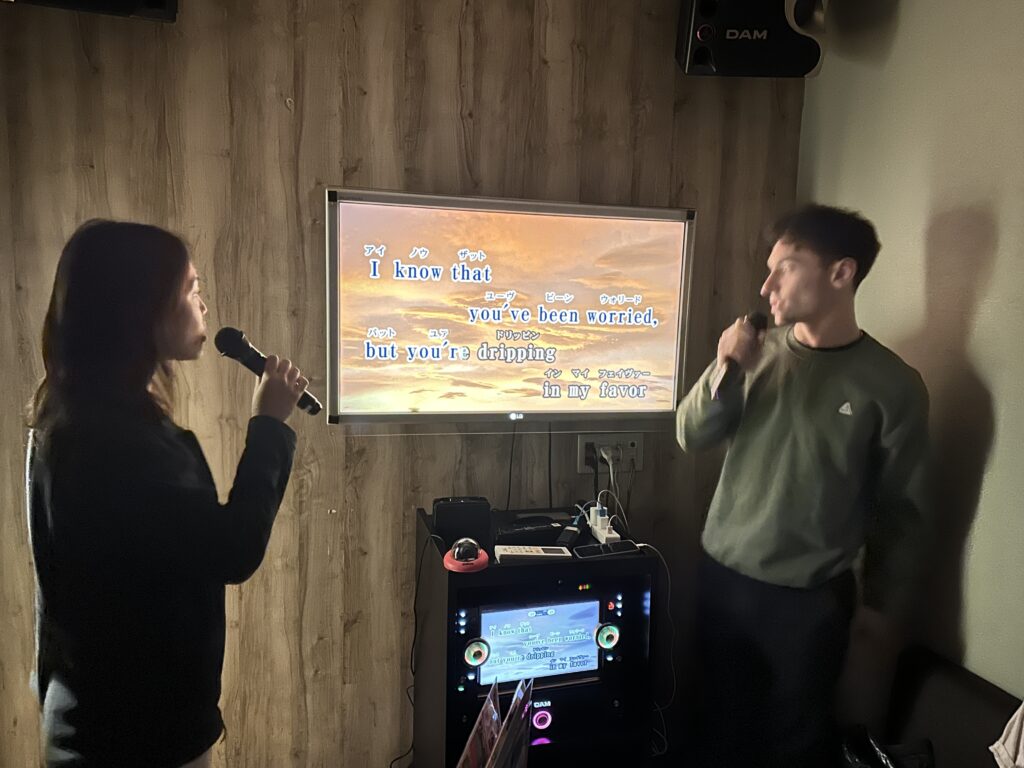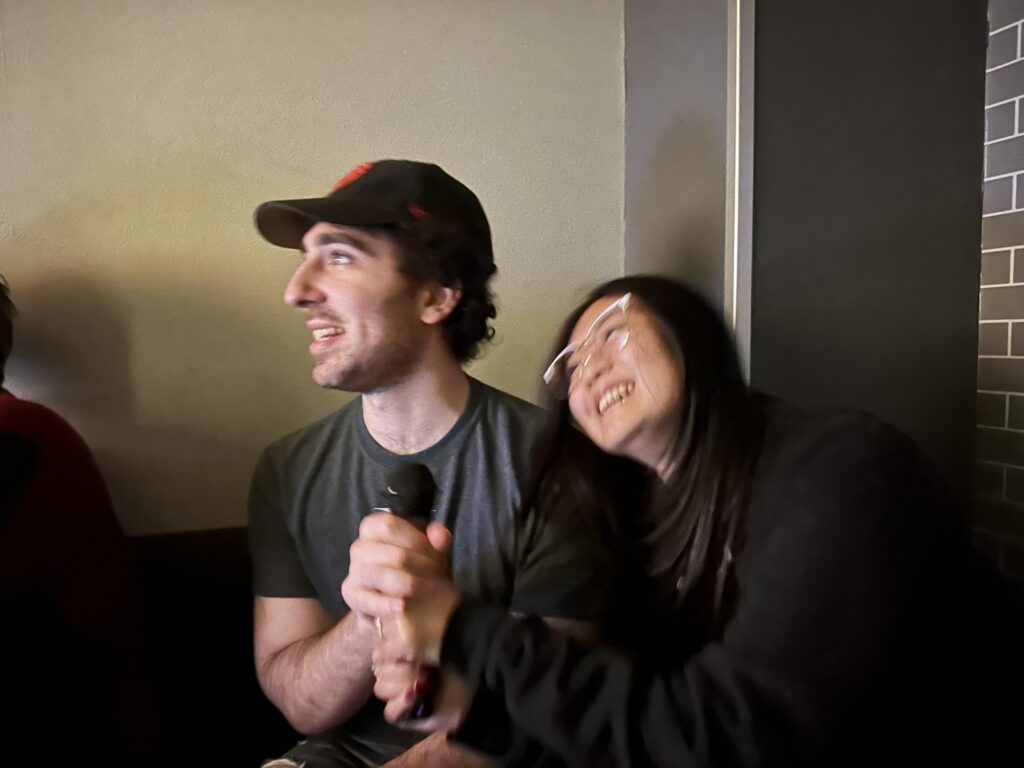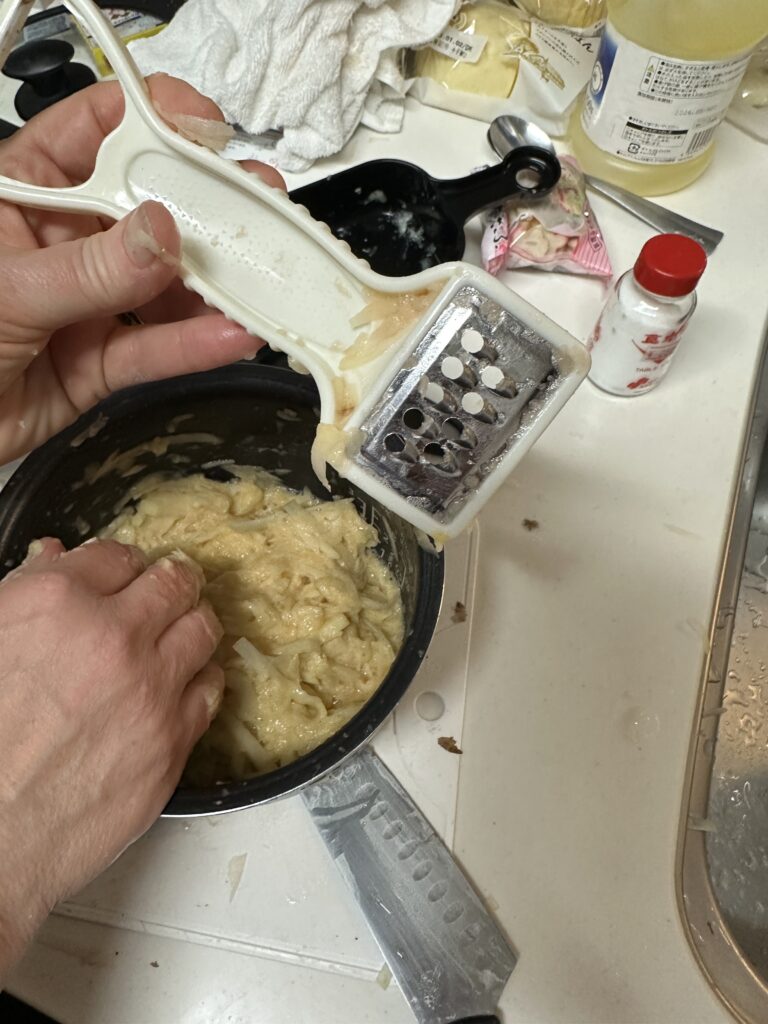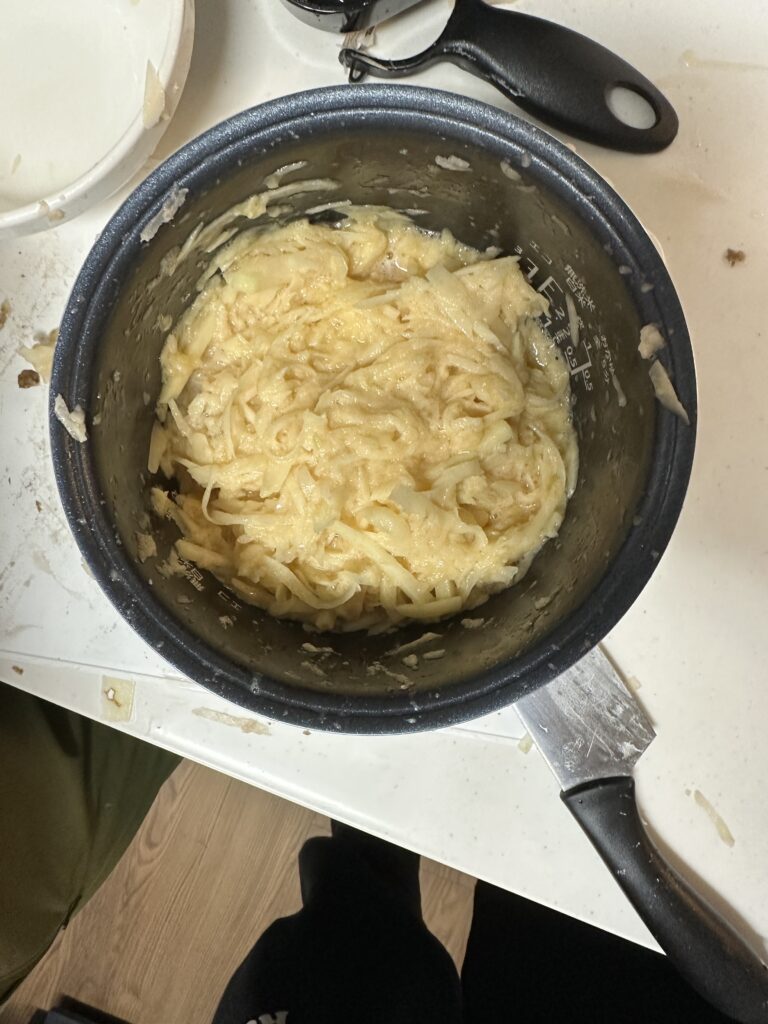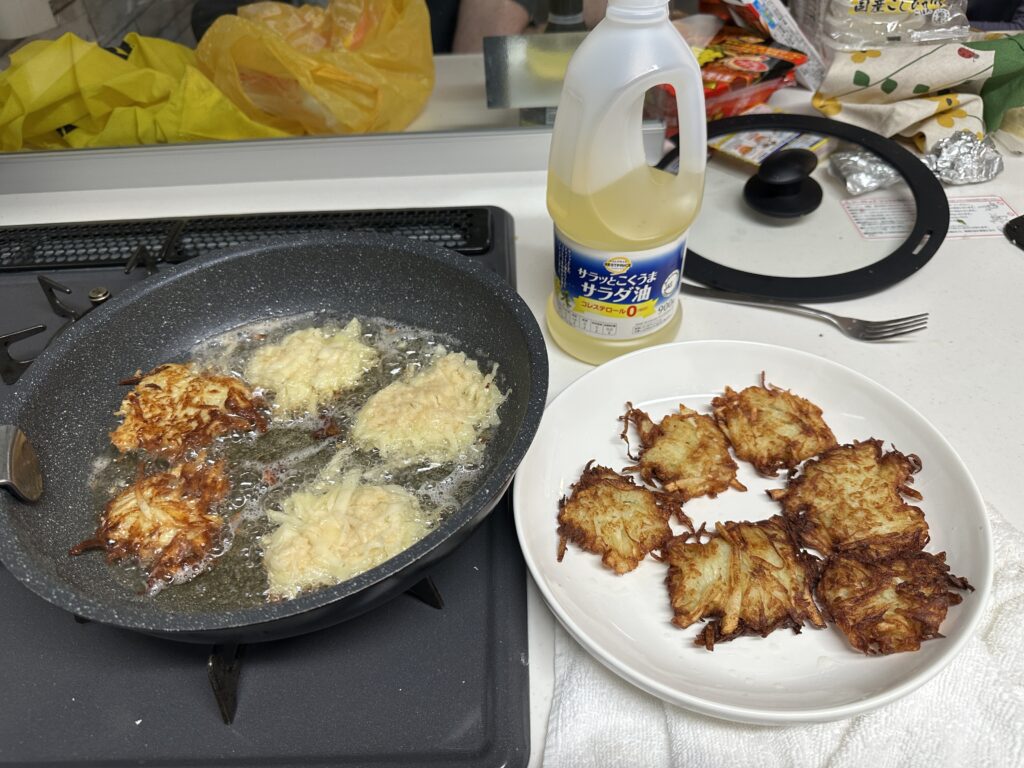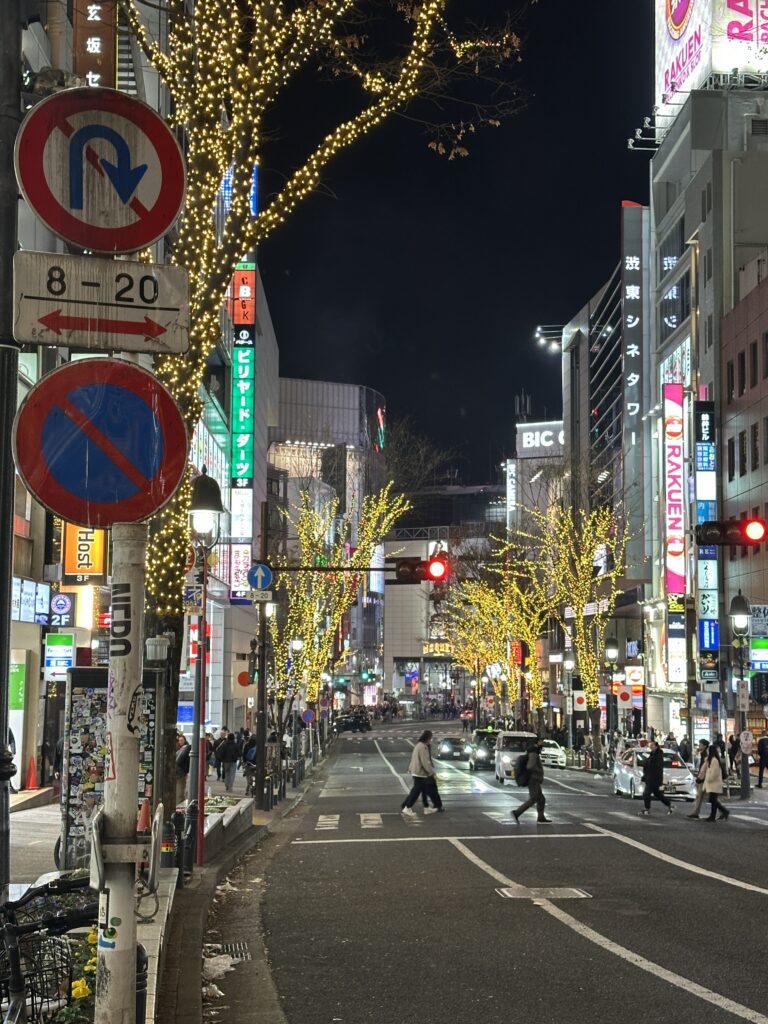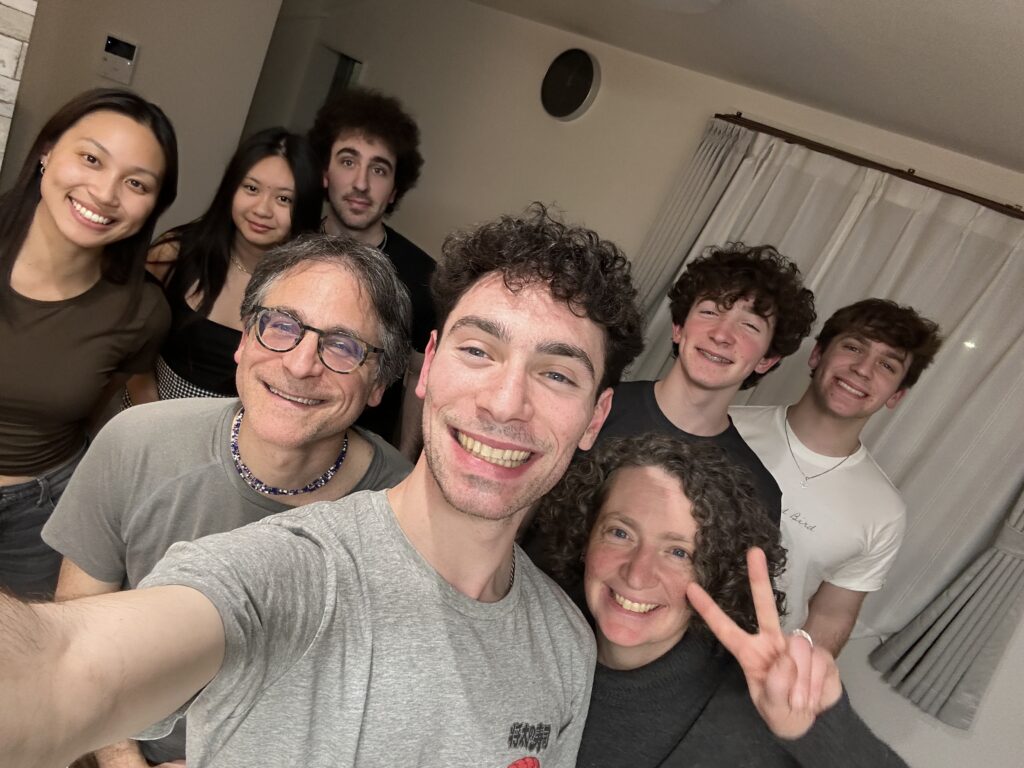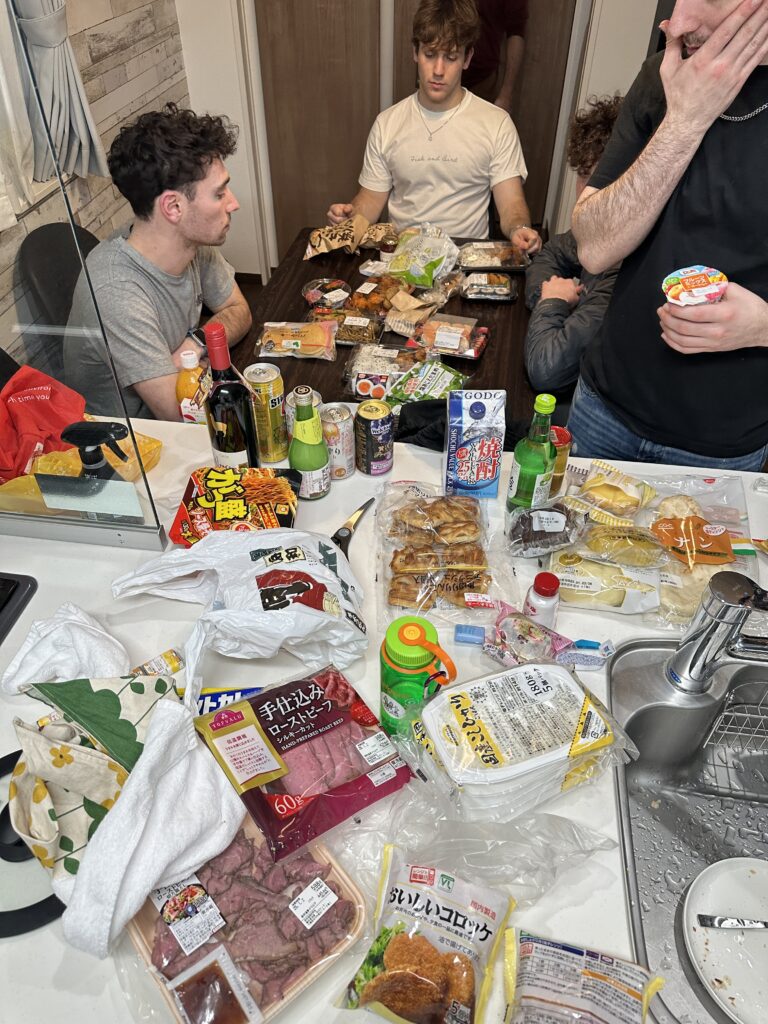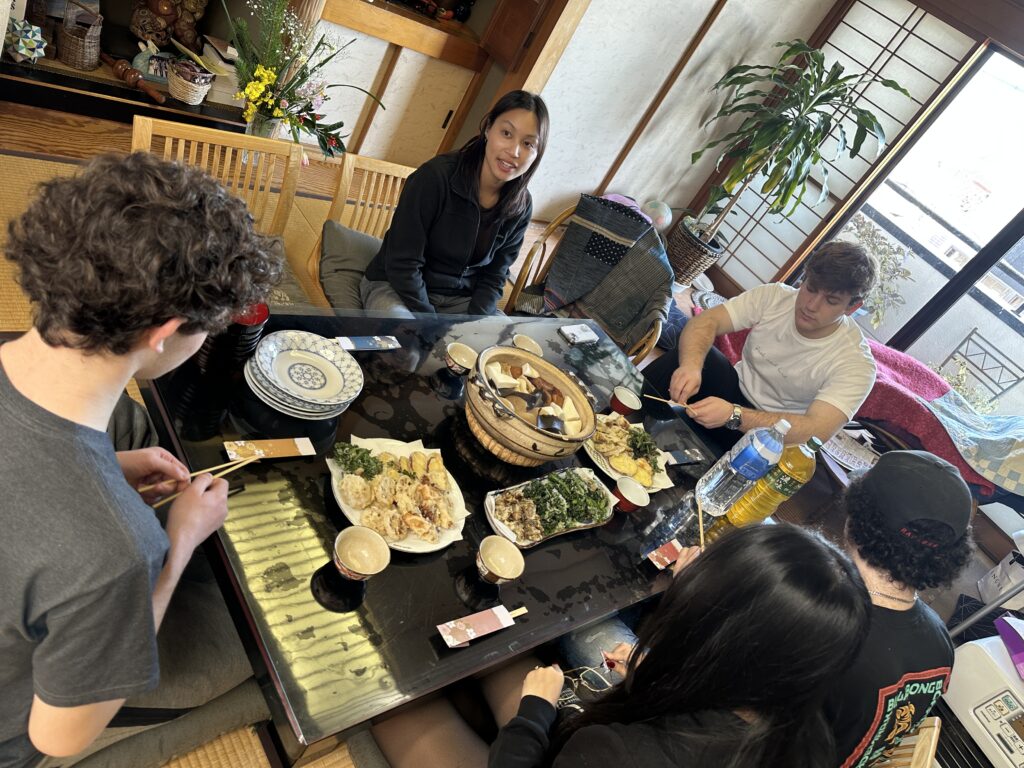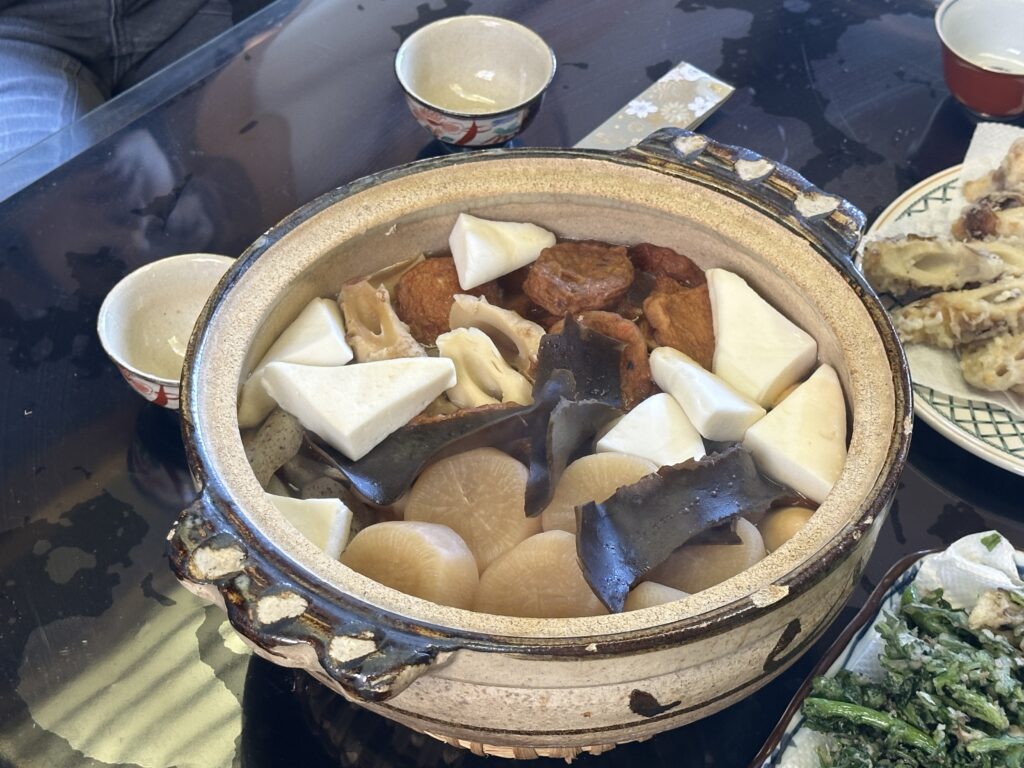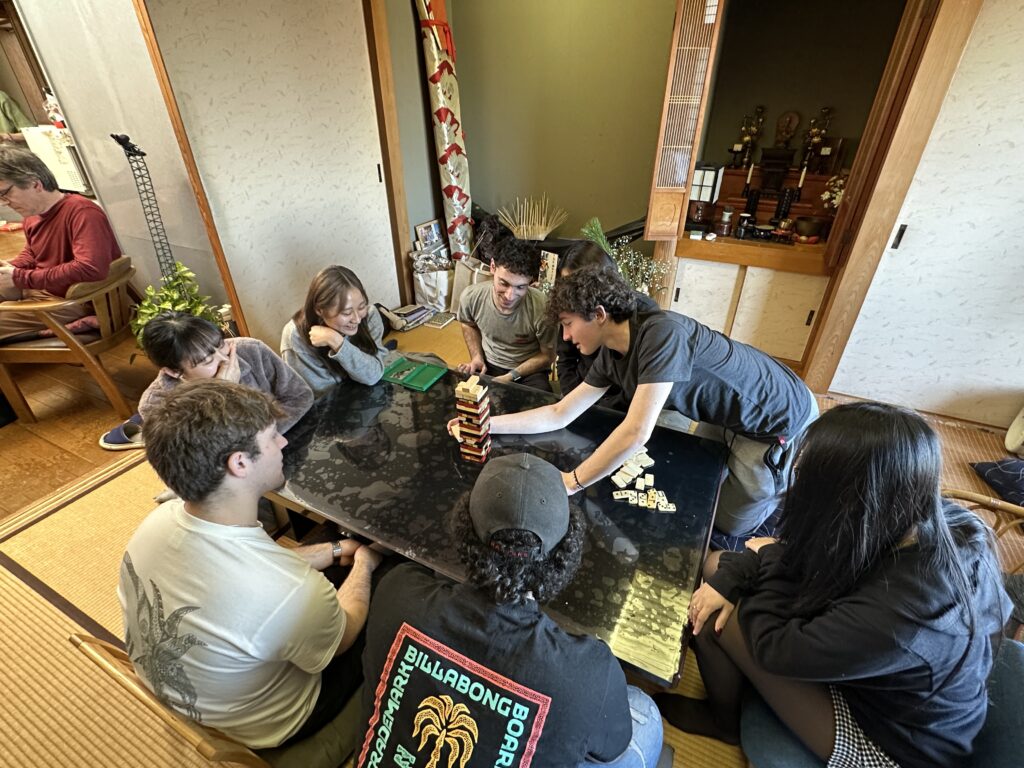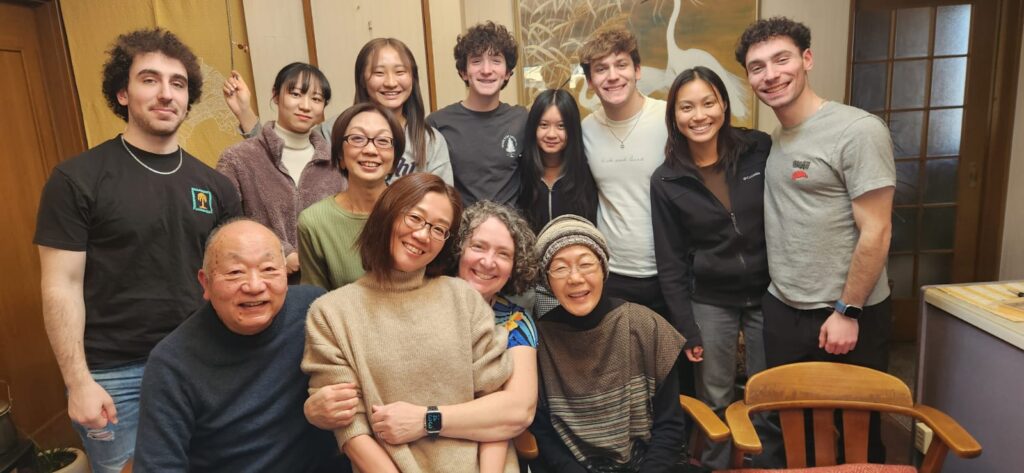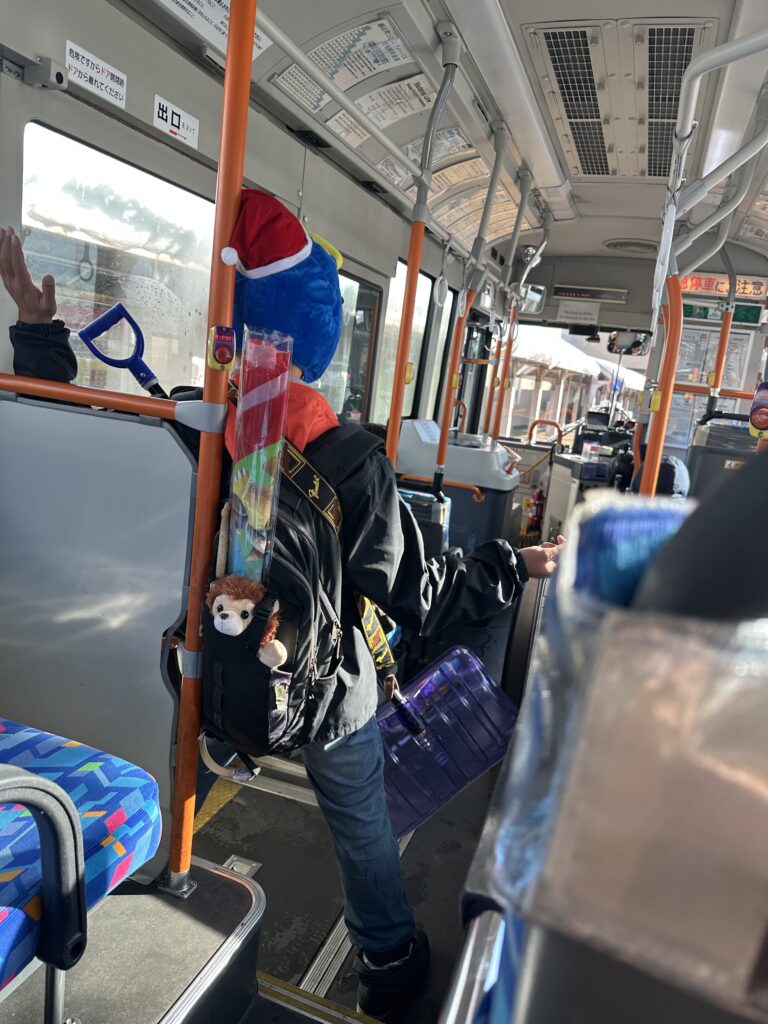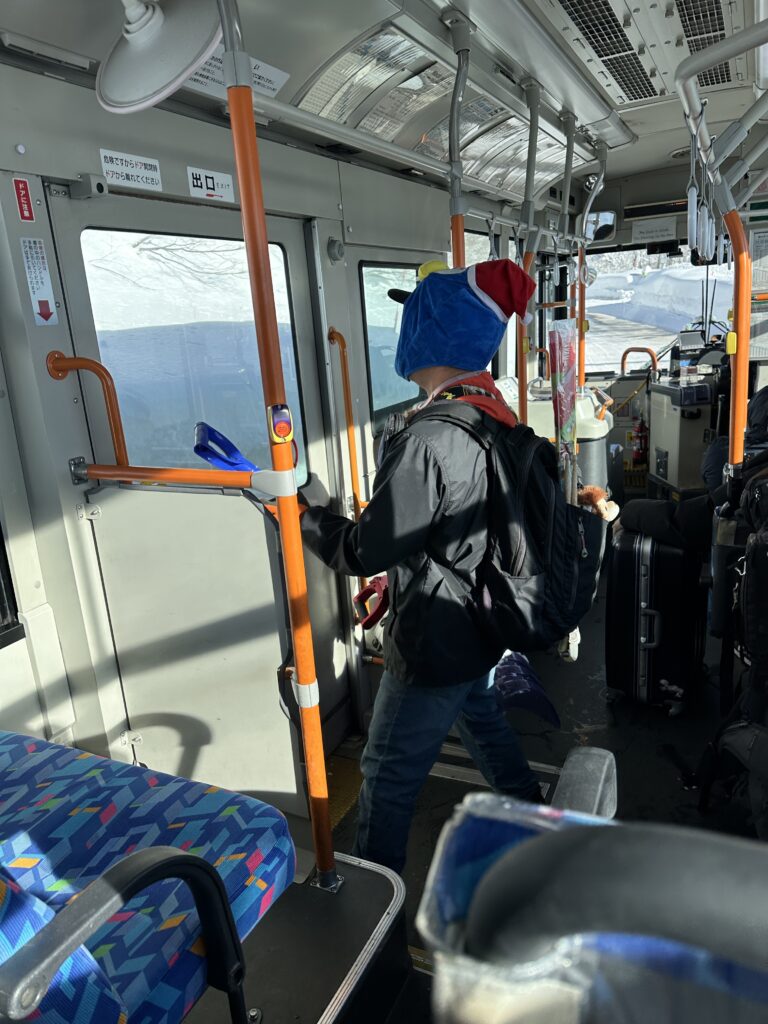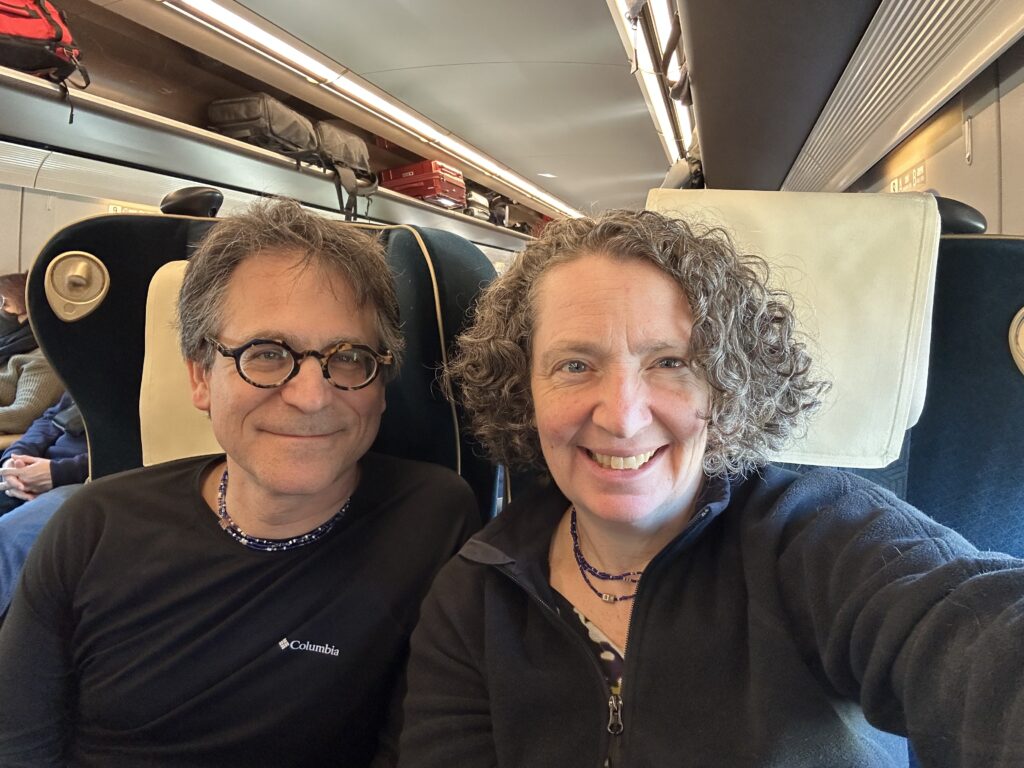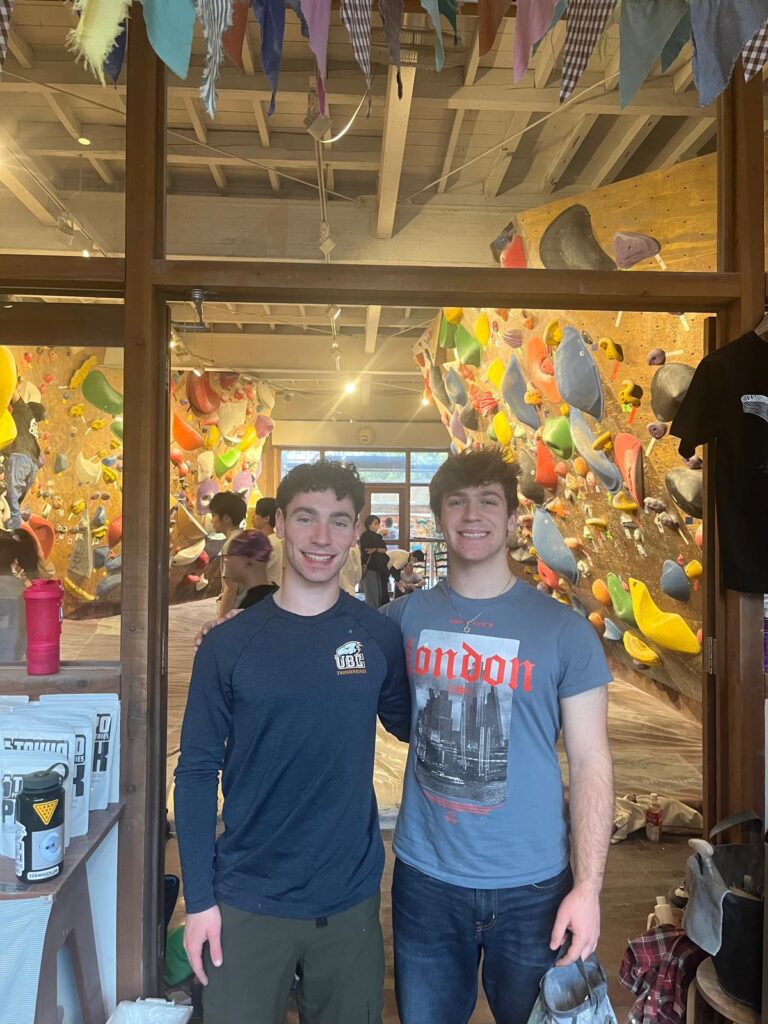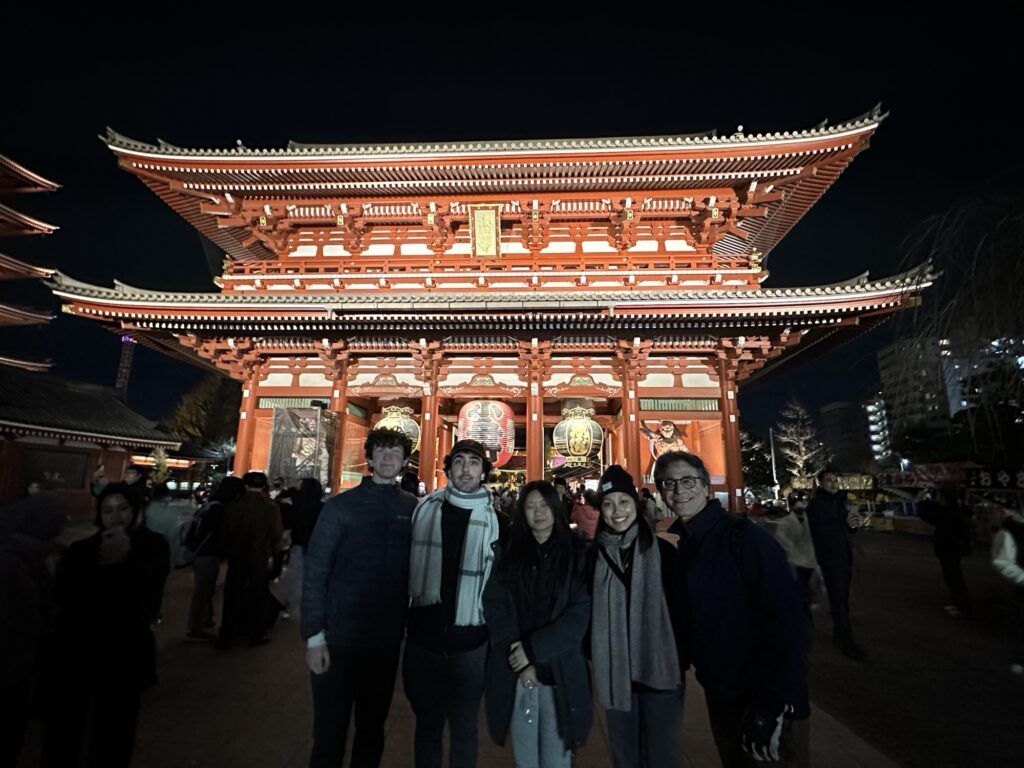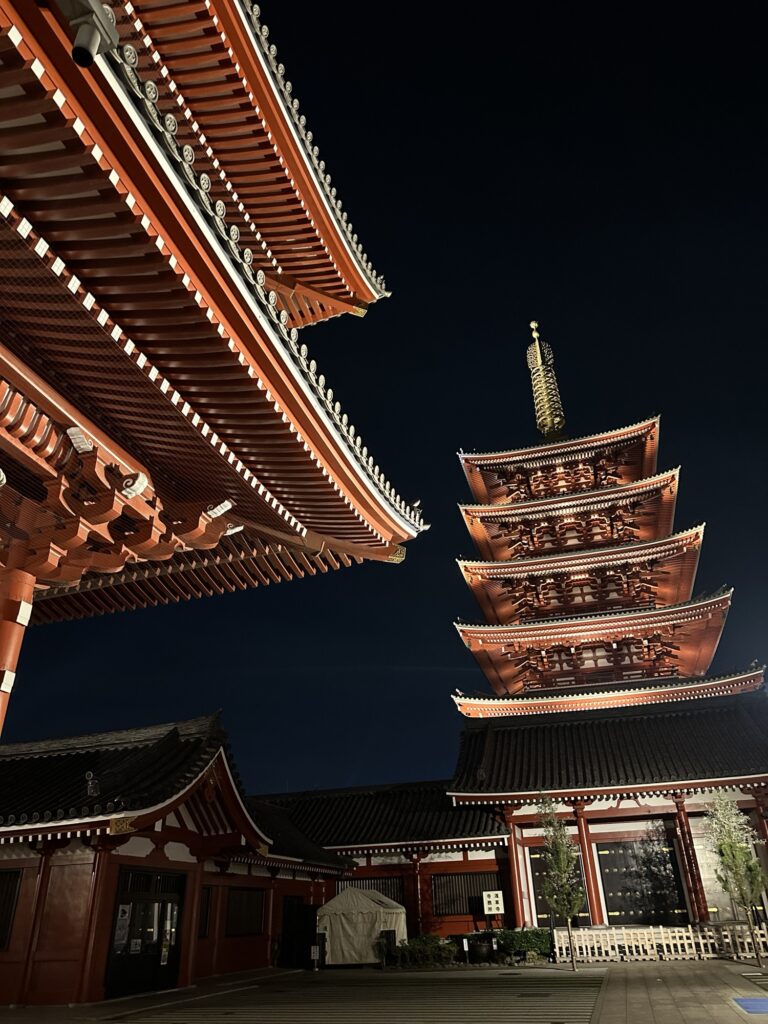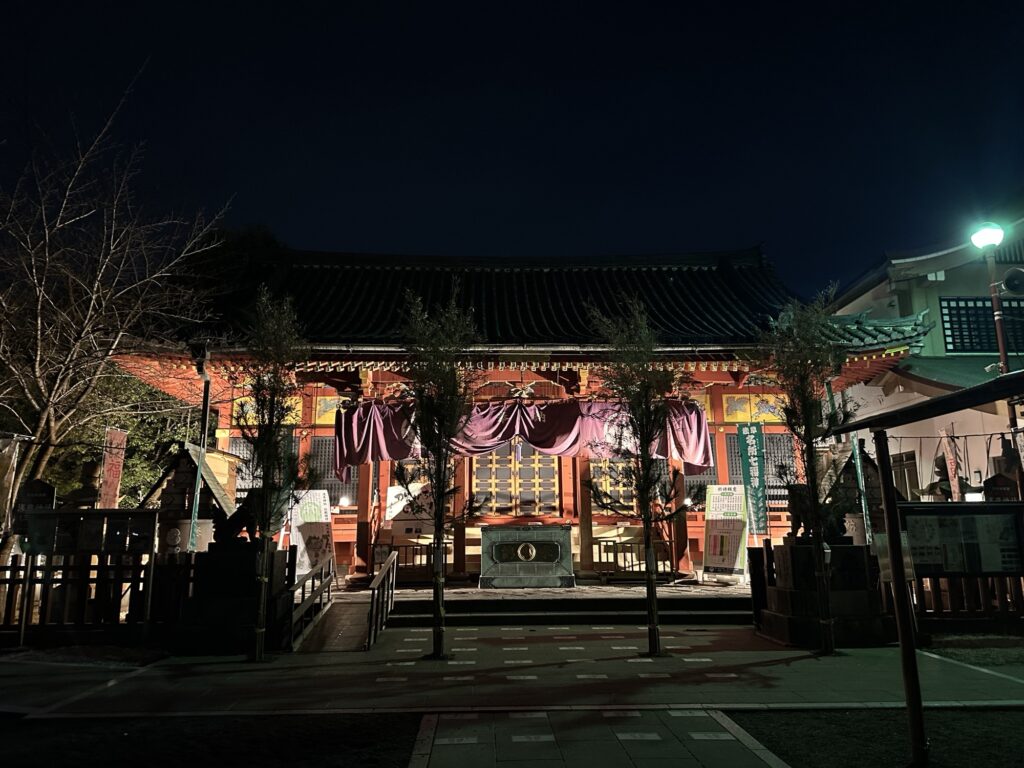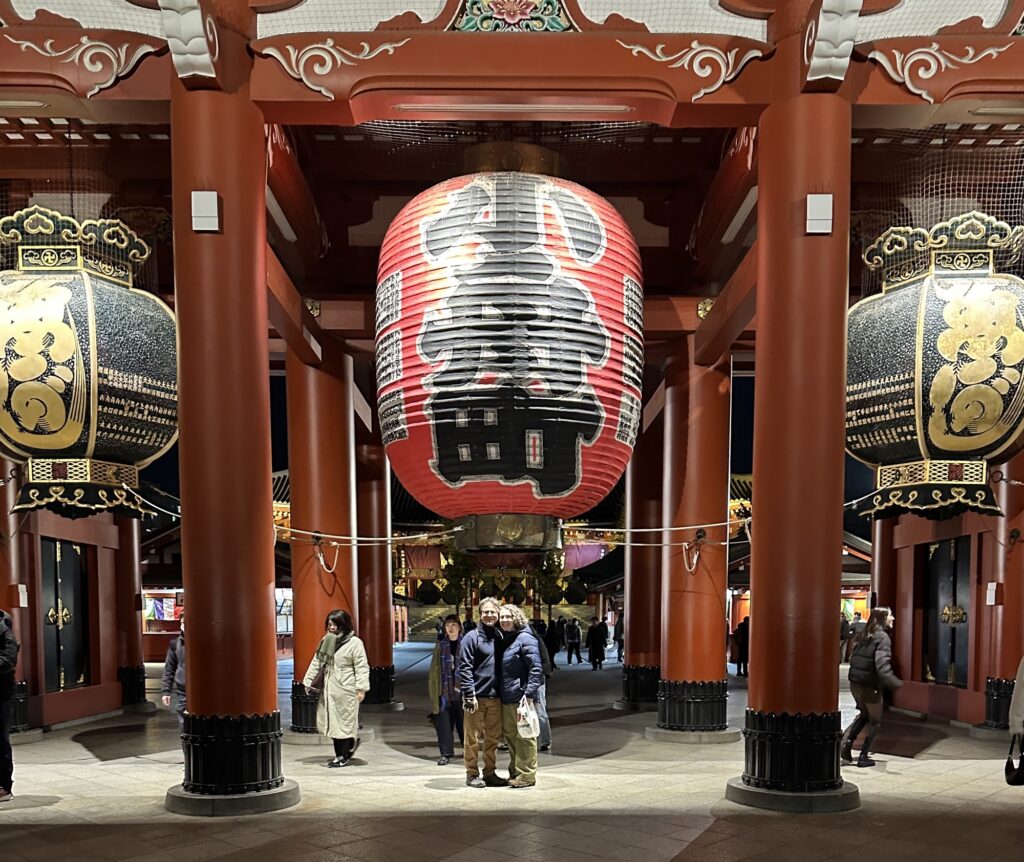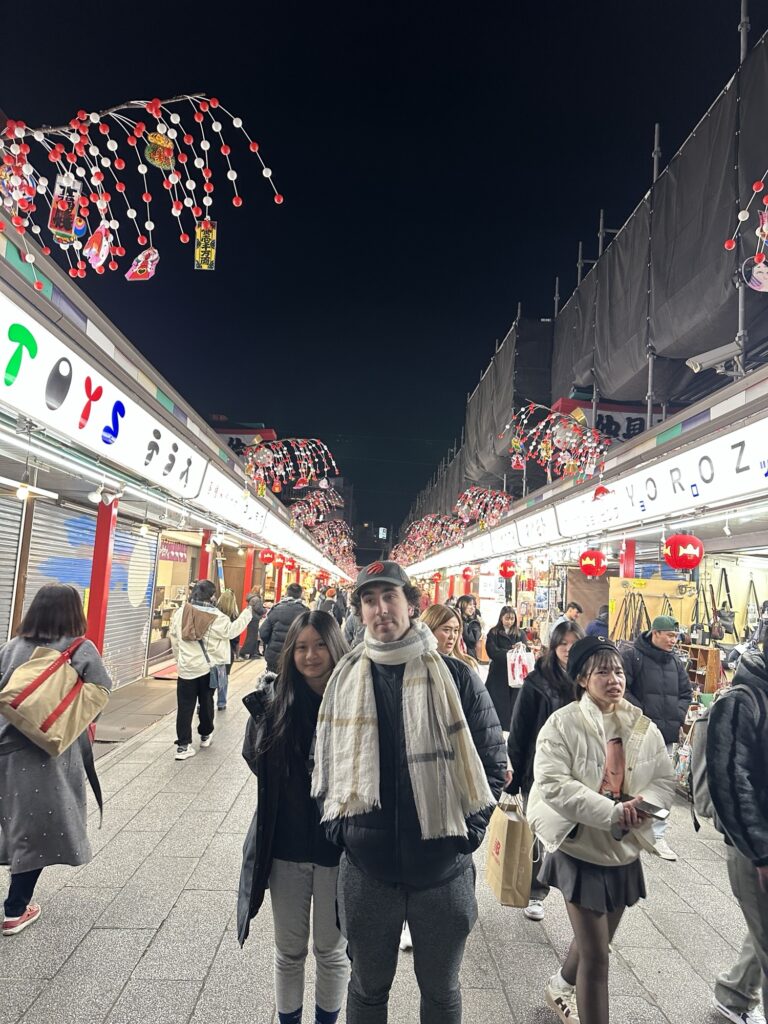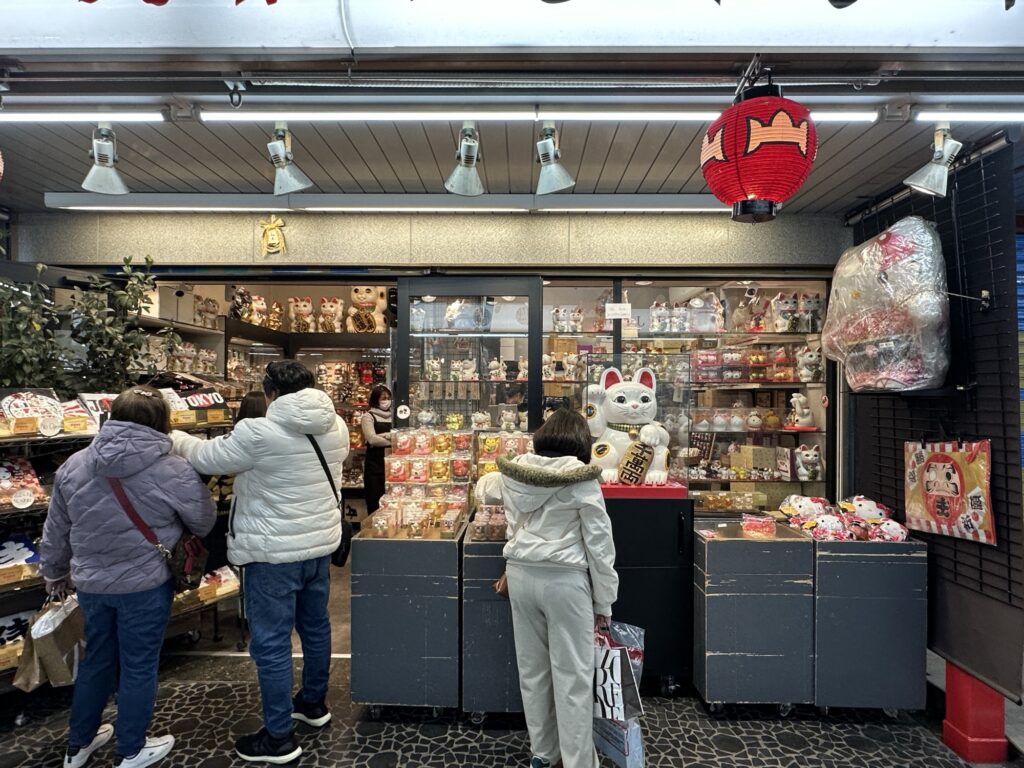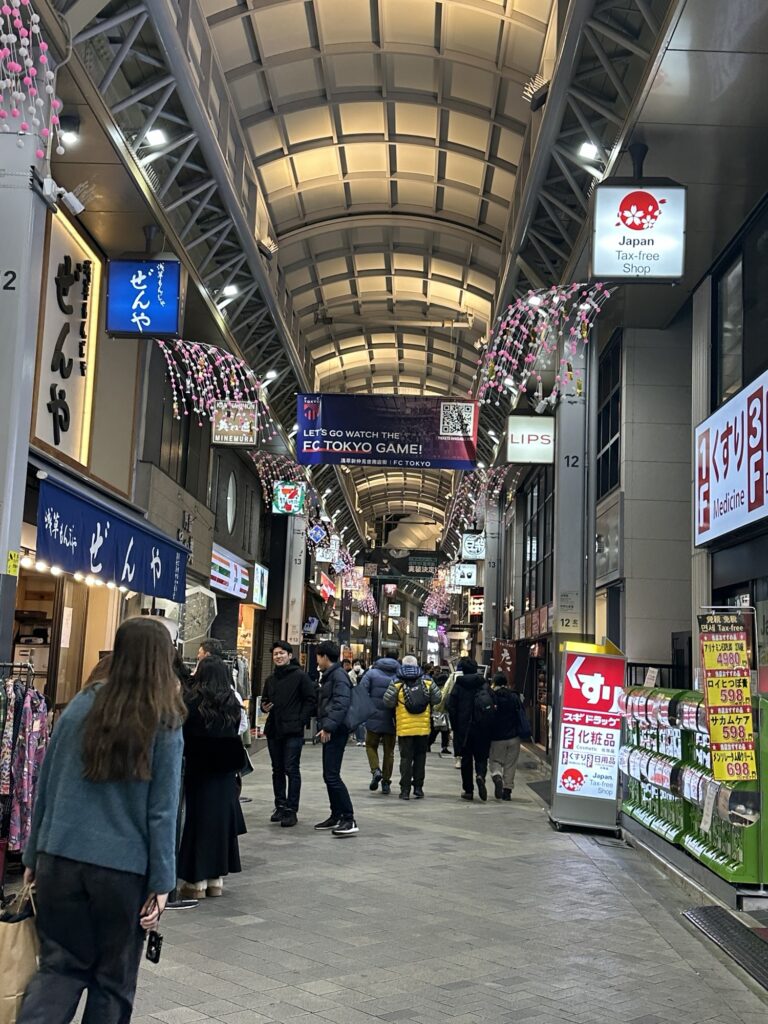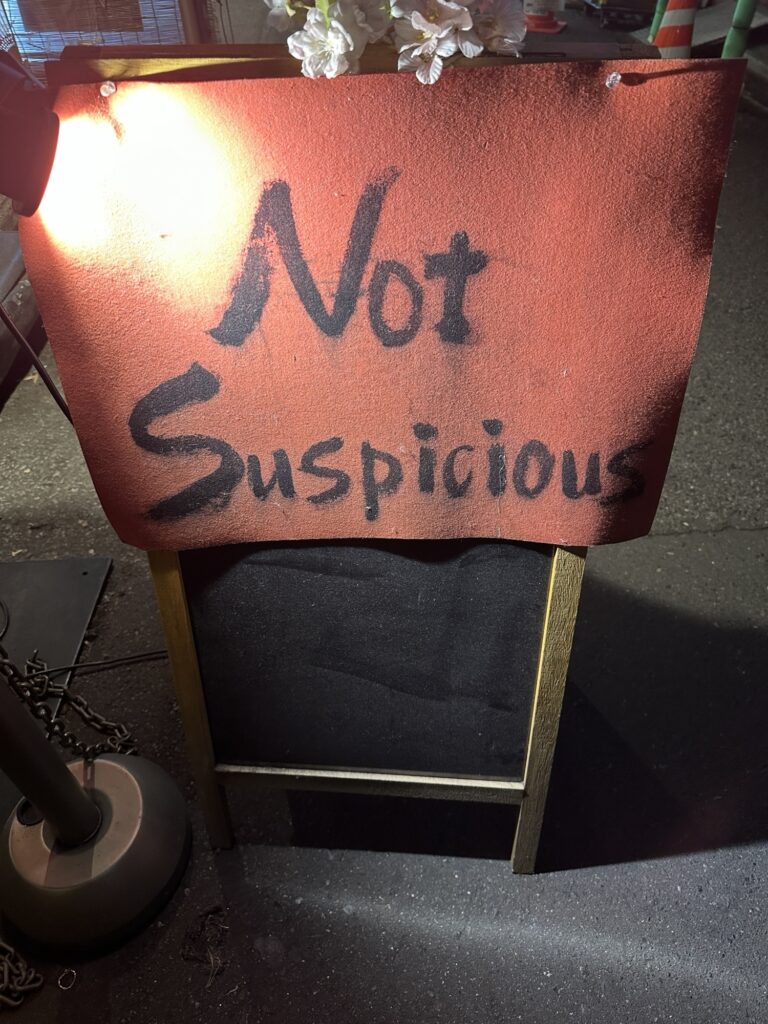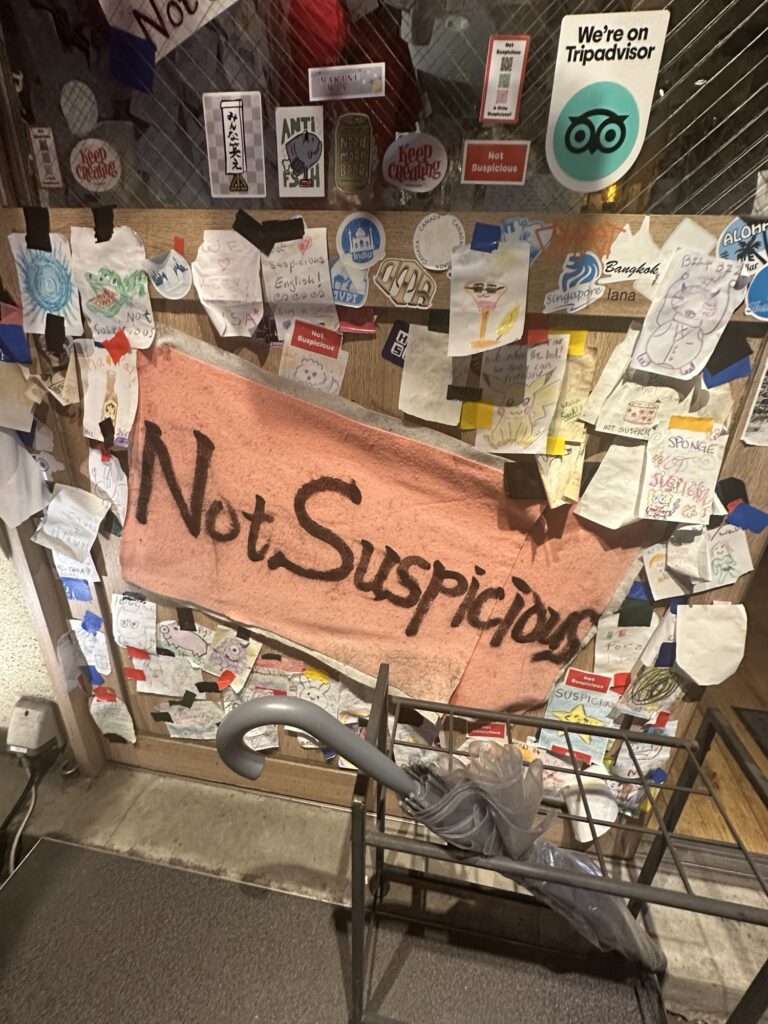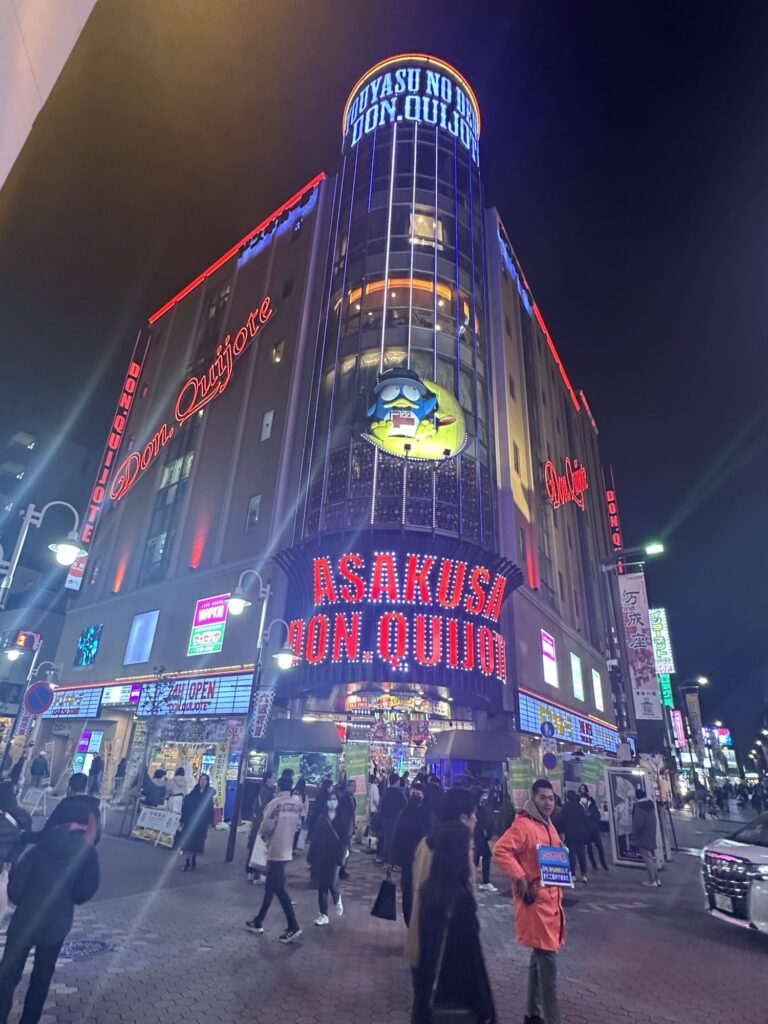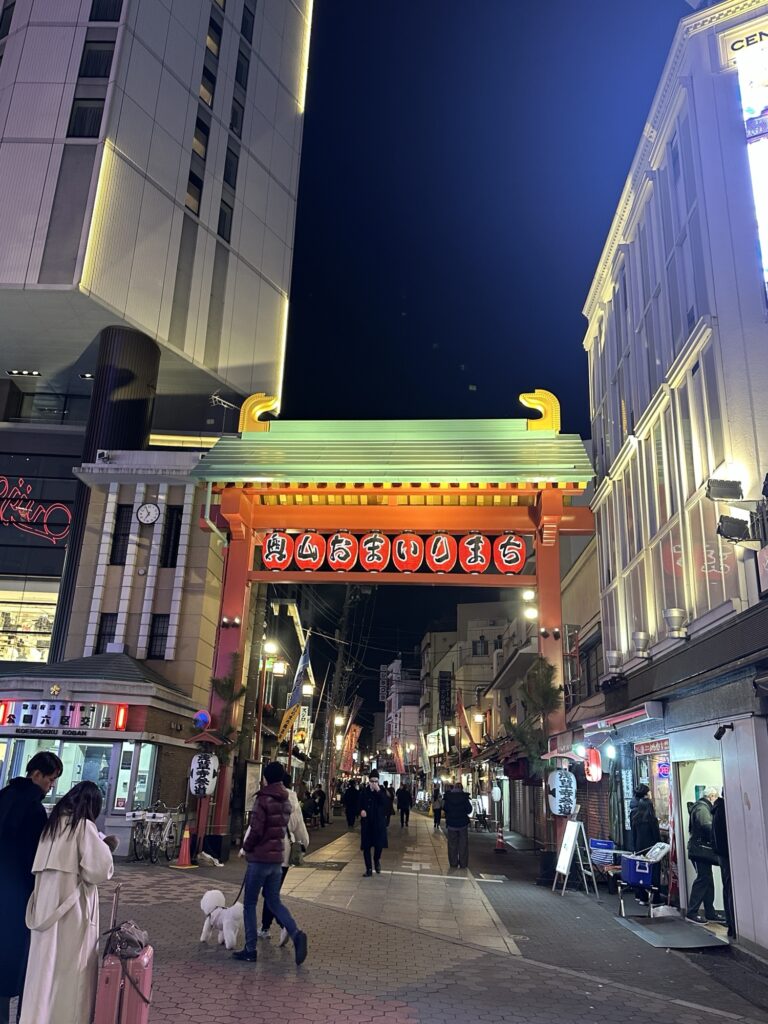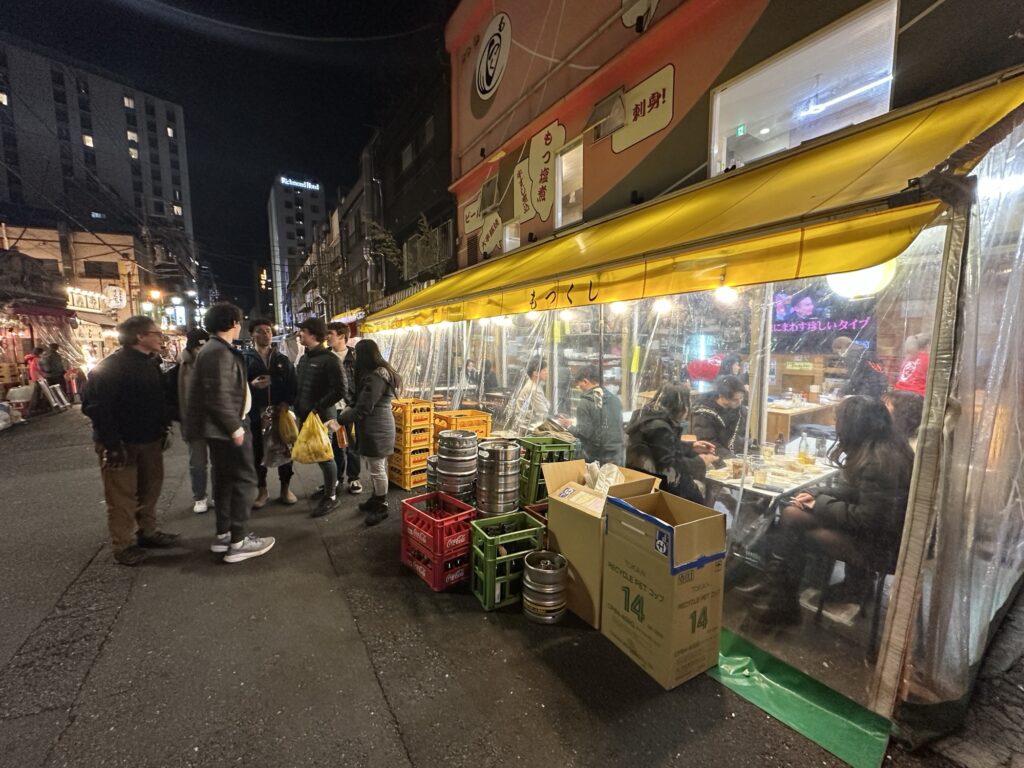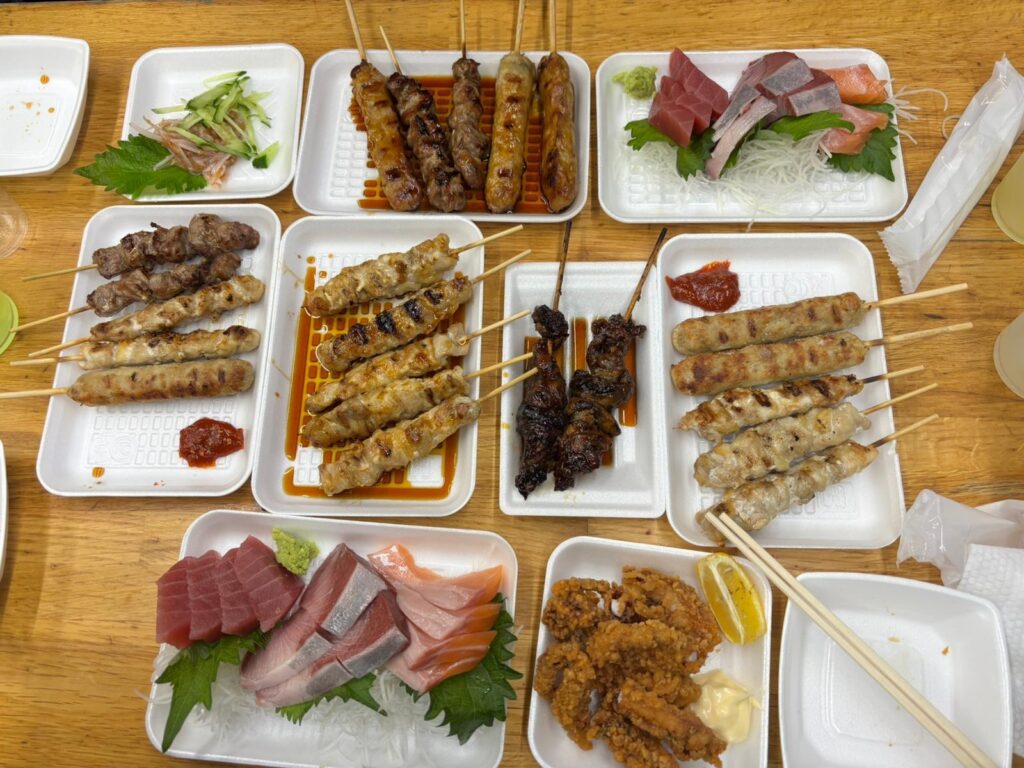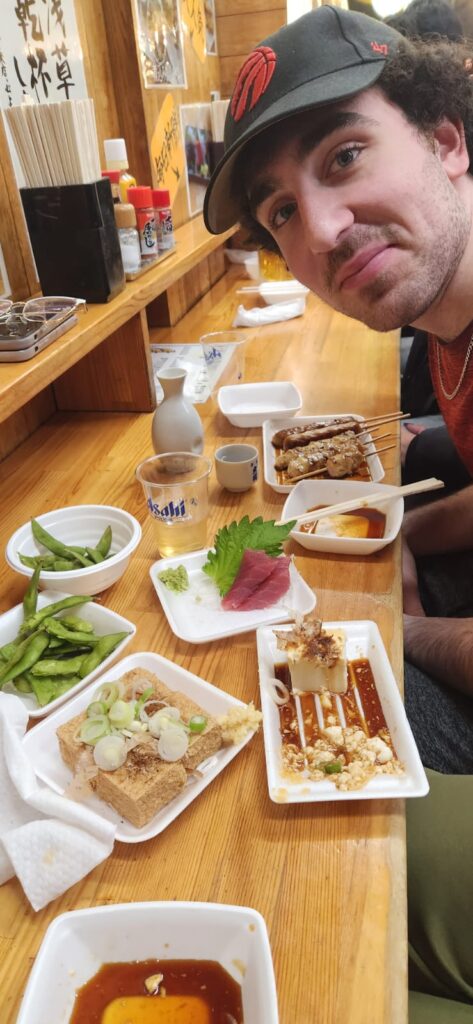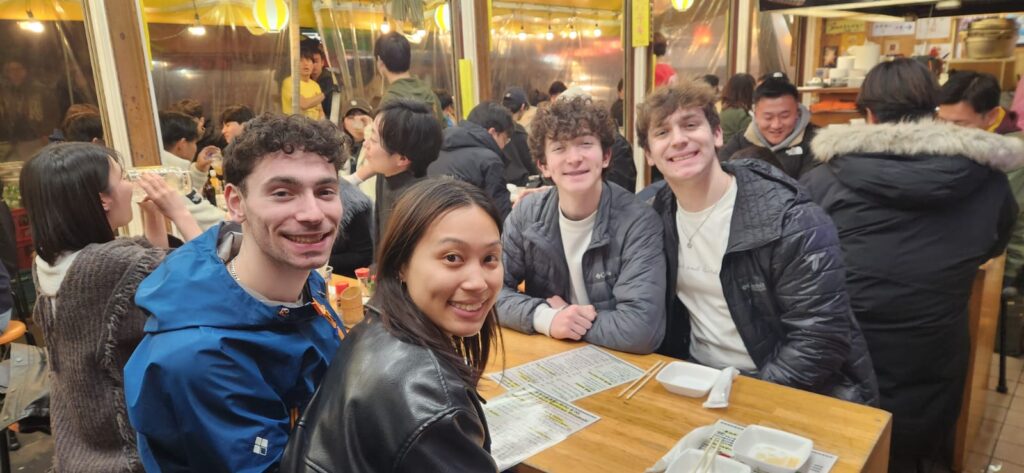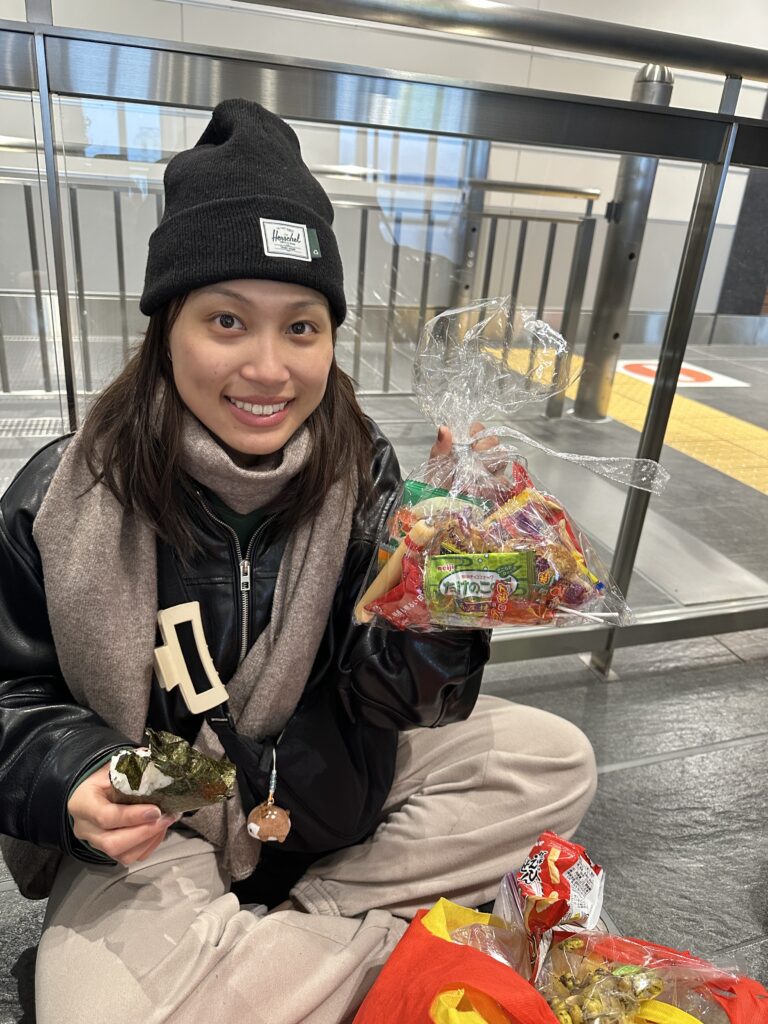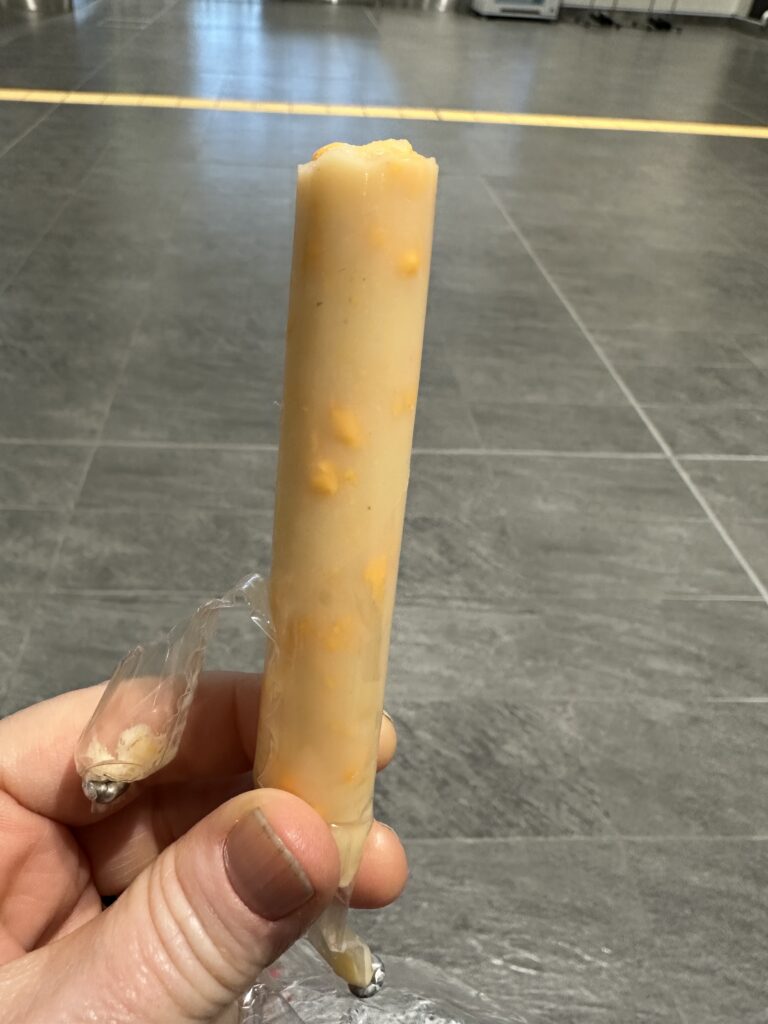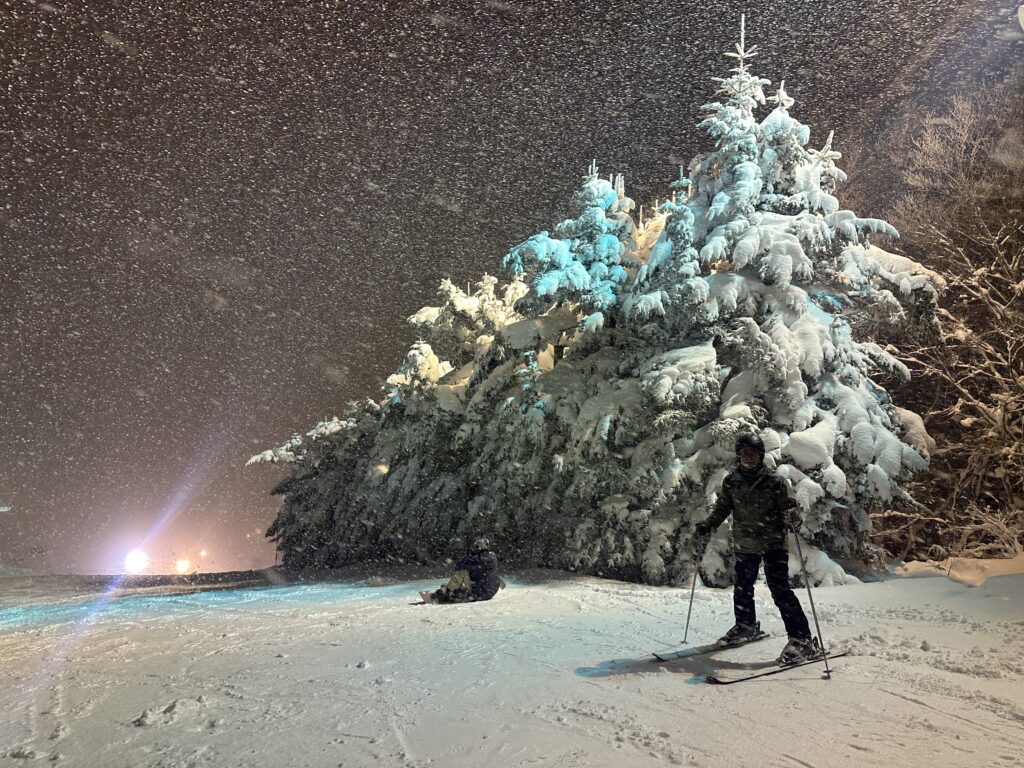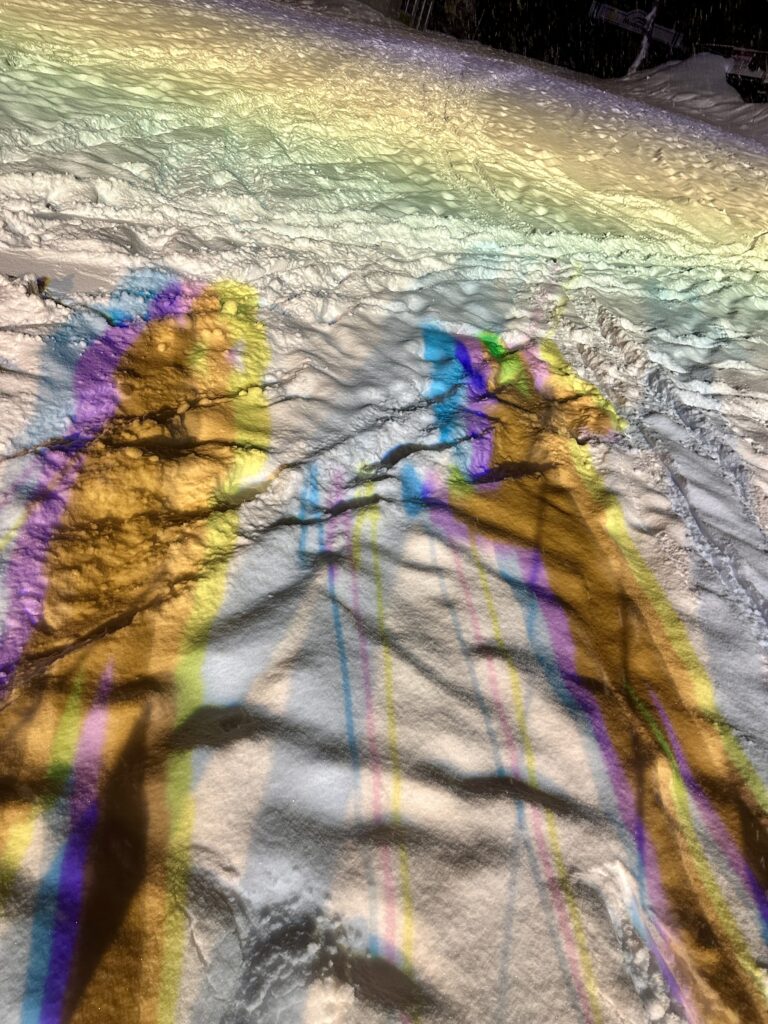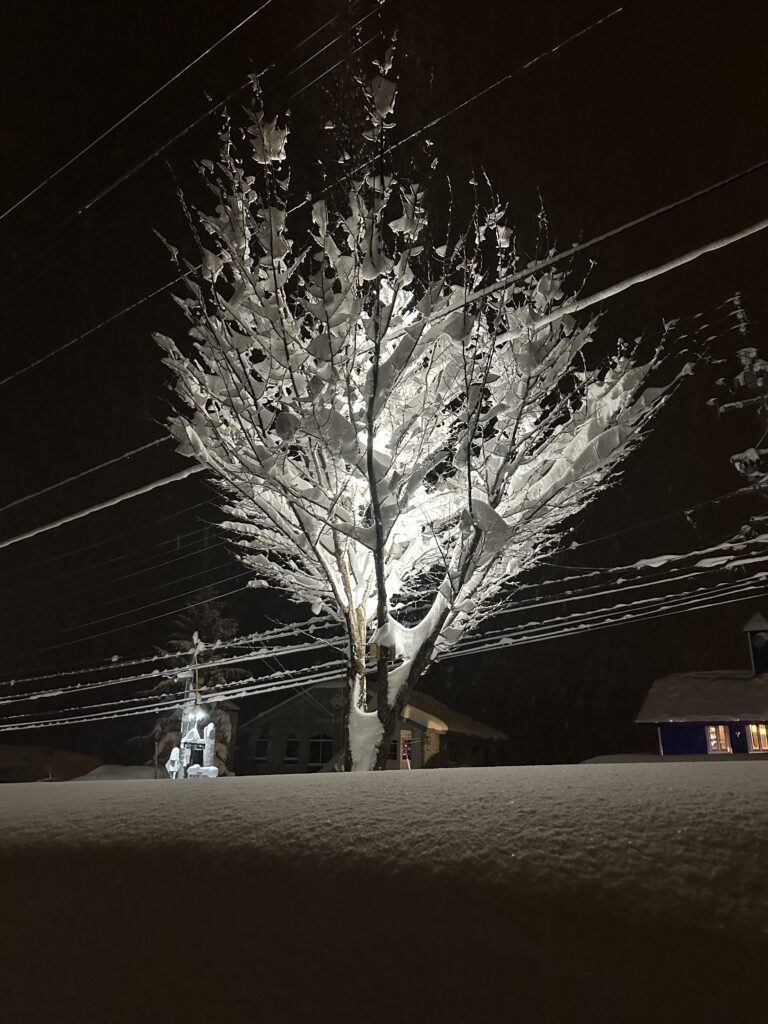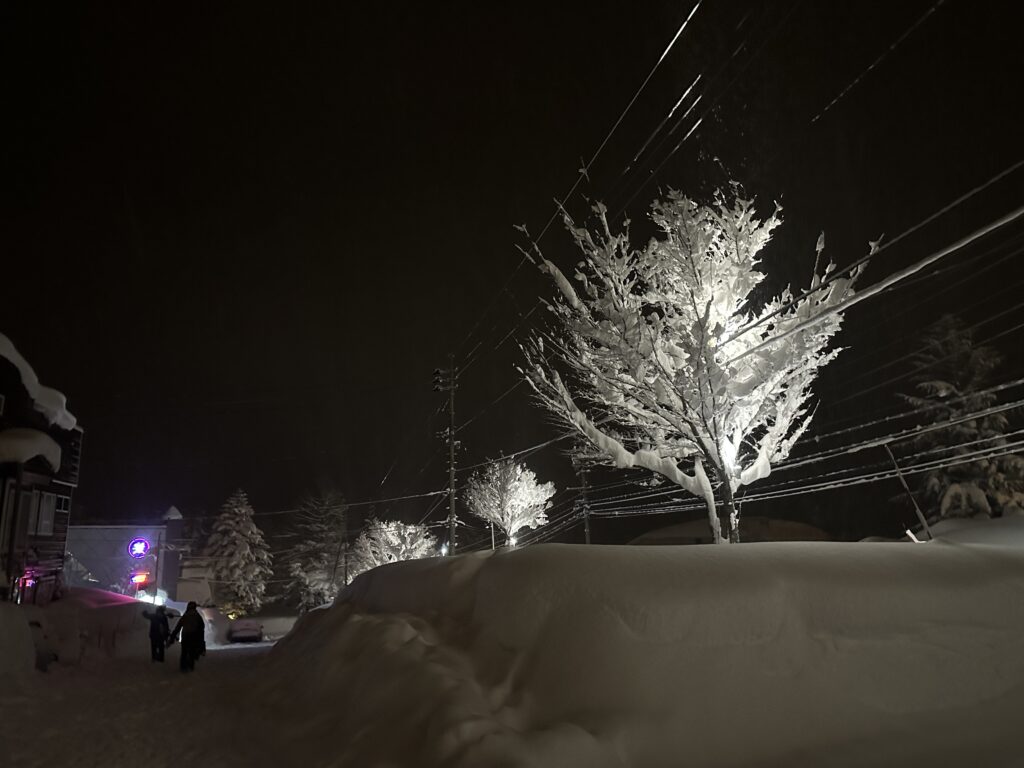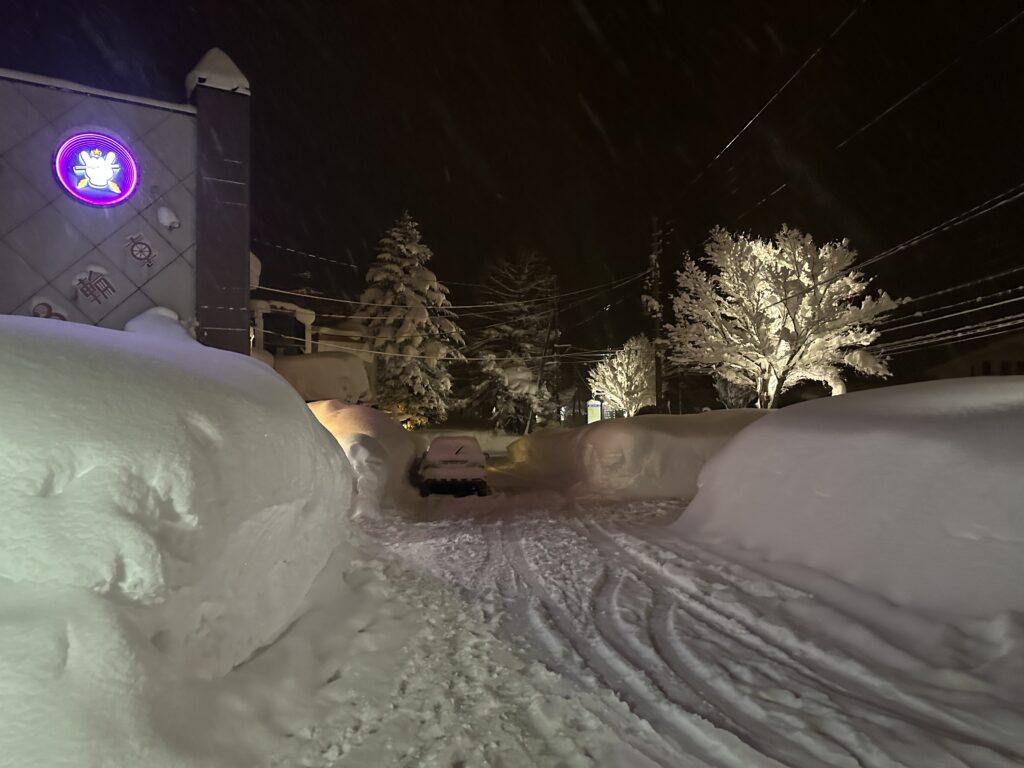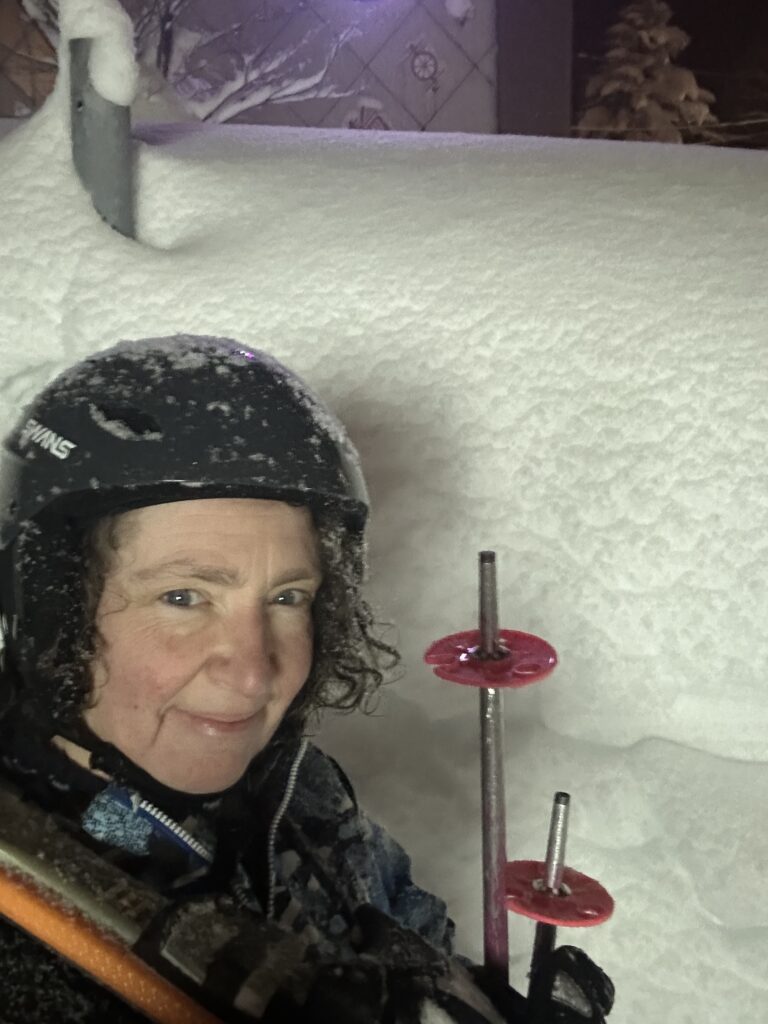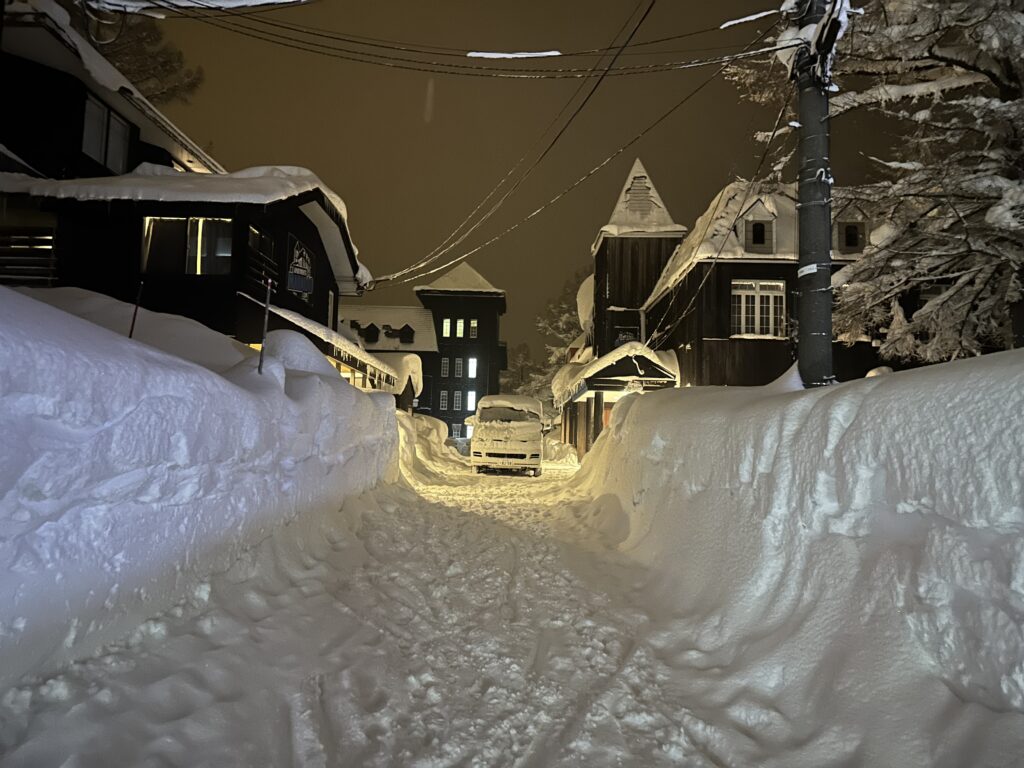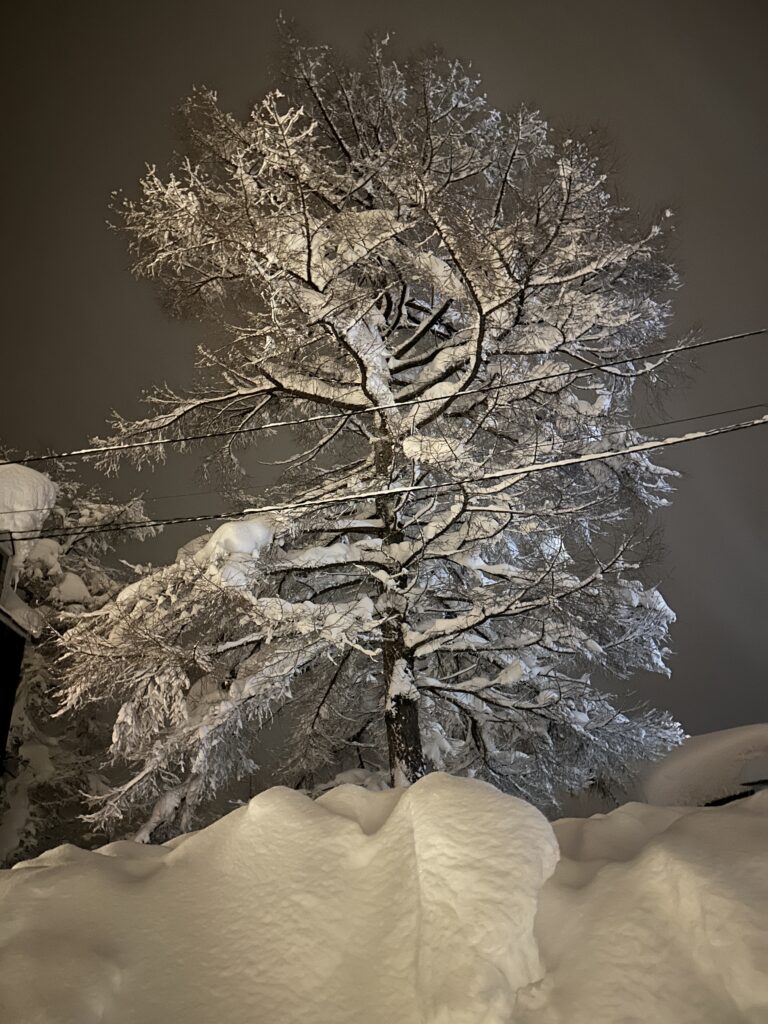January 3rd, 2024
We left the fish market to resume Erez’s quest to replace the Ditto Pokémon stuffy he left in Winnipeg by accident. We tried in Kyoto but they were sold out. We went to two different Pokémon Centres over the past two days in Tokyo only to find them closed for New Year’s Holidays on both Jan 1st and 2nd. We returned to the one in Nihonbashi as it is apparently the biggest one in Japan. Even though they were also sold out, the kids still managed to spend a lot of time inside. Aubrey and I spent a long time sitting on the floor by the elevators, until a security guard ushered us to stand up. One pet peeve about Japan: except in a park or sometimes inside a subway station, or the rare train waiting area, or most of the time in a restaurant, there are no benches and you are never allowed to sit down. Still, Aubrey read his book and I caught up on the blog. The store was PACKED and we had no desire to be in there.

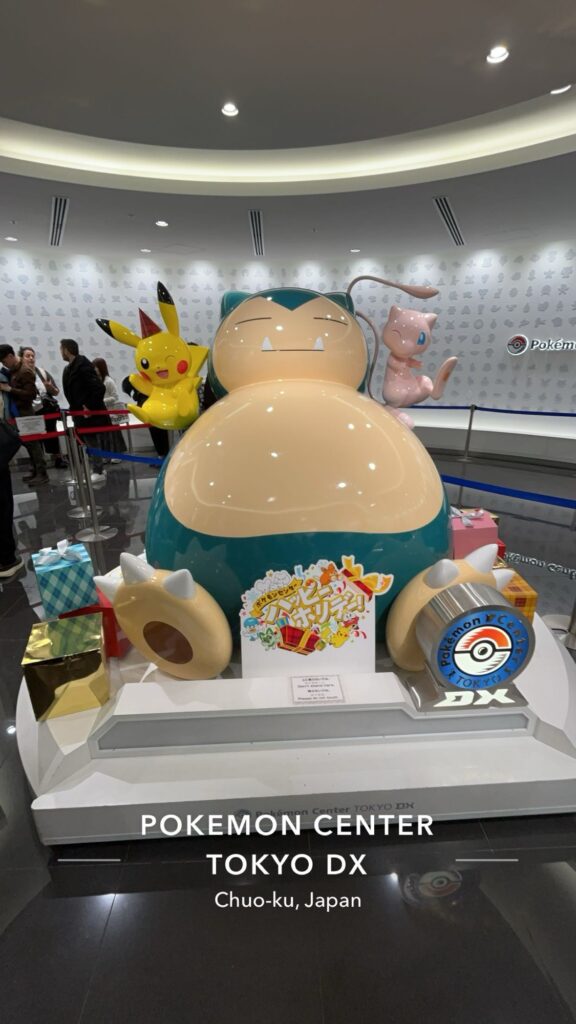
When the boys finally emerged from the Pokémon Centre, Erez decided he needed to go to yet another Pokémon Centre to look for a Ditto plushy, just in case it was not sold out there as well. Kerrie decided to go with him. And, of course, they were also sold out.
The rest of us headed to Ueno so Noam could go to a store called “The Loft” to pick up some figurines for his friend. Unfortunately, the store and the entire building that housed the store was also closed for the New Year’s holiday period. We then headed to Akihabara – Electric Town.
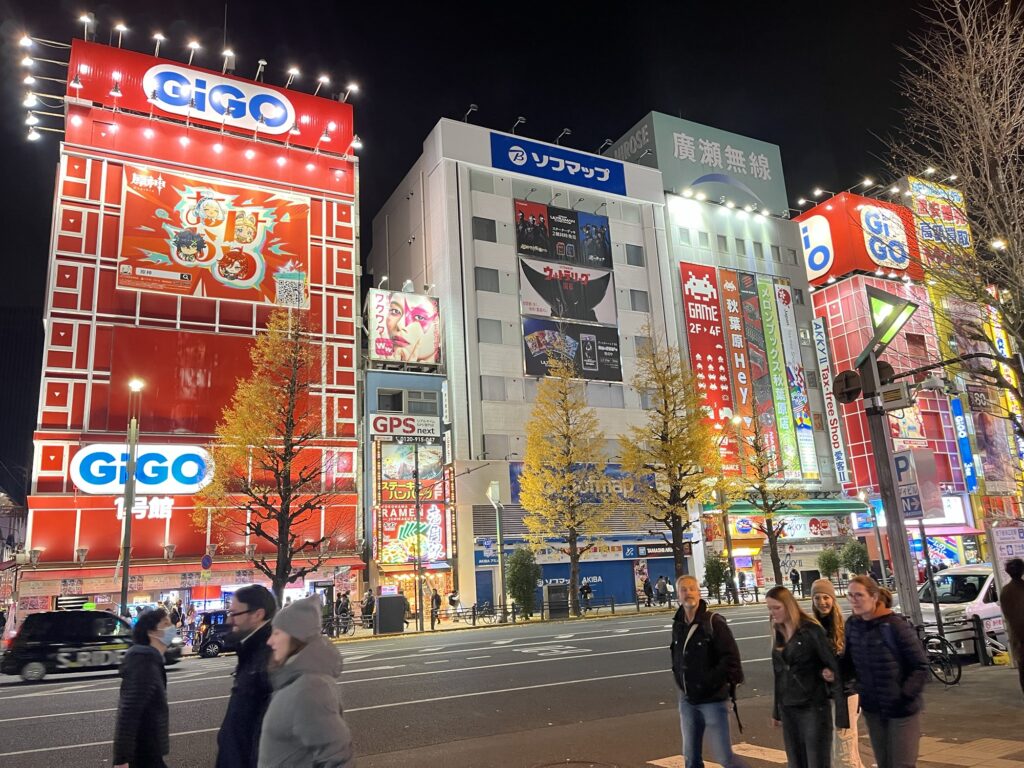
When I lived here in 1995/96, it was the place to get electronics of all kinds; I personally went there to buy a fax machine. Yes, you read that right: a fax machine. I am that old. Nowadays, you can still get electronics, but it is THE place for all things having to do with Anime and video games and Pokémon.
The boys walked into one of the first buildings we saw, Radio Kaikan, and then they didn’t emerge for a couple of hours. They were slowly making their way through the 10 floors. In the meantime, Aubrey and I walked around and scoped out some dinner options.
Teva and Mae had enough of Radio Kaikan and met up with us, while Erez and Kerrie joined Noam and Teva in the store. Eventually we met up for a two stage dinner.
First course was at a place called Shogun Burger, which was meant to be the appetizer. People shared the wagyu burgers which won first place at the National Burger Competition in Japan in 2022 and also in the top 10 at an international burger competition. It was a hit with our group!
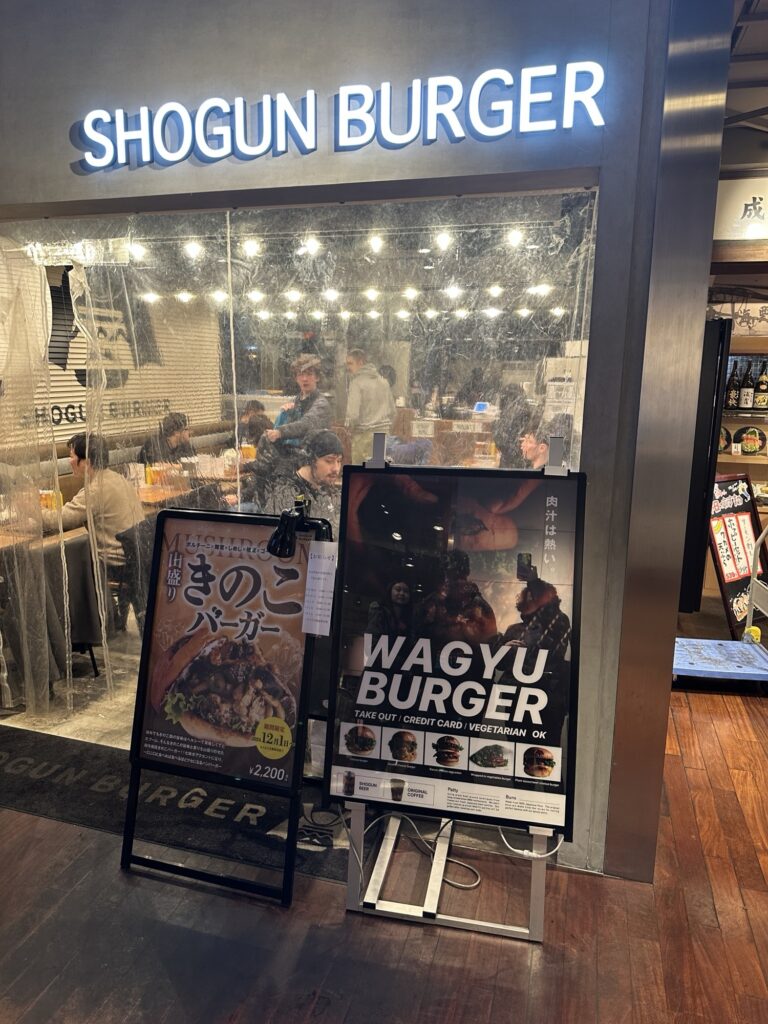
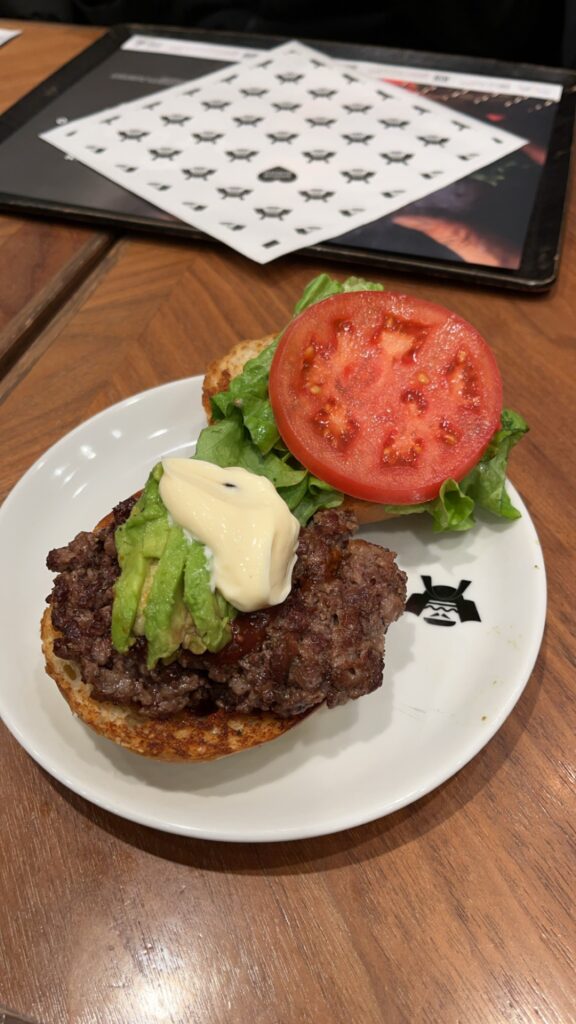
Next was a sushi restaurant called Aburi. Aburi is the term for “torched” sushi, but you can order any type of sushi. There were iPads and it was delivered to our table 4 plates at a time. It used to be a conveyor belt sushi place before the pandemic.
We all enjoyed our meal immensely. I have to say that having the burger appetizer did not slow the boys down one bit. They ate the same amount of sushi as always.
The name Aburi also happens to be how you would pronounce Aubrey’s name in Japanese, so I of course had to take a photo of him with the sign.
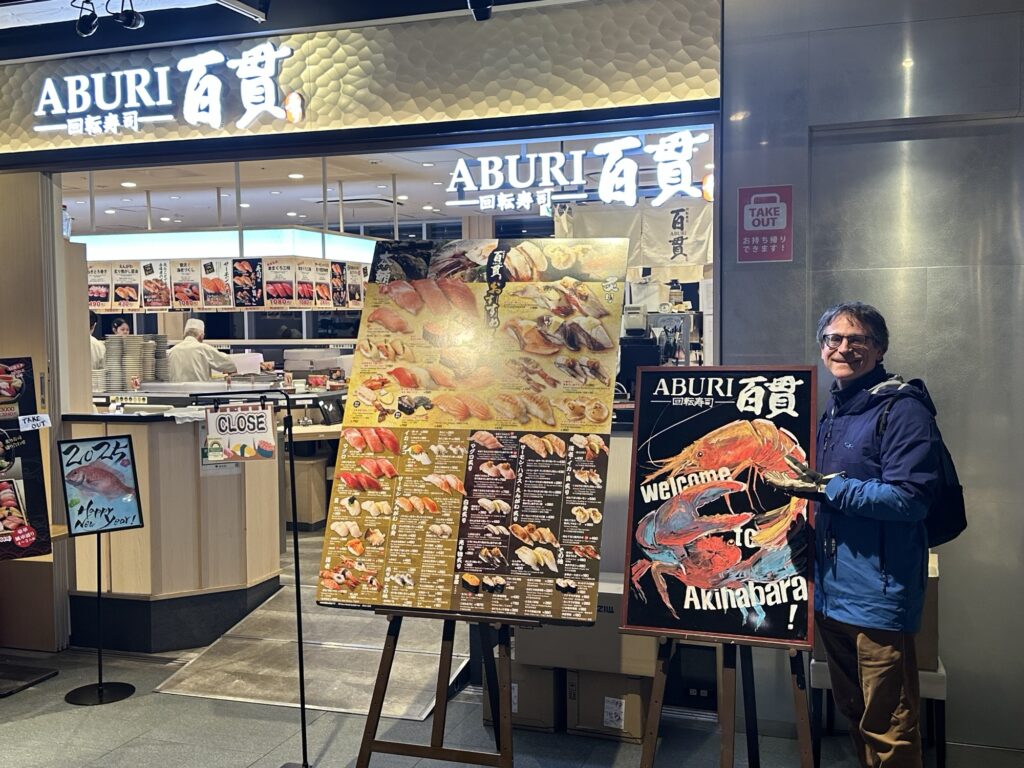
Our server was very amused by our family for several reasons: 1) we insisted on all of us squishing into one booth instead of splitting up; 2) I think they were impressed at how much we ate; 3) She was interested in the fact that we were such a big family. She remarked that Aubrey was very handsome. I was impressed that I was able to understand when I overheard her talking to some of the other staff as well as have a small conversation with her only in Japanese.
We thought we were heading home from there, but we stopped in another 10 story building called Game Panic to see the claw machines. The first machine we walked up to had a machine with “Ditto” stuffies! Not exactly like the ones Erez was looking for, but it was a reasonable replacement. He only spent around 700 yen and he got it! We all cheered!
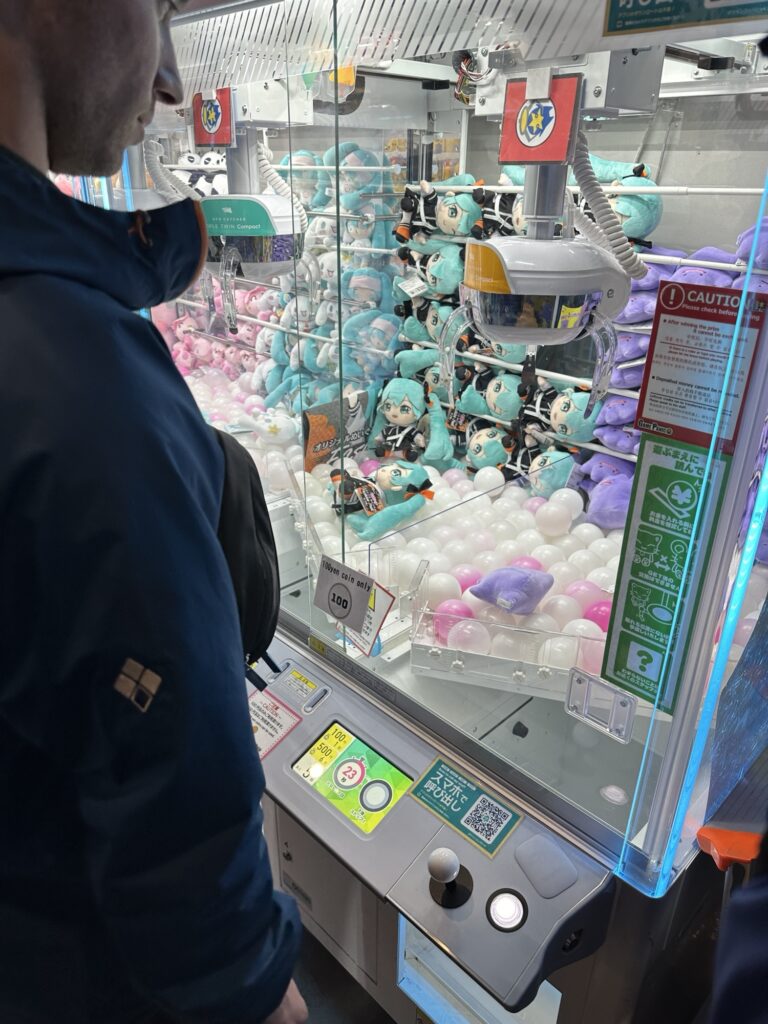
We then made our way through the rest of the building. There were 4 small floors of these claw machines, then 3 floors of “music” video games. We played Dance Dance Revolution 20th Anniversary edition. I did reasonably well on the first two beginner levels. Noam and Erez did better on the higher levels.
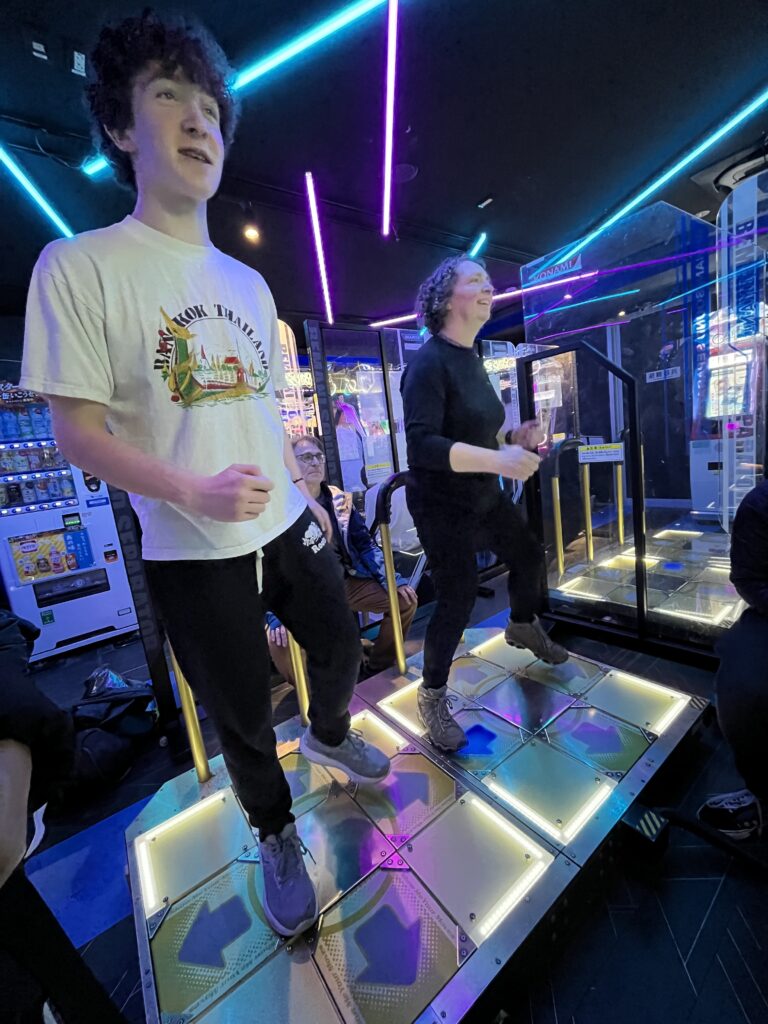
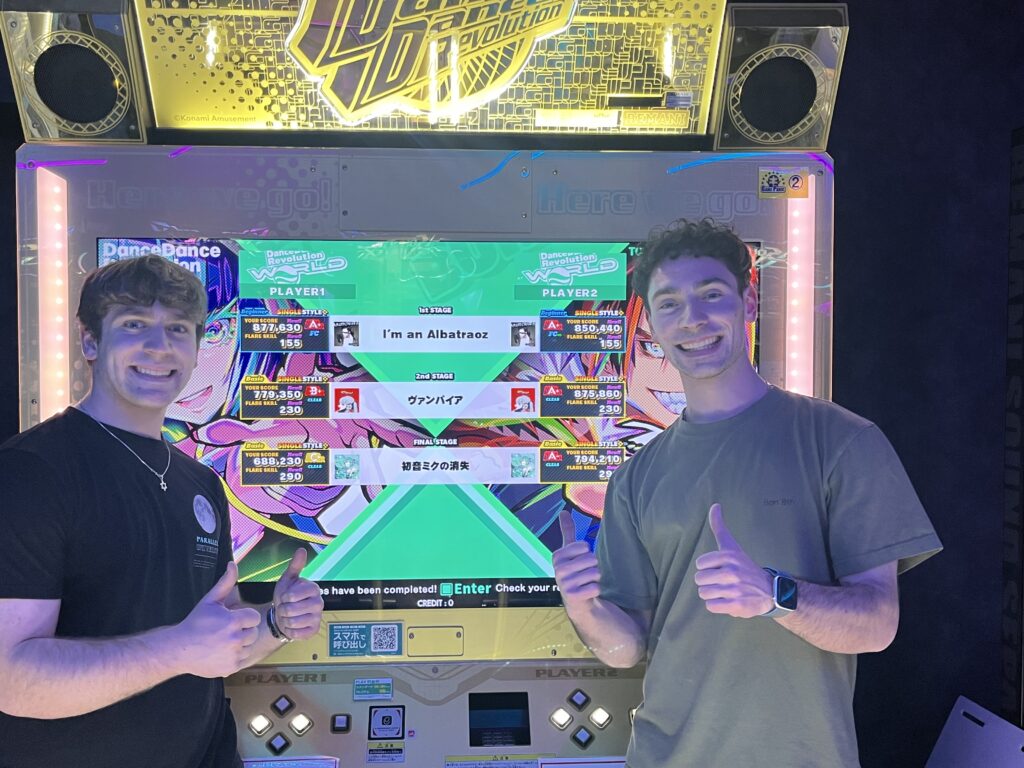
After DDR, Zev tried his luck getting a late figurine from another claw machines. We spent about $20 for Zev and he didn’t end up getting it. It did keep us all entertained for a long time though, figuring out strategies. He had watched another couple spend ALOT of money and not get it, so he continued where they left off. When he gave up, the other couple came back – it turned out they went to an ATM to get more money. In the end, the staff took pity on them, opened the machine and repositioned the box. Unfortunately he didn’t reposition it properly and it still didn’t work. The staff repositioned it one more time and they got the prize. Everyone cheered.
Our theory is that he had already spent way more than it was worth, and they didn’t want him leaving so unhappy that he wouldn’t come back.
We headed back to our house quite late and then it was time to pack. We didn’t get to sleep until after 2 am once again.
I can’t believe that we leave tomorrow…

